June #13: Solstice Shenanigans
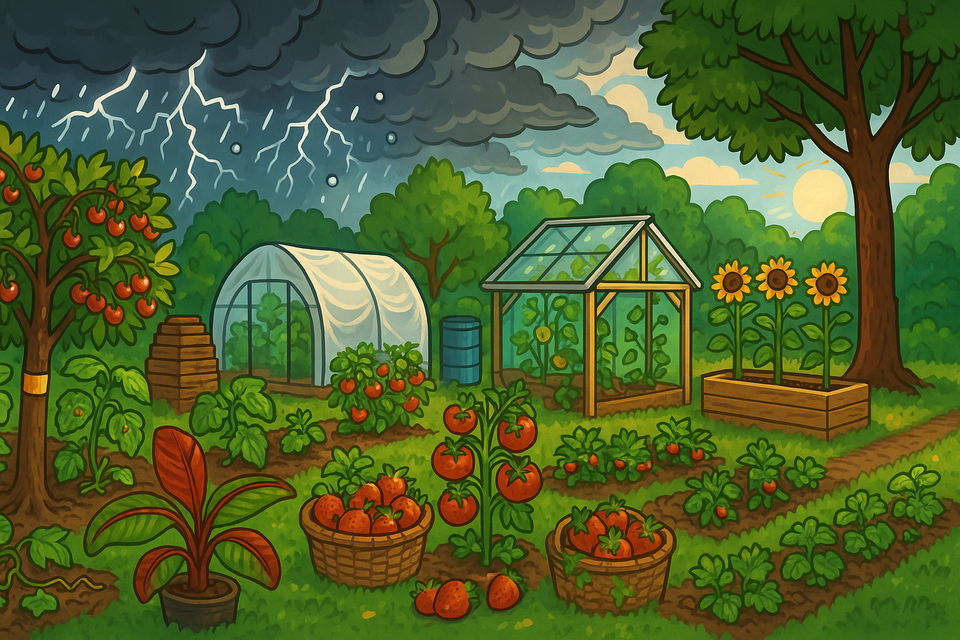
This truly is a very challenging season. The cold month of May set everything back by about three weeks at the start of June. And then June tried to make up for it, not just with higher temperatures but also with an overload of rain. In the first ten days, we got soaked. Several extreme thunderstorm warnings hit, including one that was predicted to cut directly through my garden. That one had a high chance of hail up to 5 cm in size. I knew that could break glass, so I had to weather-proof my greenhouse and shield my other plants quickly. There's no way I'm letting some stupid ice ruin my already struggling garden.
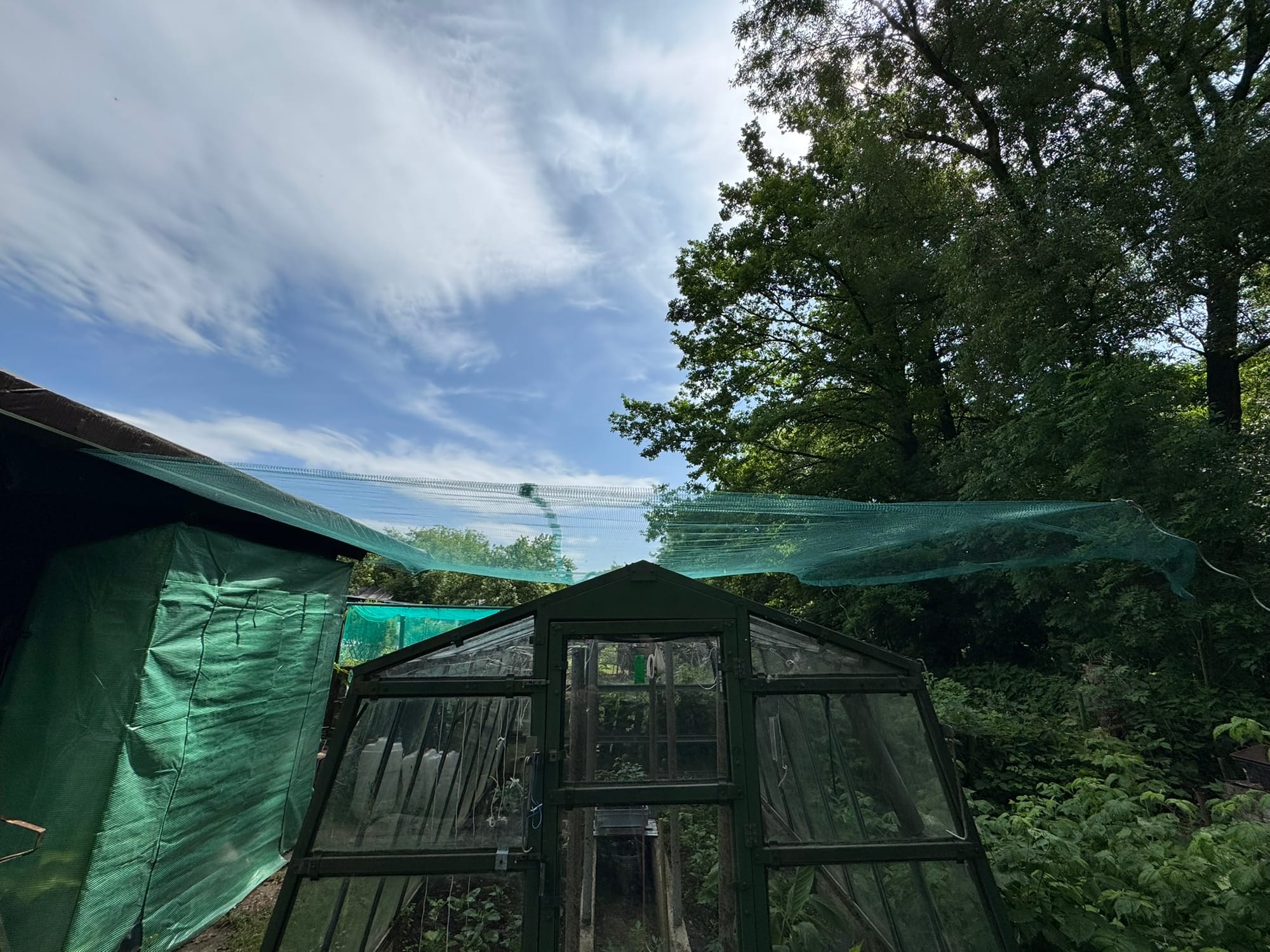
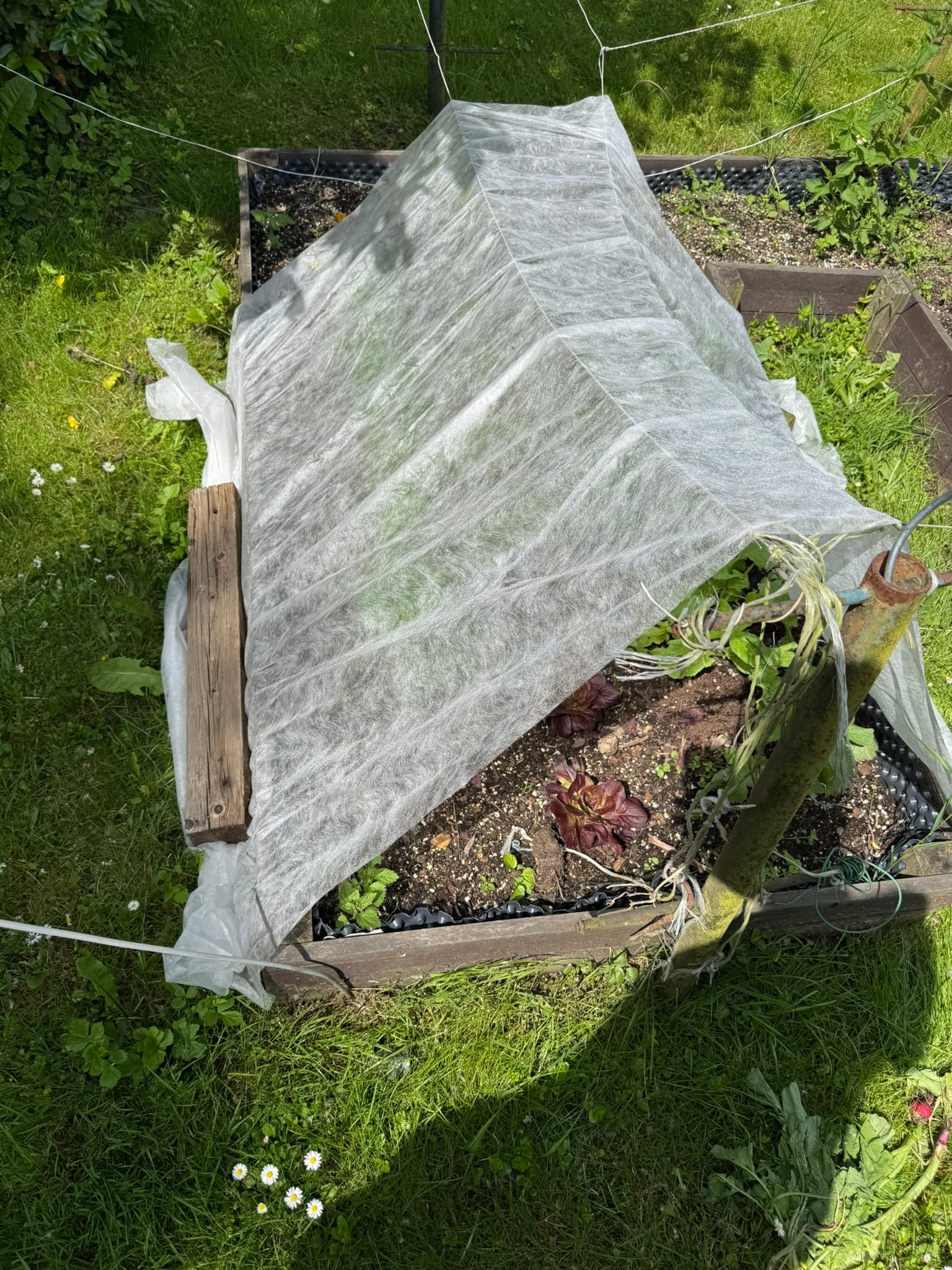
Thankfully, the storm ended up being much weaker in terms of hail and wind. But it made up for that with constant lightning and thunder. That turned out to be lucky, because of my cherries.
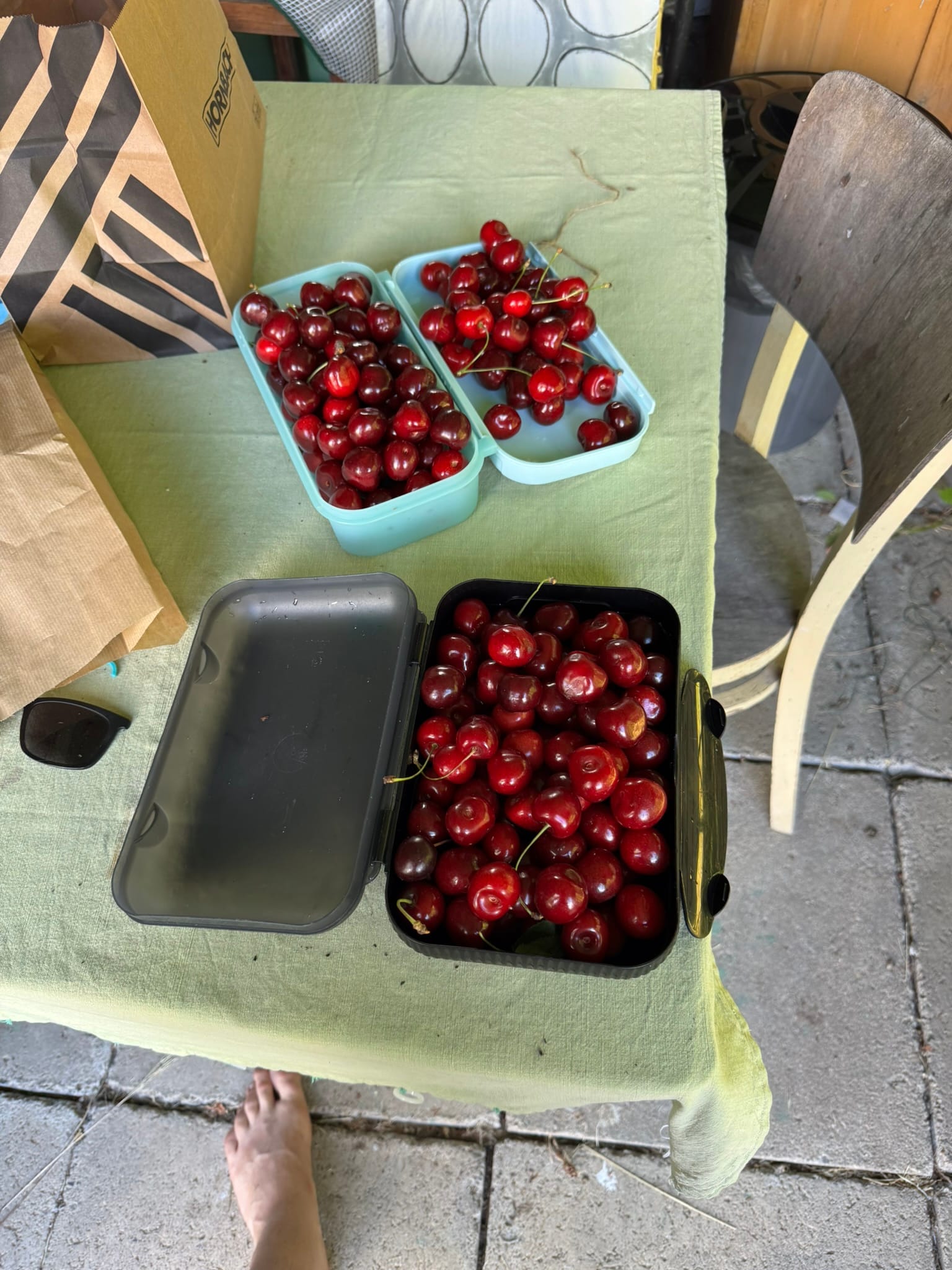
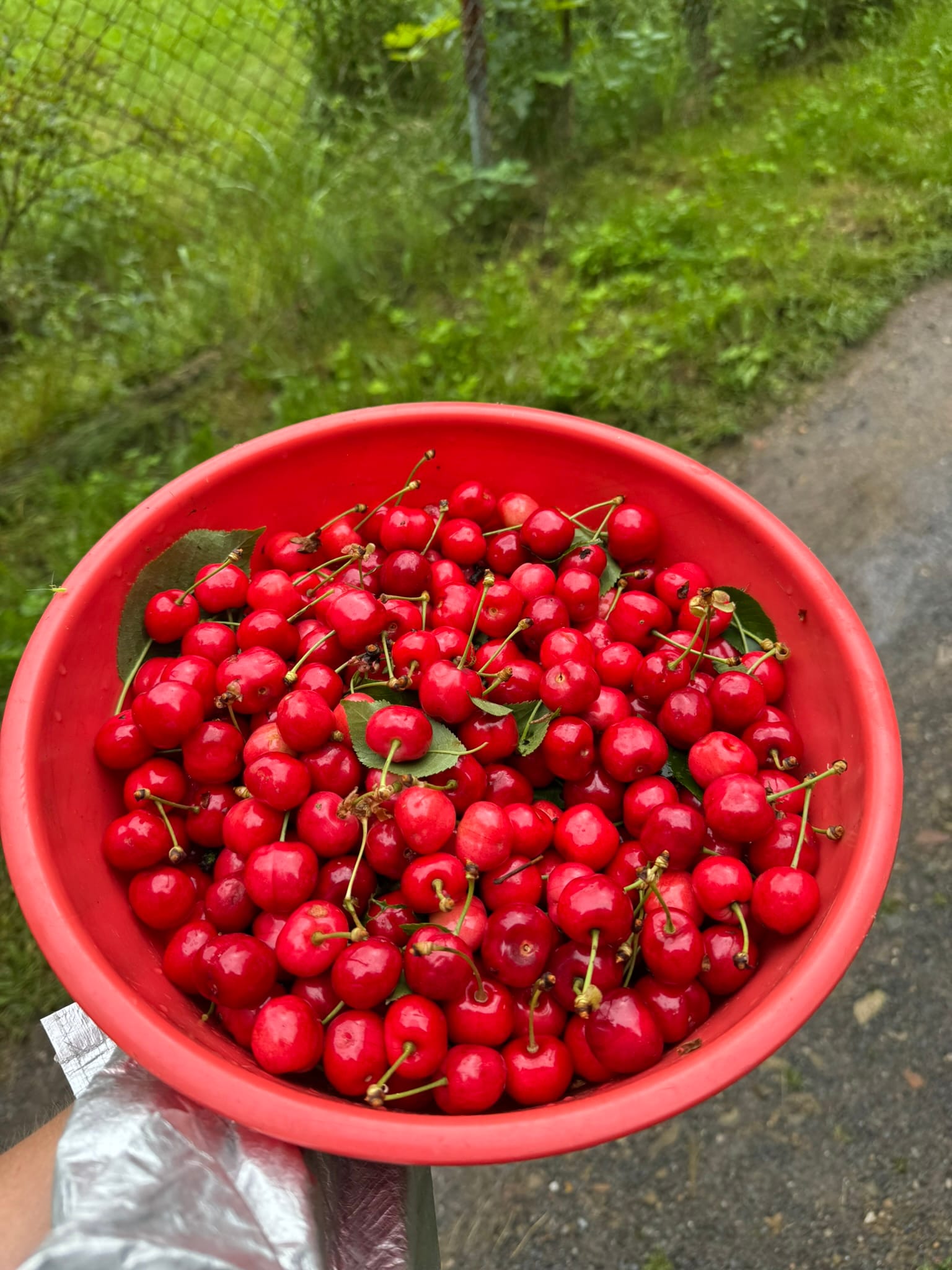
There were so many cherries this year, and I couldn't be happier. I froze, canned, and made jam. I ate a shit-ton of them… so many that I gave myself a bellyache multiple times. And then I ate more.
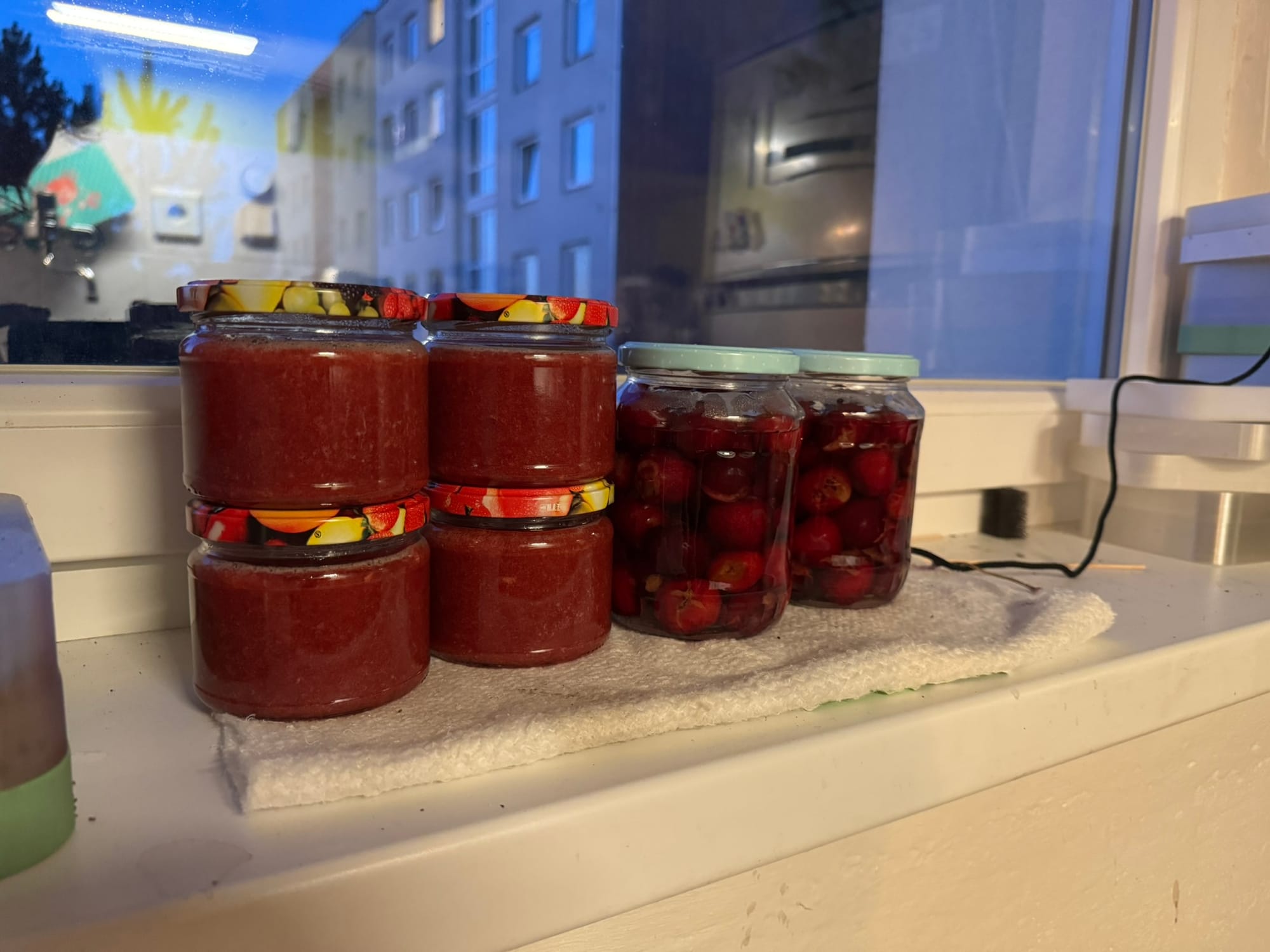
I also got some hand-picked strawberries from a local farm. Yes, I did. And of course, I froze, canned, and made jam from those too. I'm all set for the winter now. Though let's be honest, I'll probably run out by November and then cry.

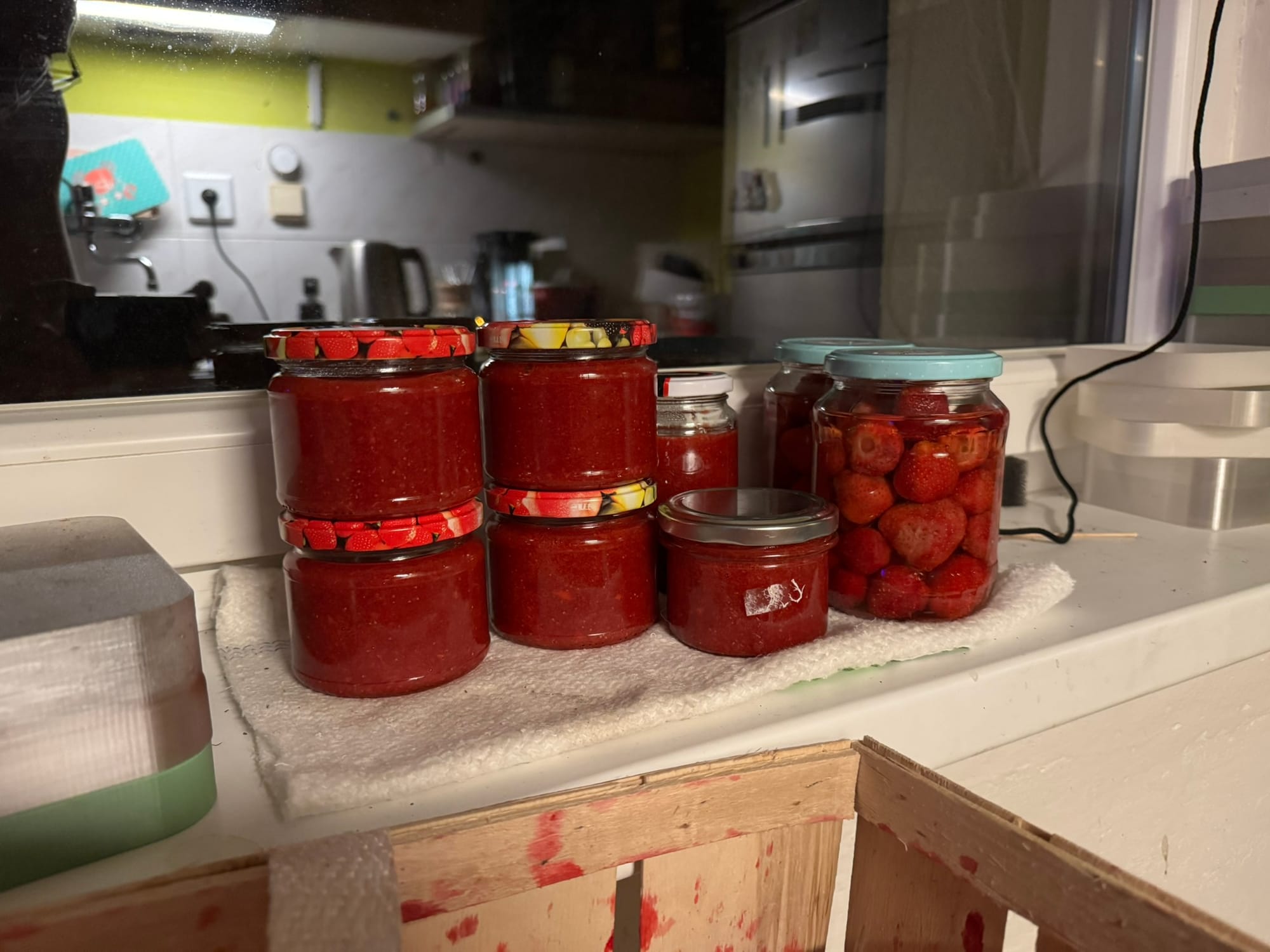
But wait, there's more. So much more. Pests! This year is crawling with them. I've spent the entire month trying to get rid of ants. Normally, I don't mind them, they aerate the soil and kill other pests. But they also carry aphids. Worse, they farm them for their sweet waste and scare off pollinators. I tried several methods to manage the ants, and eventually settled on two: sticky tape at the base of trees and bushes, and parasitic nematodes.
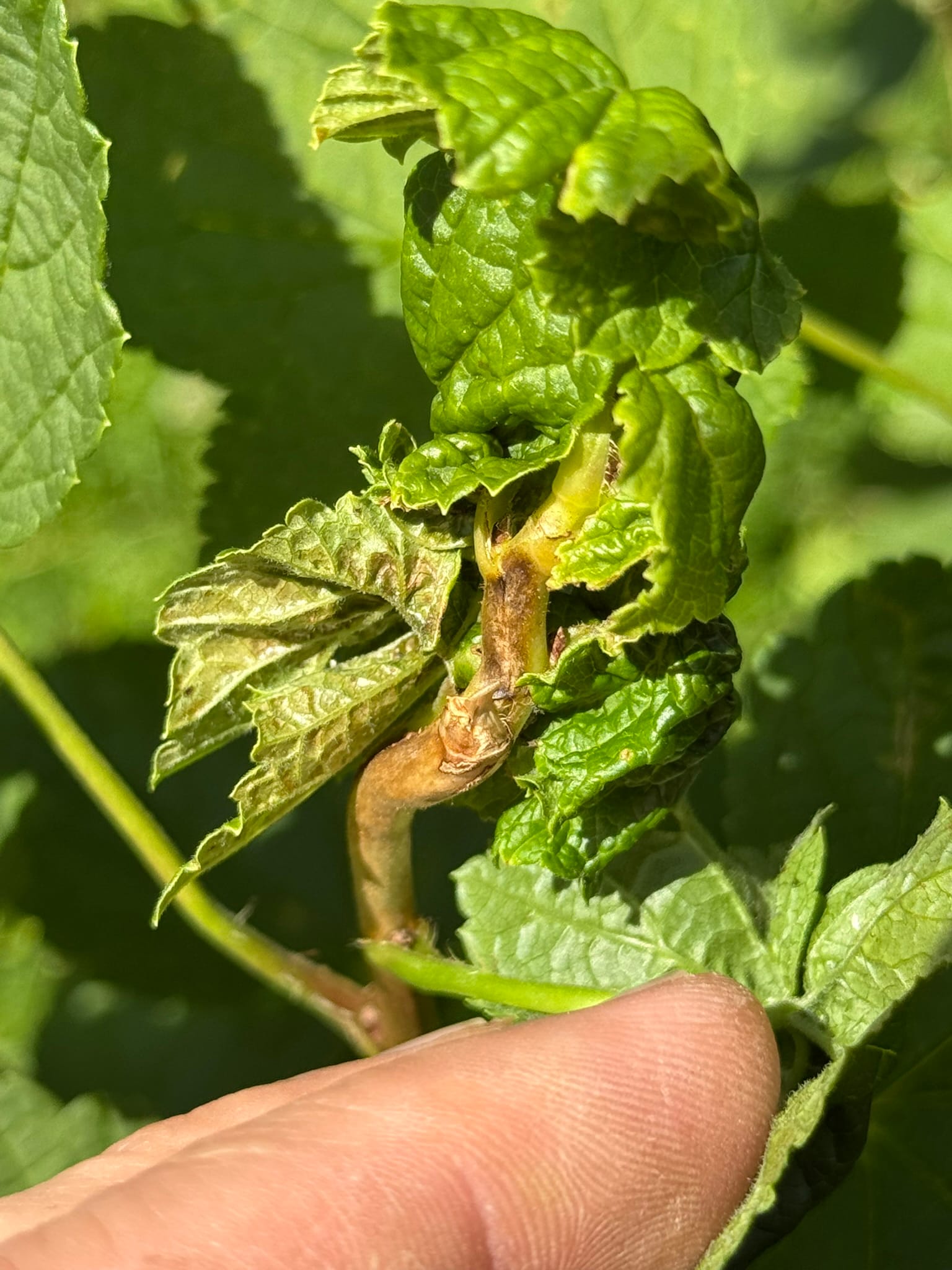
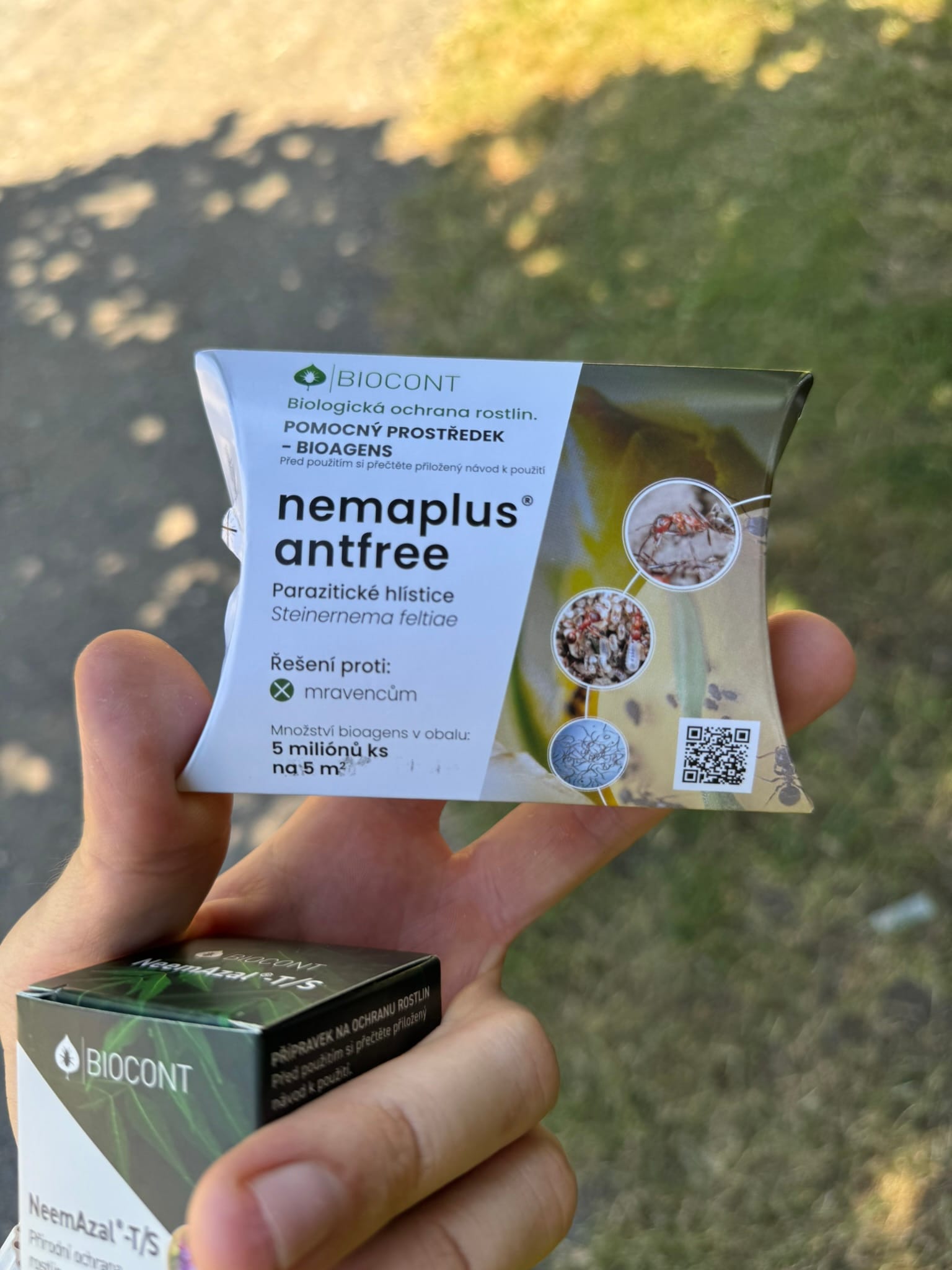
Damaged tip from aphids
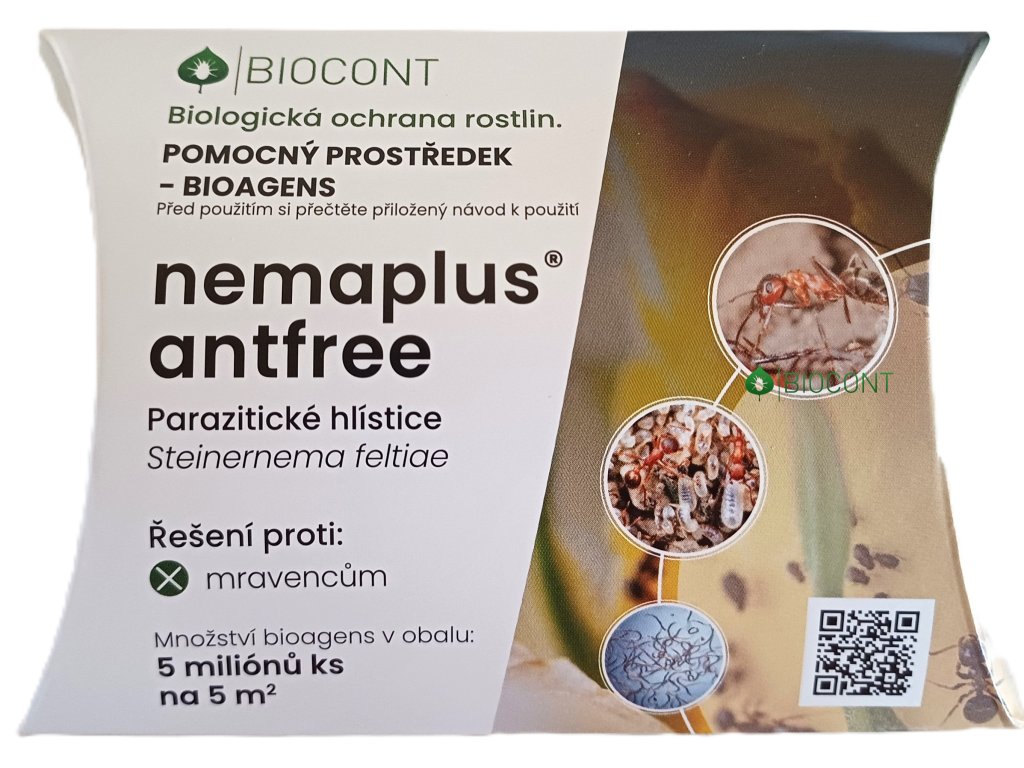
But ants and aphids aren't even the worst this year. Aphids are actually in the minority. This is the year of the spider mite. They're everywhere, on cucumbers, peppers, melons. And I hate them more than aphids. Aphids go for fresh growth. Spider mites don't care. They damage everything, ruin mature leaves, and stunt the growth of new ones. I've already lost several plants, and the rest smell like Neem oil.
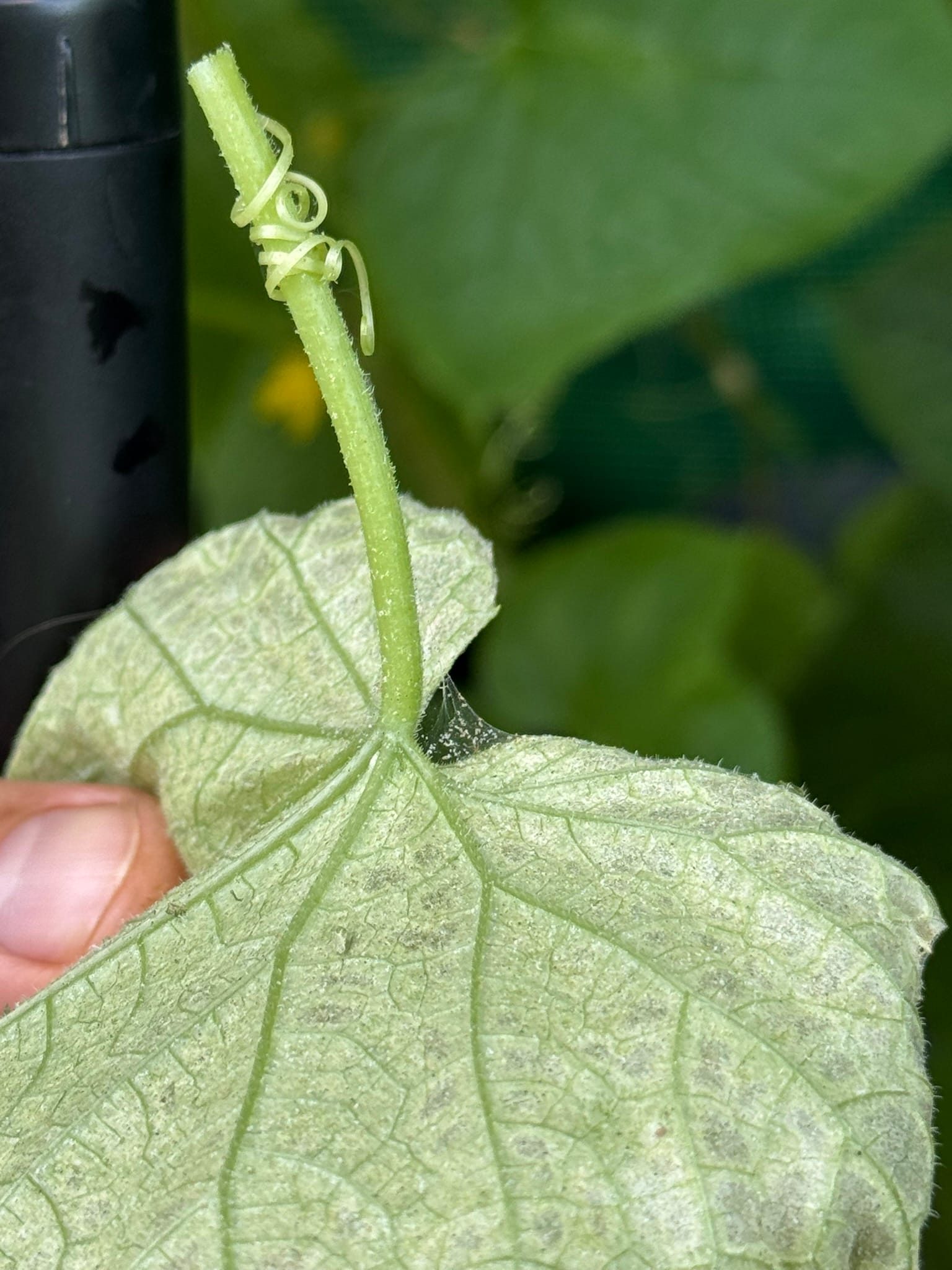
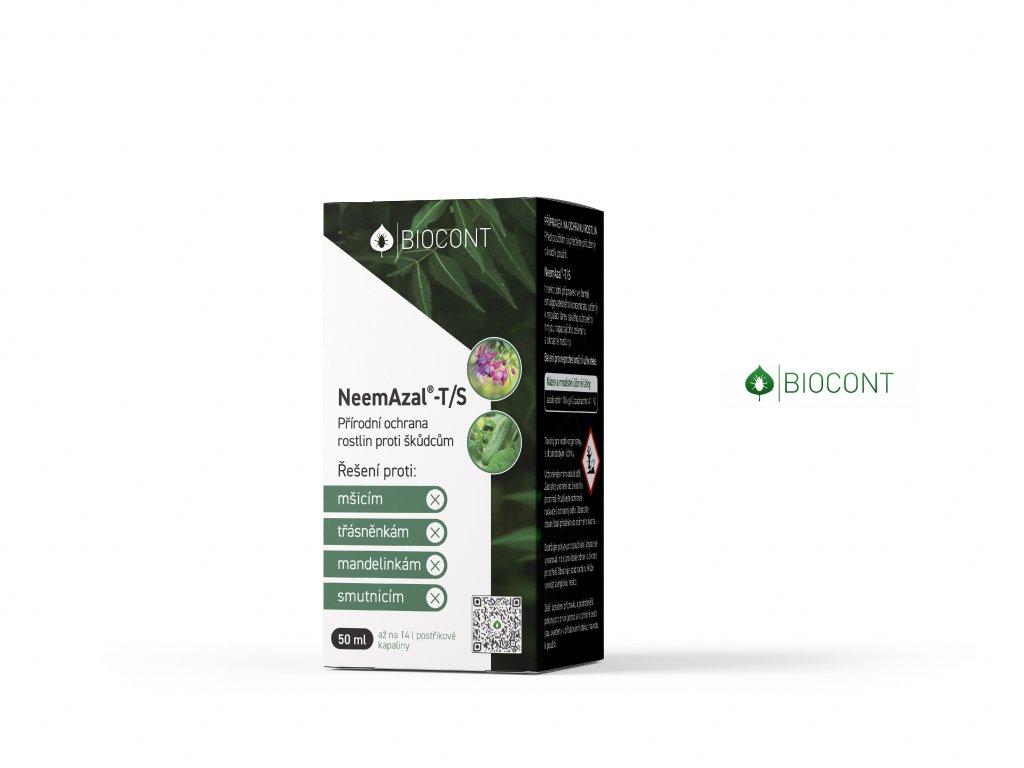
Still, considering the circumstances, I'm reasonably happy with how the season is going. It's not great, but these challenges keep me focused and learning. Though enough with the coping. Let's get into it.
the ever-expanding real estate
I did it again. No regrets. I built another raised bed. I had this corrugated metal one in storage since March. It was on sale, and I grabbed it during a shopping spree. Thanks to some recent developments, I reclaimed a prime sunny spot. I wasn't sure what to plant there, but I had a bag of ecologically produced sunflower seeds from a fellow farming acquaintance. A few of those seeds ended up in the bed, neatly. Now it's a sunflower patch at least for now.
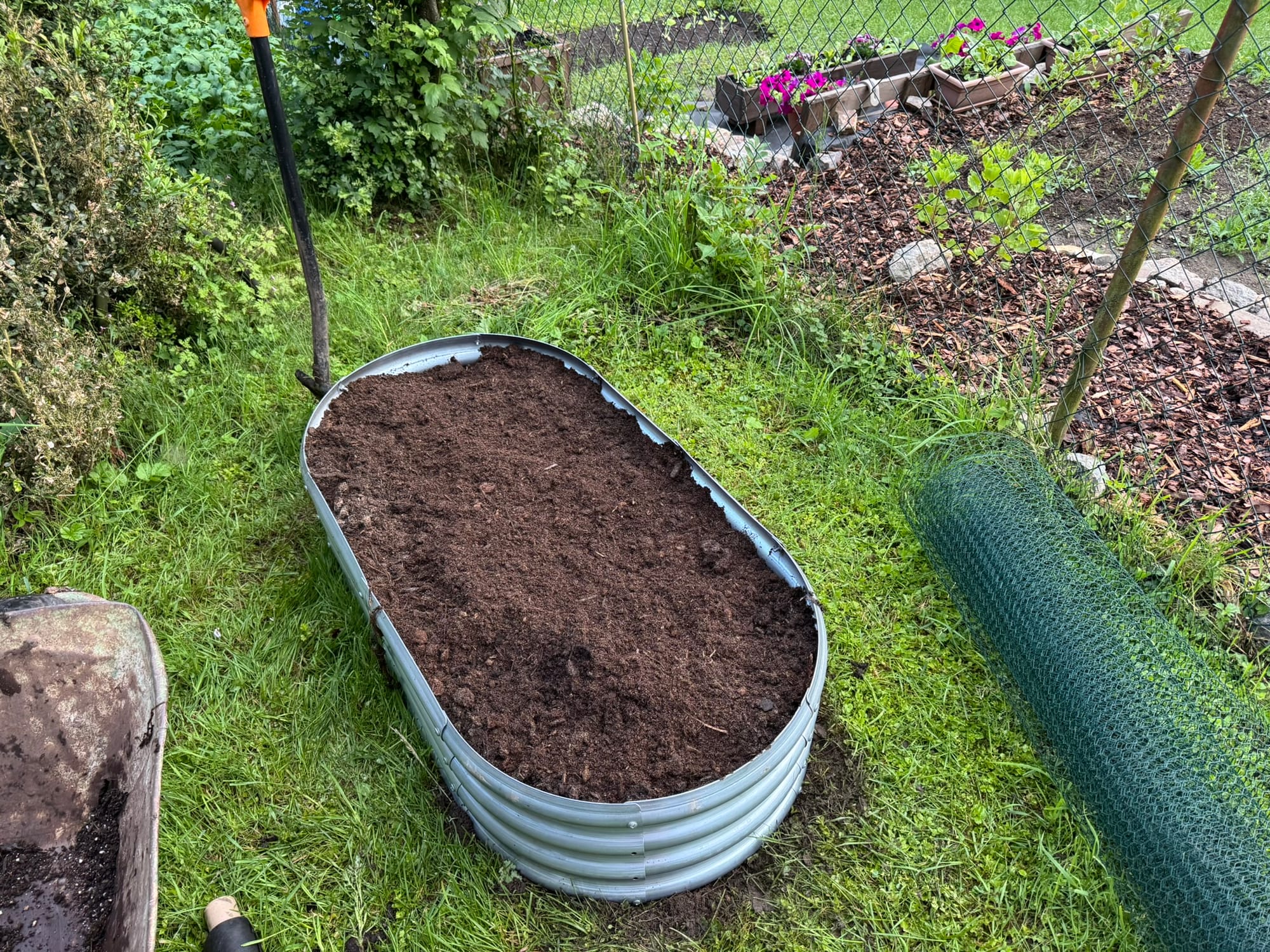
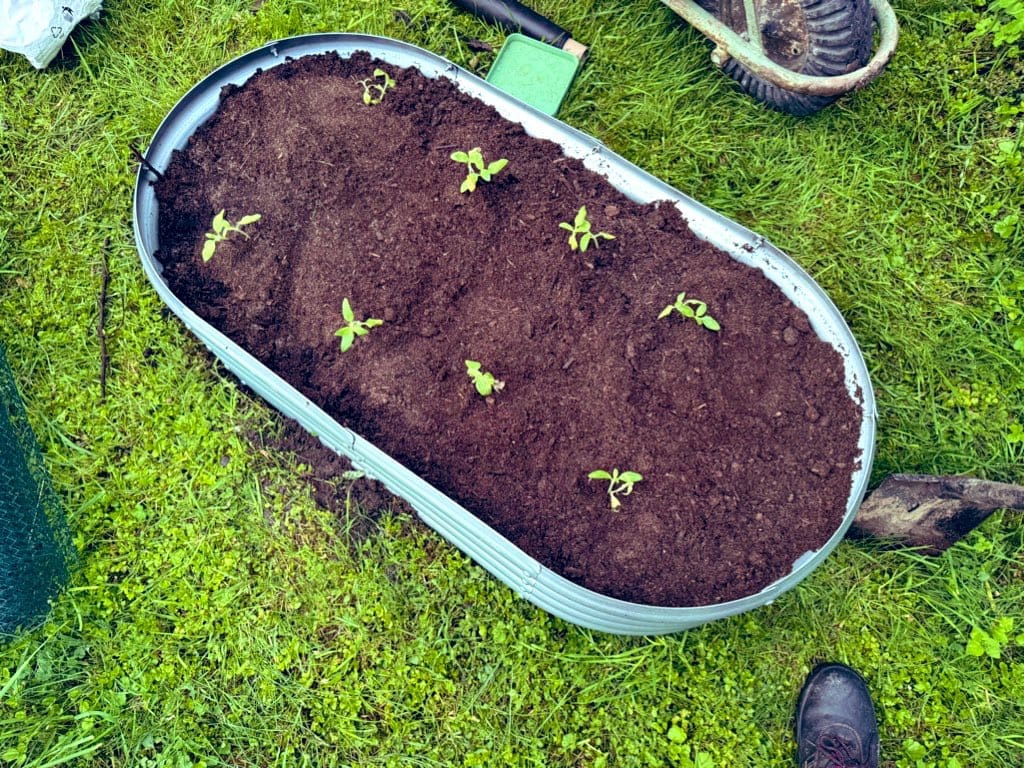
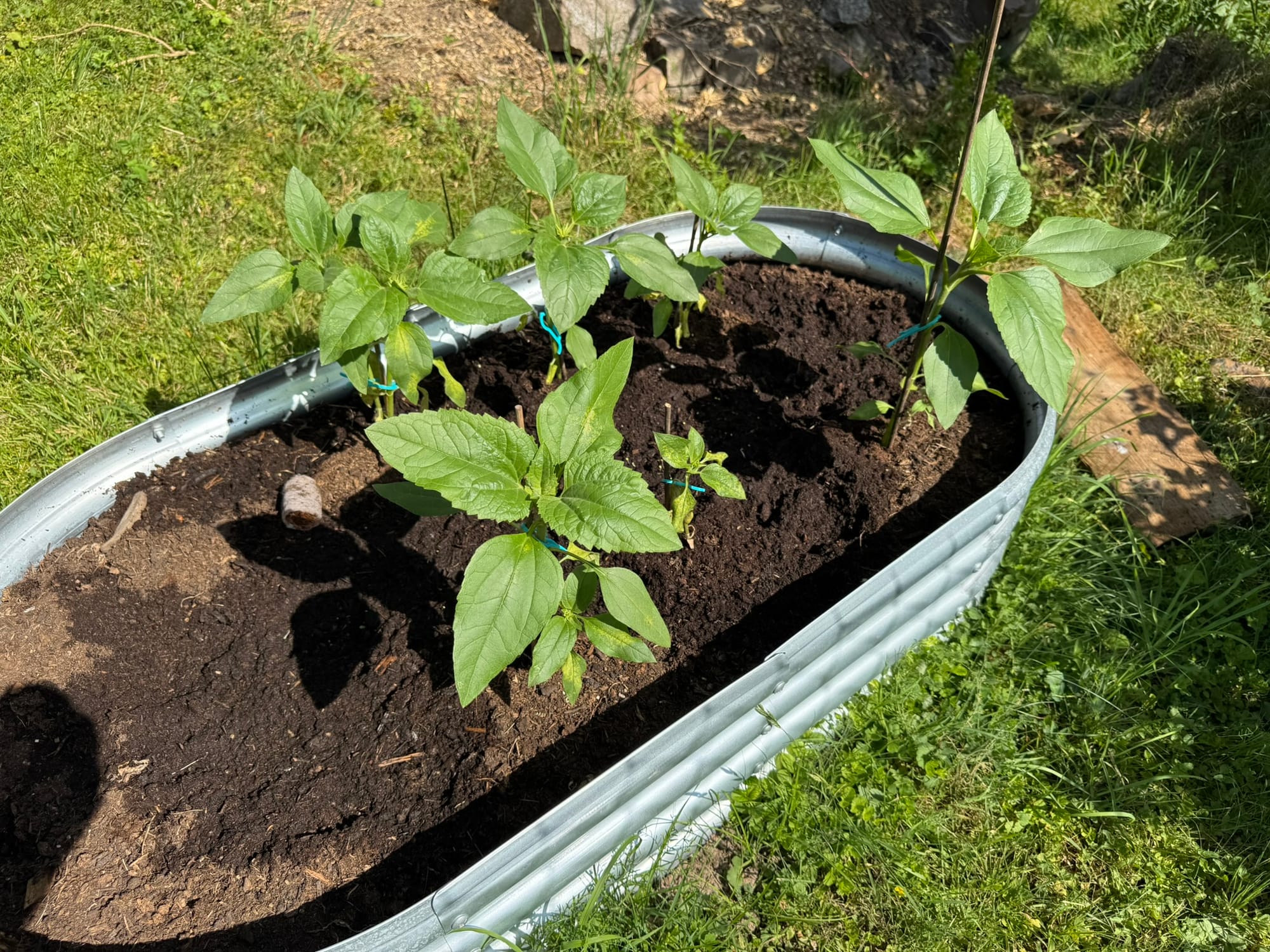
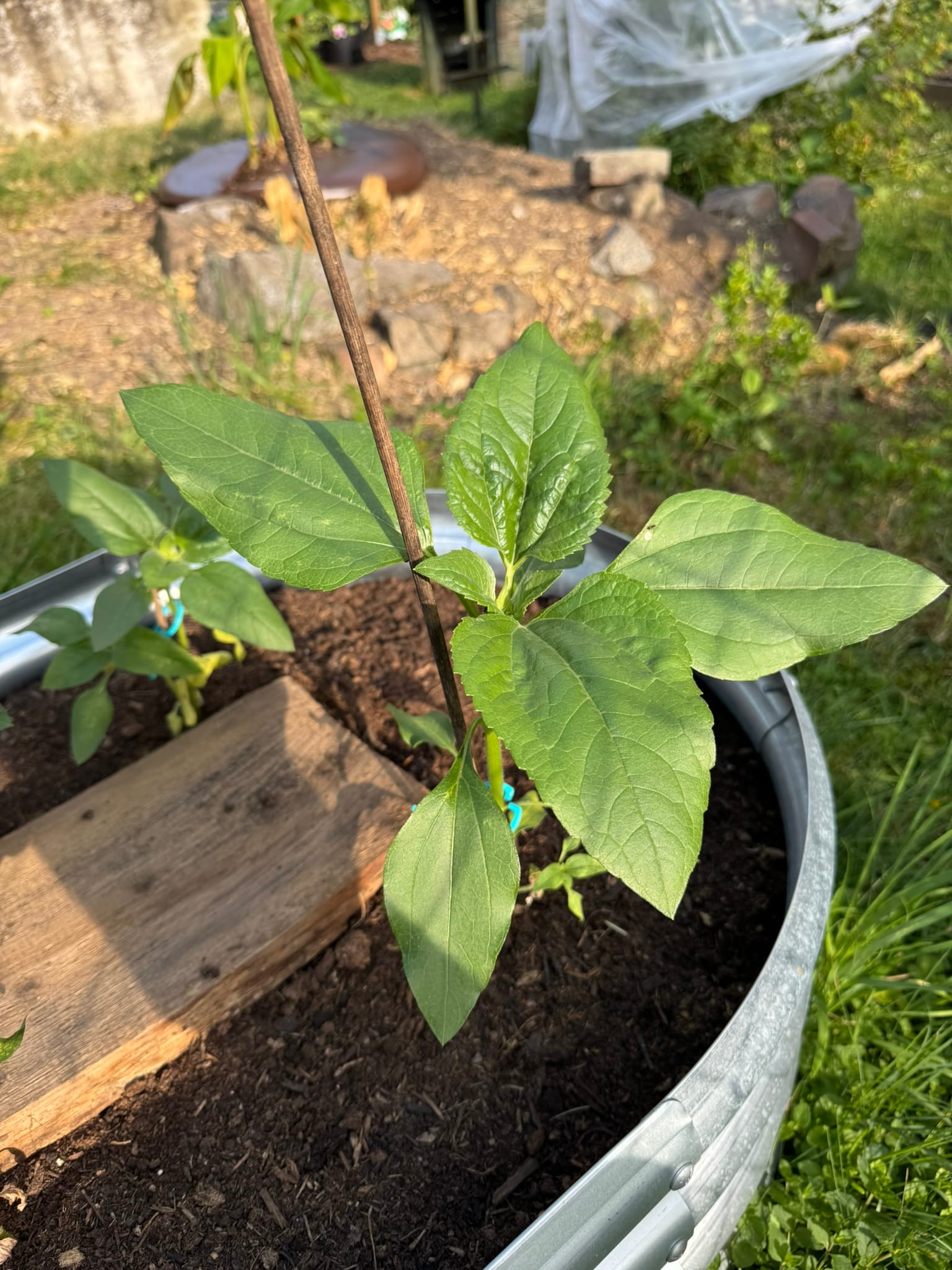
There were two other plants in there, but they got wiped out by some kind of wilting disease. That left an empty spot, and I've got some zucchini seedlings ready for transplanting into potato bags as a follow-up crop.
The "recent development" was murder. I got rid of a really ugly decorative bush. It was hogging a valuable sunny spot, and it wasn't even that decorative. Plus, it was shading my red currant bush.
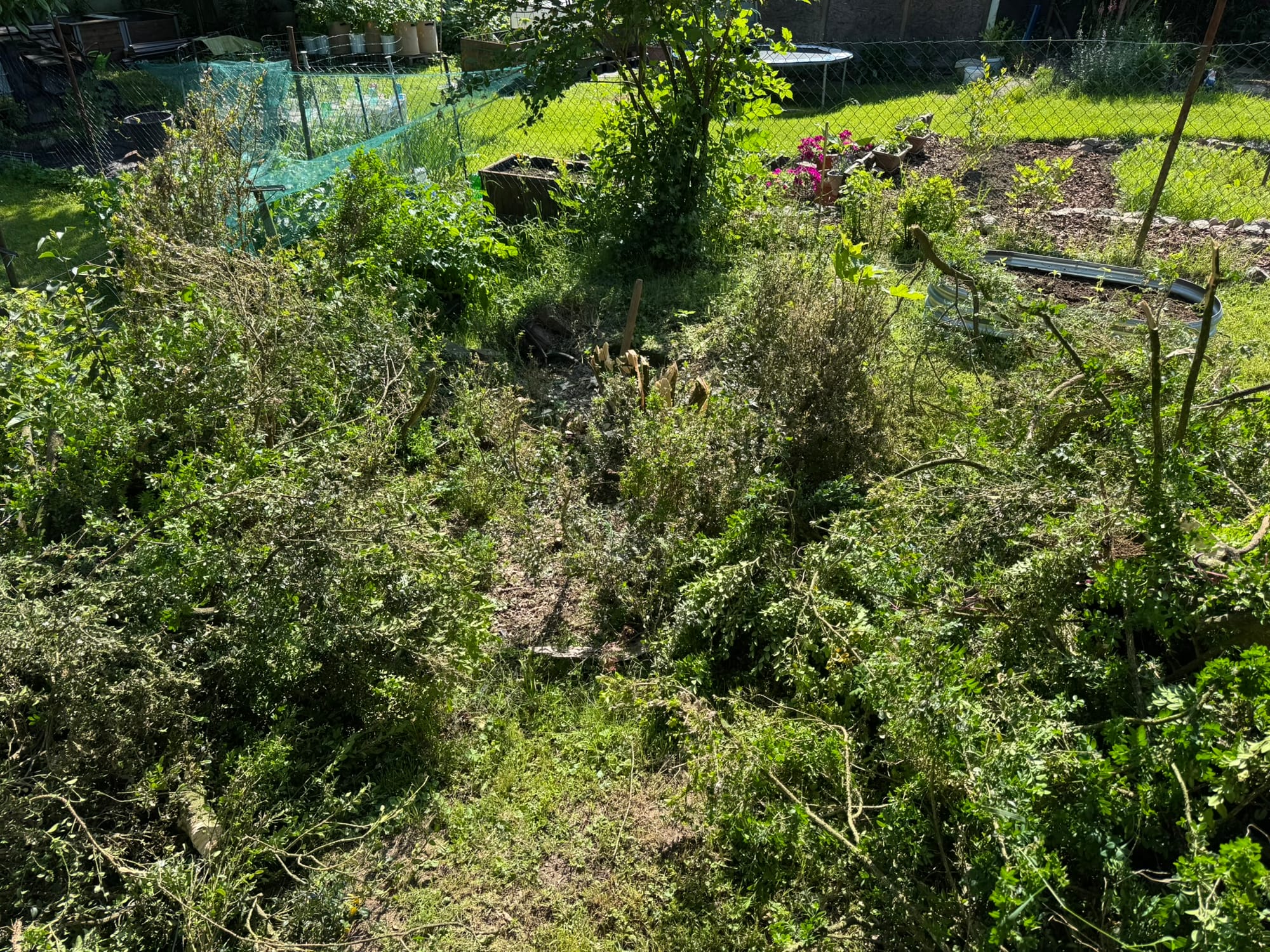
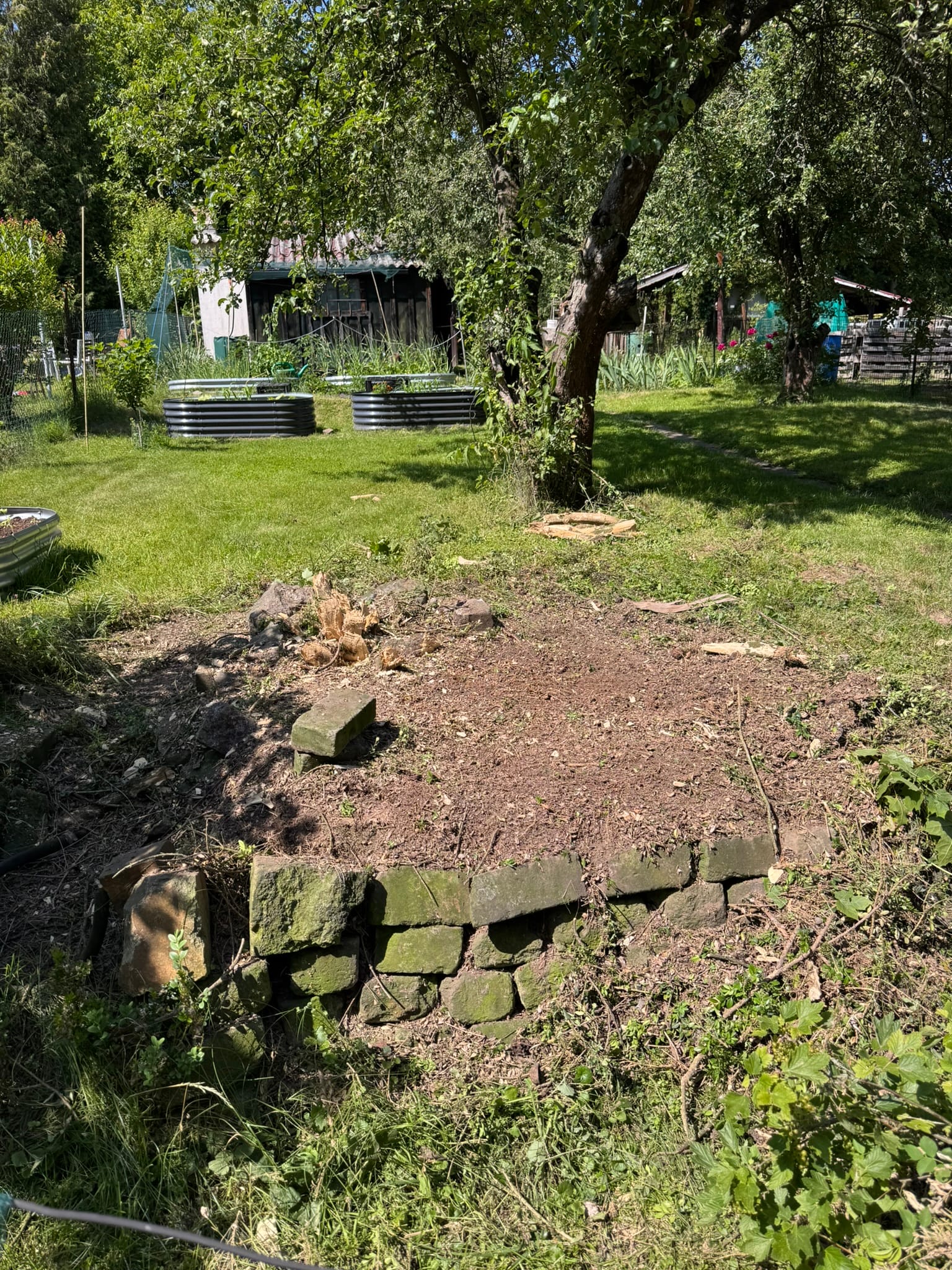
Originally, this was going to be a banana planting zone. But I went off the rails and bought, like, ten of them. Instead of digging, as I did with the others, I built a compost mound using perlite and organic matter I had taken from another raised bed. Then I added what can only be described as "an excessive amount of fertilizer", because the soil underneath is terrible. And of course, I had to stick in that "shitty" watering donut.
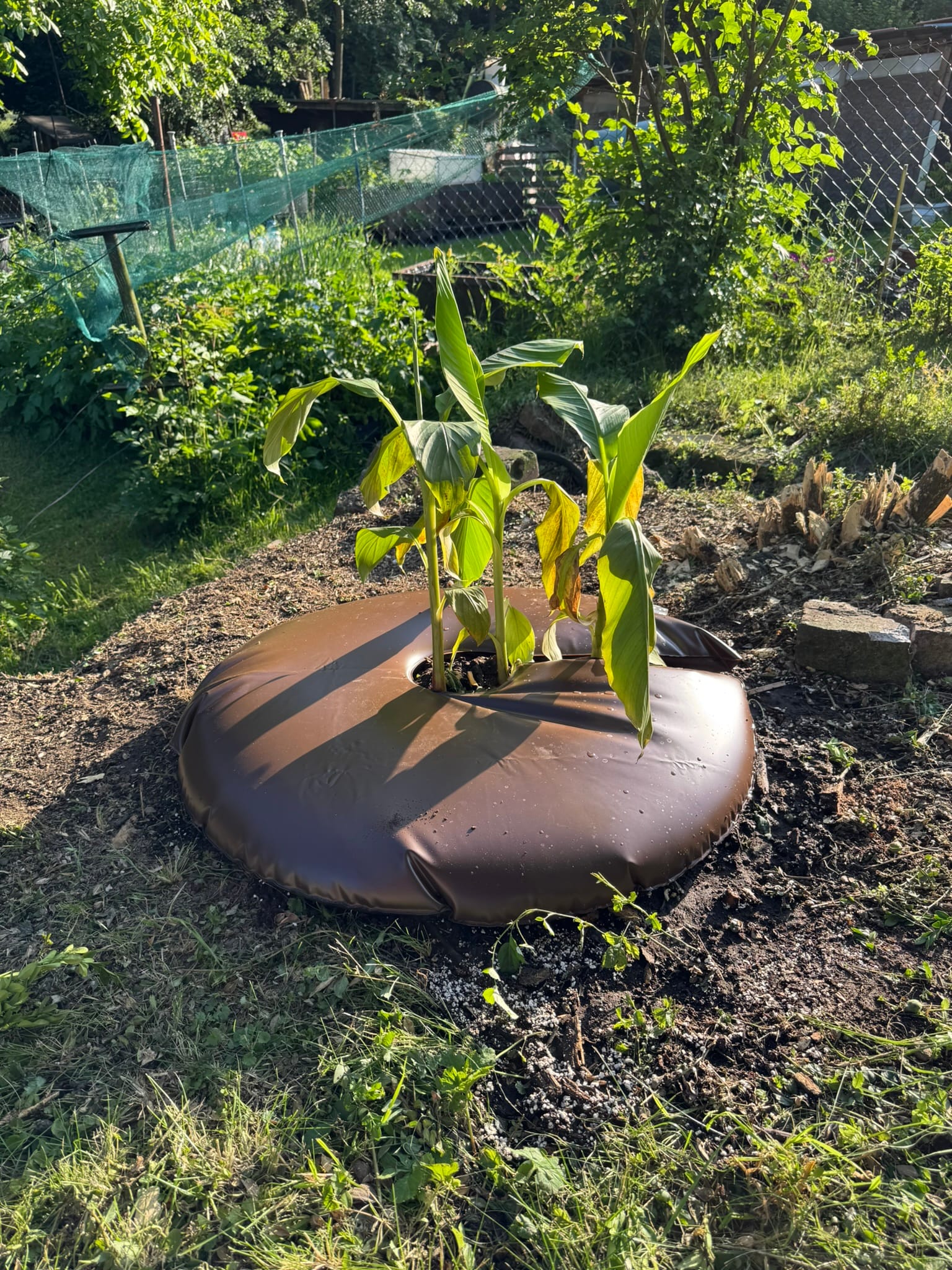
But that's not all. Earlier this season, I removed an old wood storage shed. Now the spot is finally done. First, I removed the broken, moldy wooden fence last month that blocked the early morning light. Then I drove long spikes into the ground and fastened four pillars to build a frame. I added a transparent polycarbonate roof and a small rain barrel as a finishing touch.
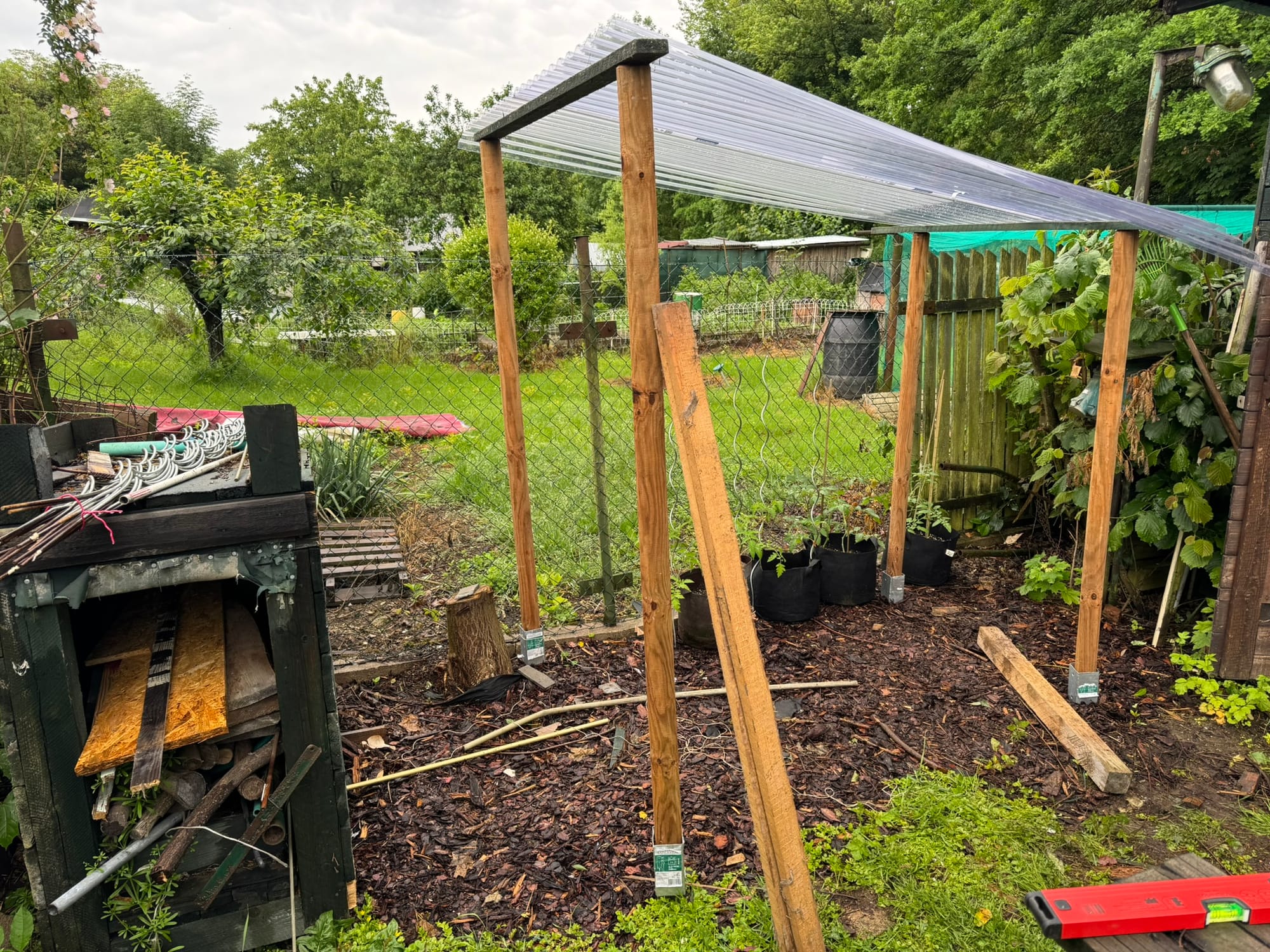
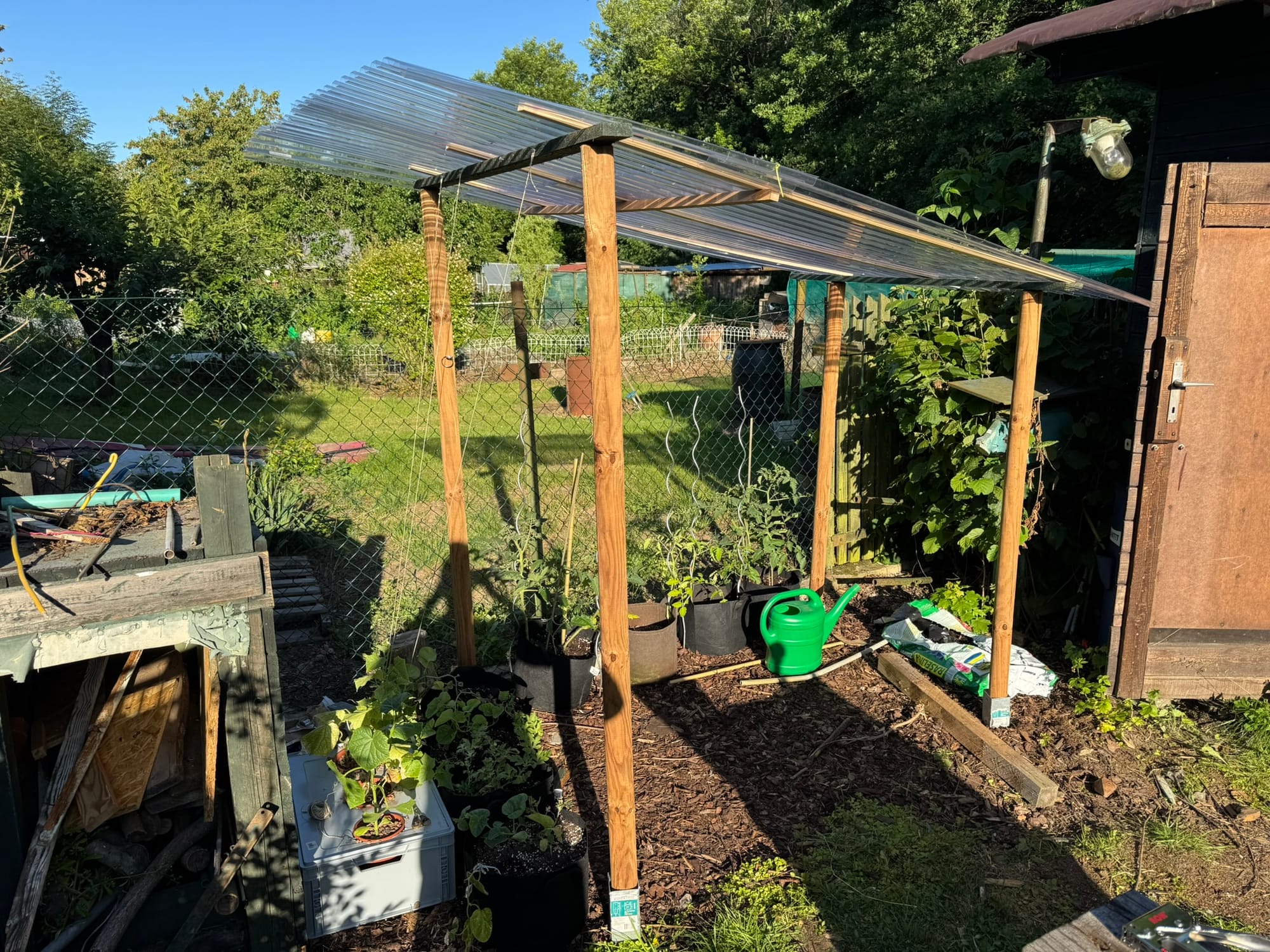
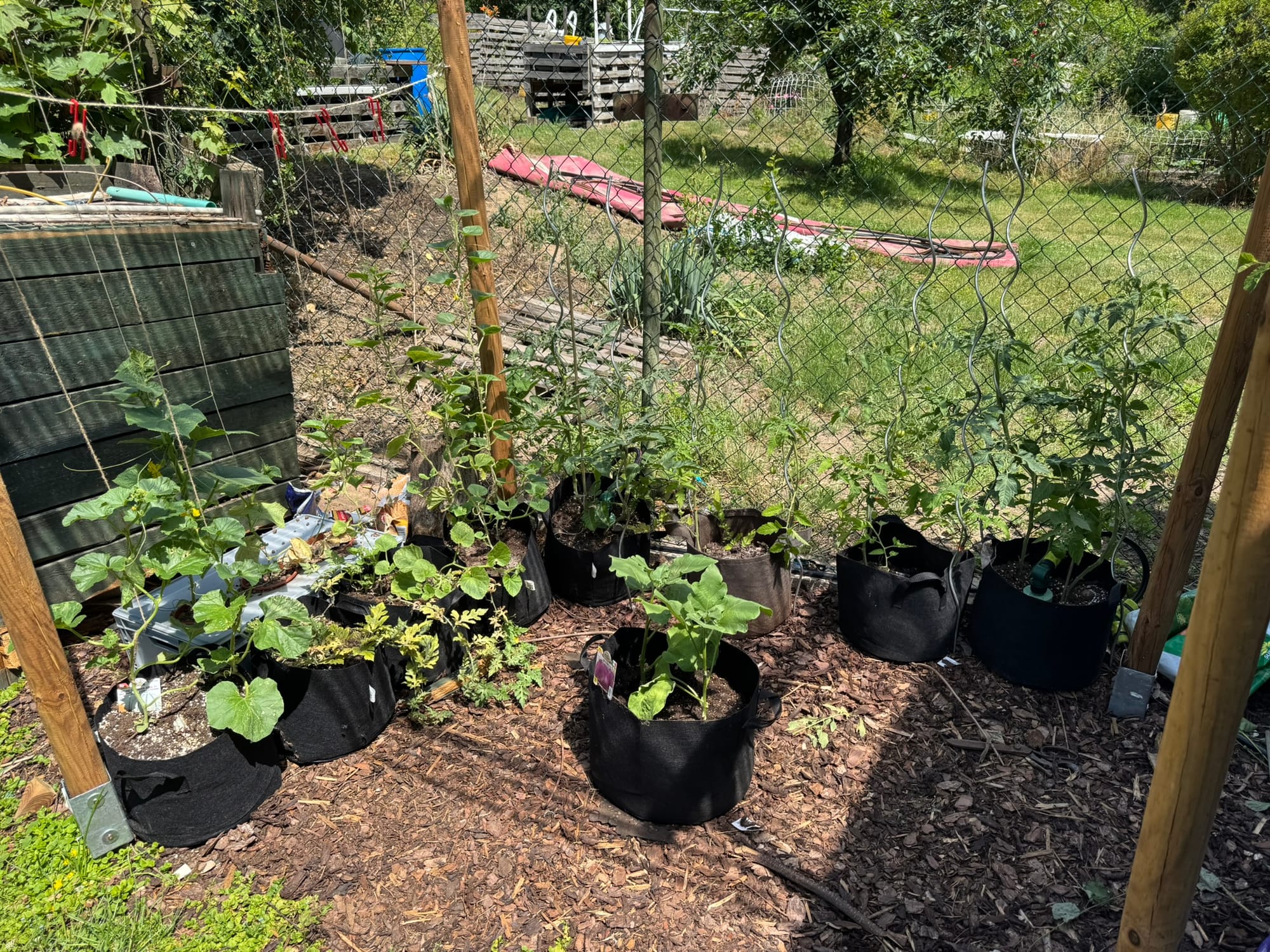
The spot is now very sunny from early morning until late afternoon. Thanks to the roof, it's also protected from rain. Unlike the greenhouse, this area is open and gets plenty of airflow. I built it with two ideas in mind: growing melons and setting up hydroponics, specifically Kratky and DWC systems that don't like being rained on.
the curse of cucurbit
Cucumbers, melons, pumpkins. The whole family continues to be a struggle. Everything always starts strong, but somewhere along the way, I mess it up. This year is no exception.
Let's start with slicing cucumbers. Last month, I had healthy, strong seedlings. I gave them the spa treatment, hardened them in the greenhouse, prepared a nice cozy spot, and then transplanted them into the foil house. That's when things started to go sideways. They handled the transplant well and grew a few centimeters, then just stopped. Some leaves turned spotty and pale. Real drama queens.
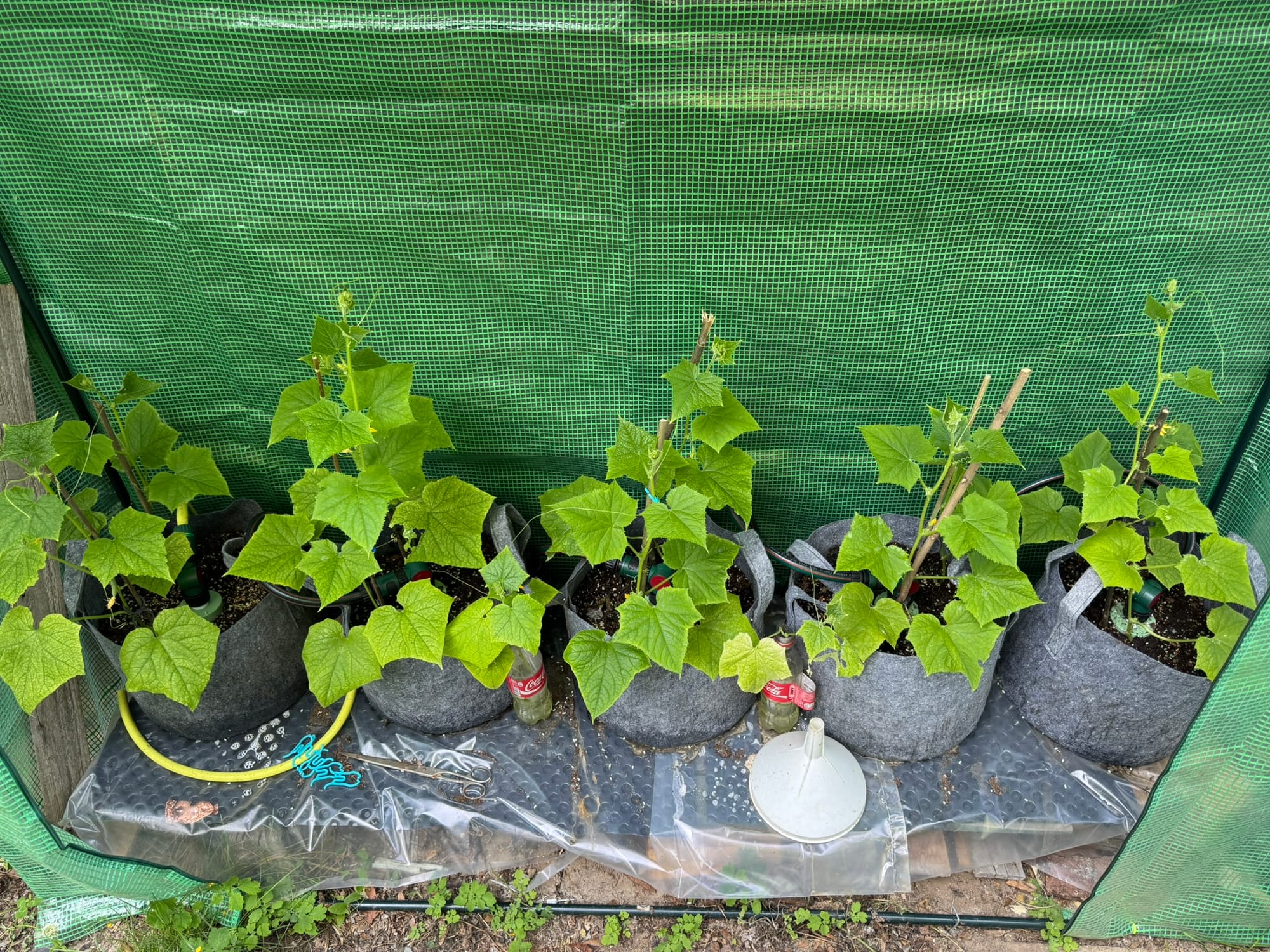
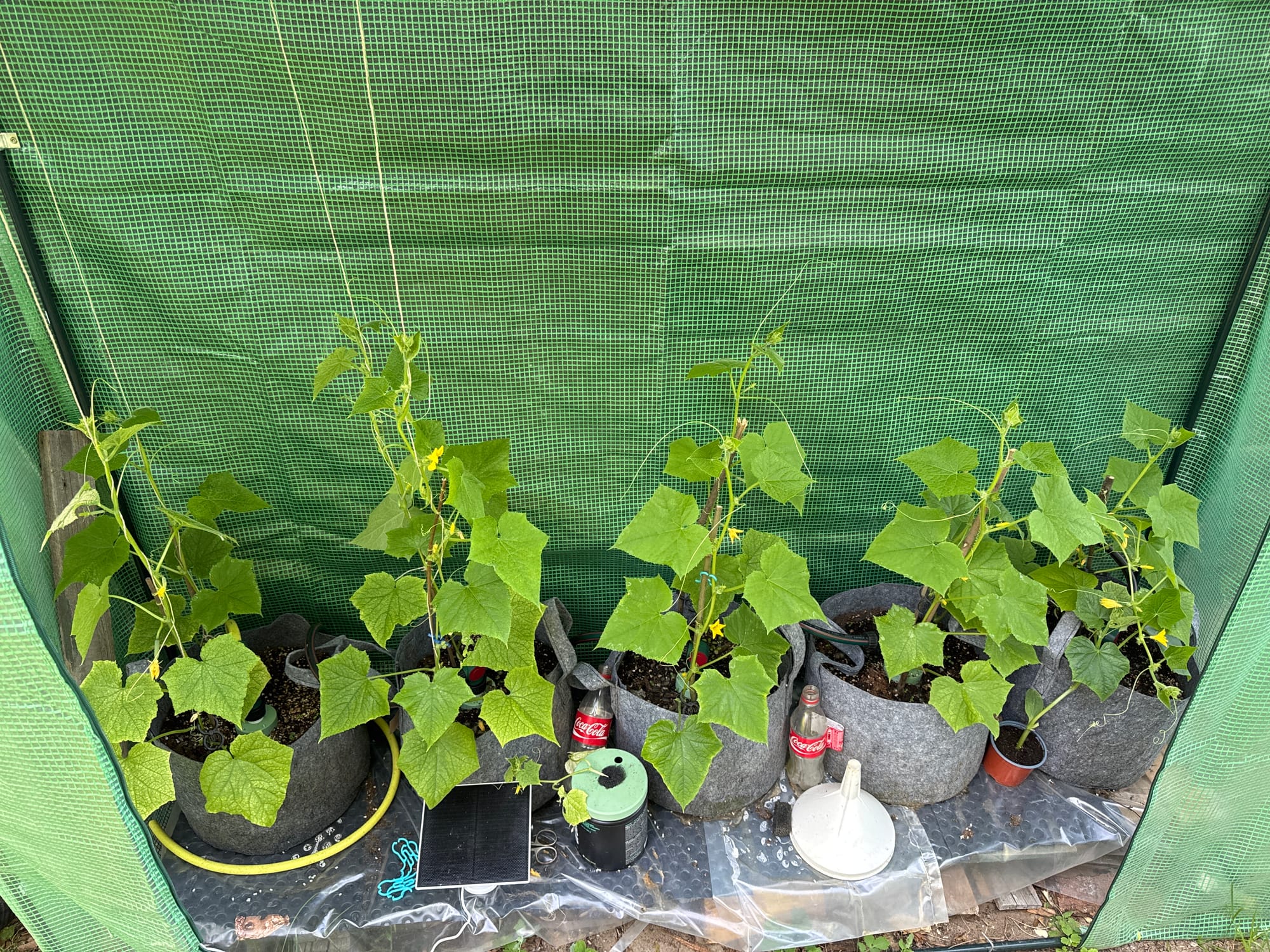
Stunted cucumbers. They looked like this for almost two weeks.
A week later, they started growing explosively again, but then spider mites showed up. They seem to prefer the Persika over the salad variety. They suck the sap, damage the leaves, and are slowly killing the plants. All of them are still alive, but I expect to lose a few soon.
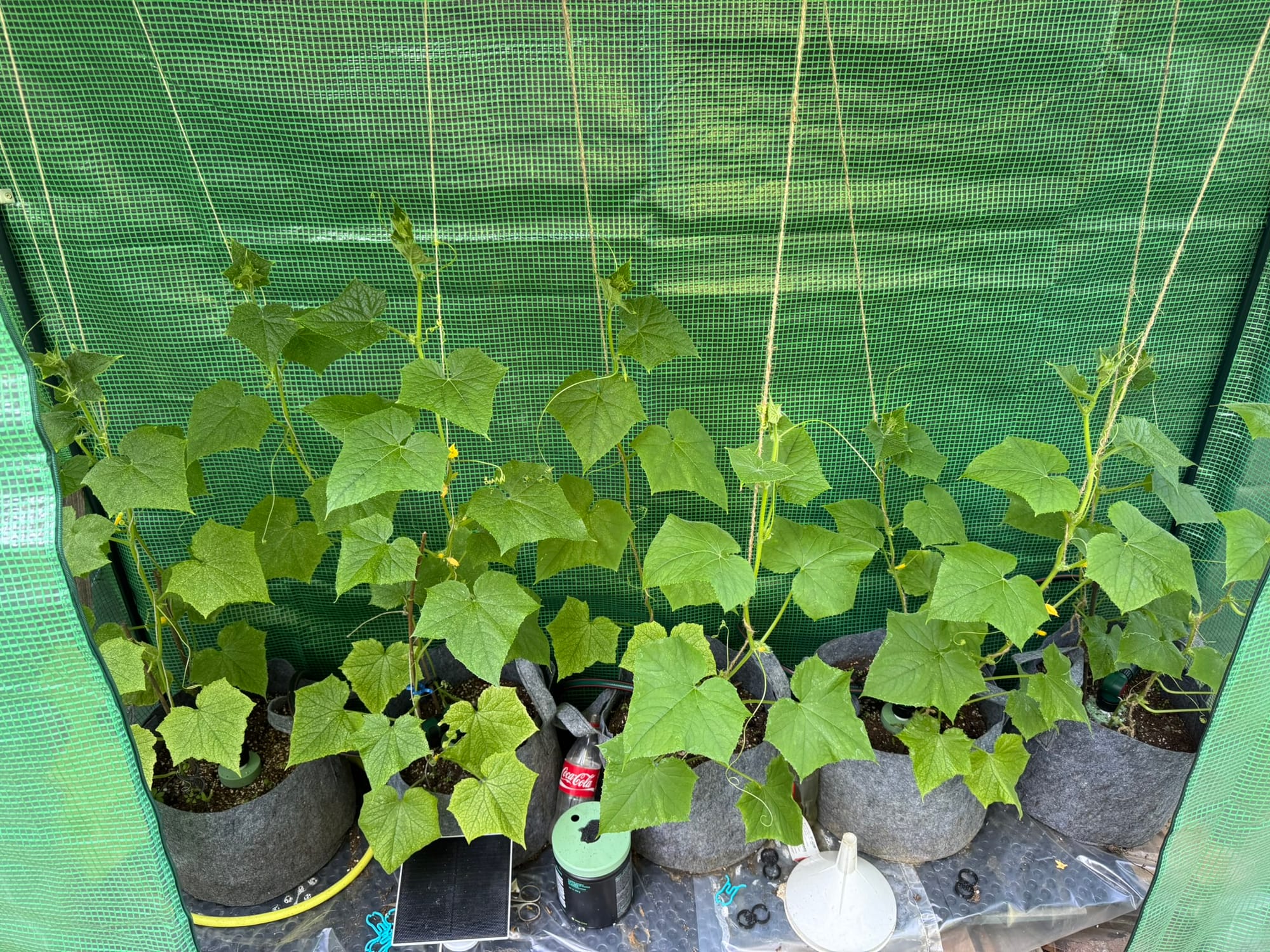
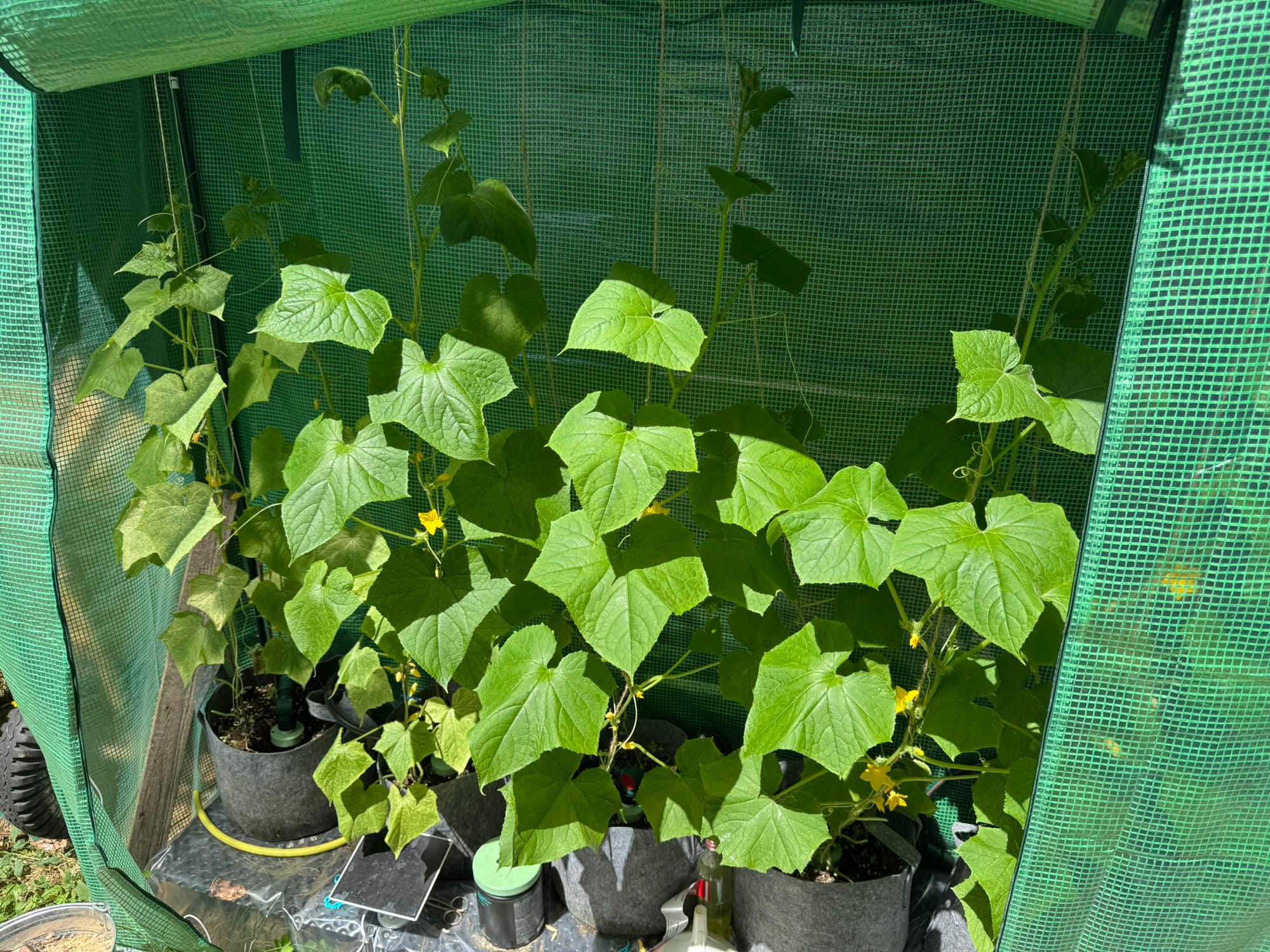
Way better
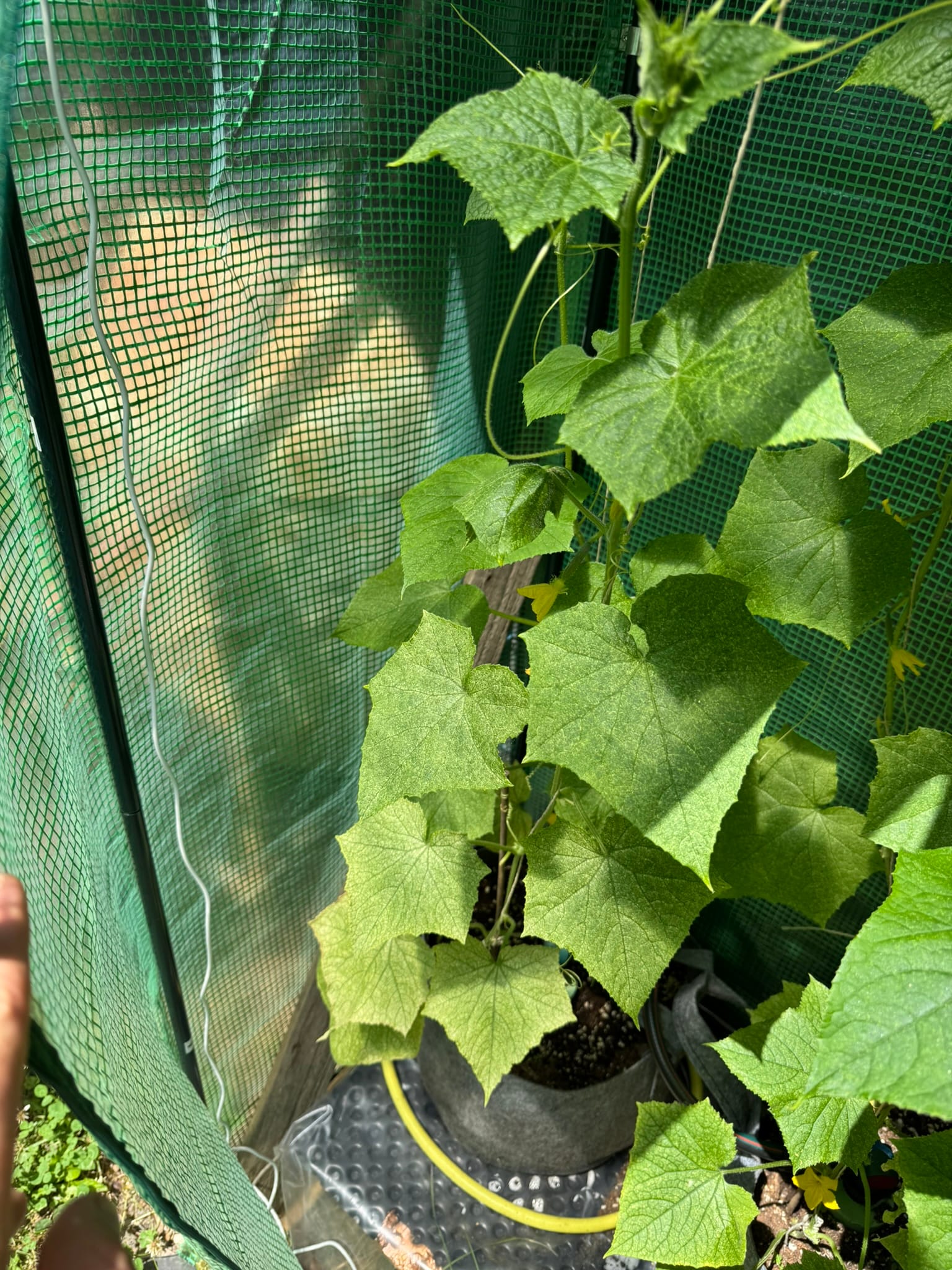
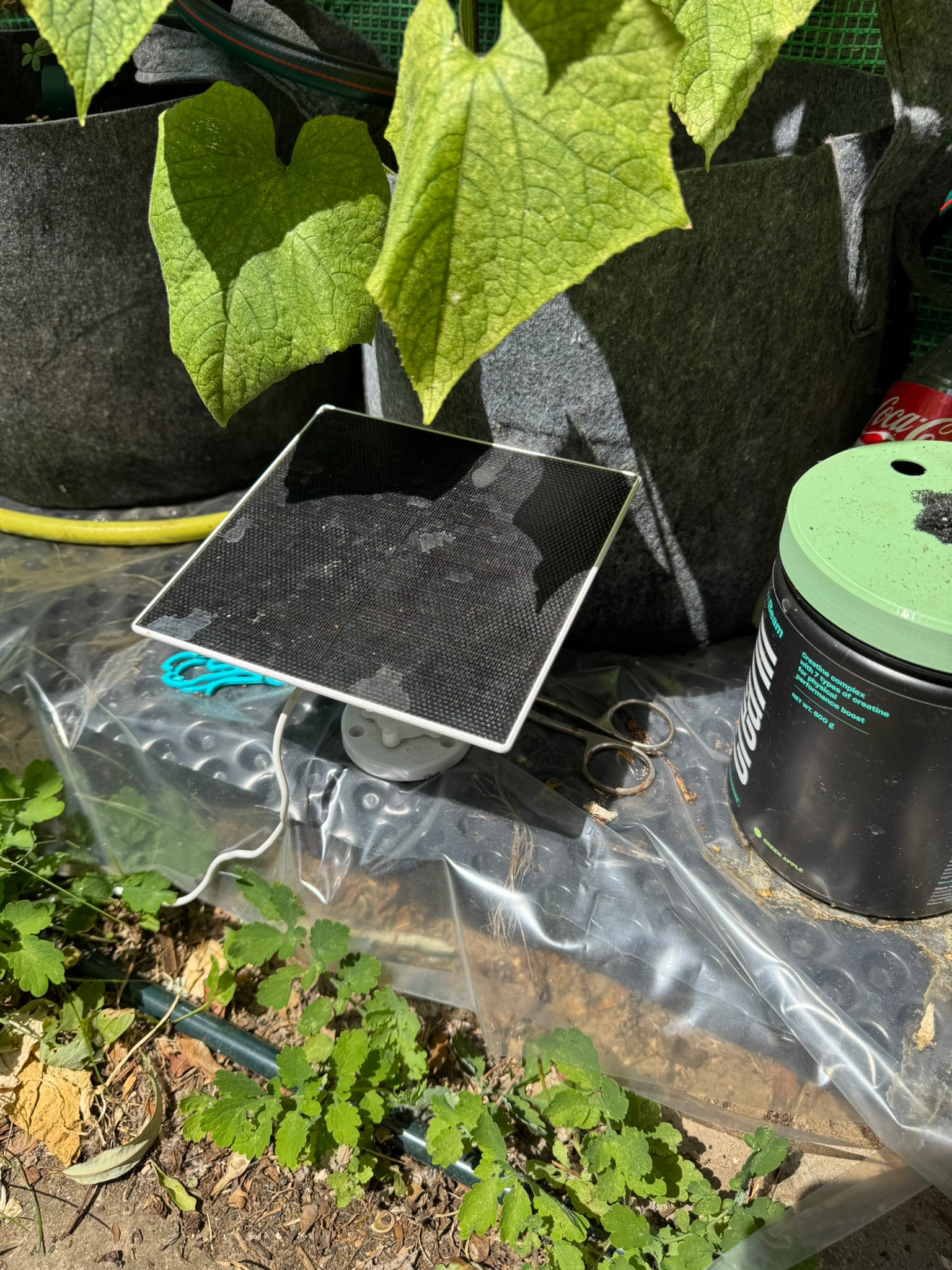
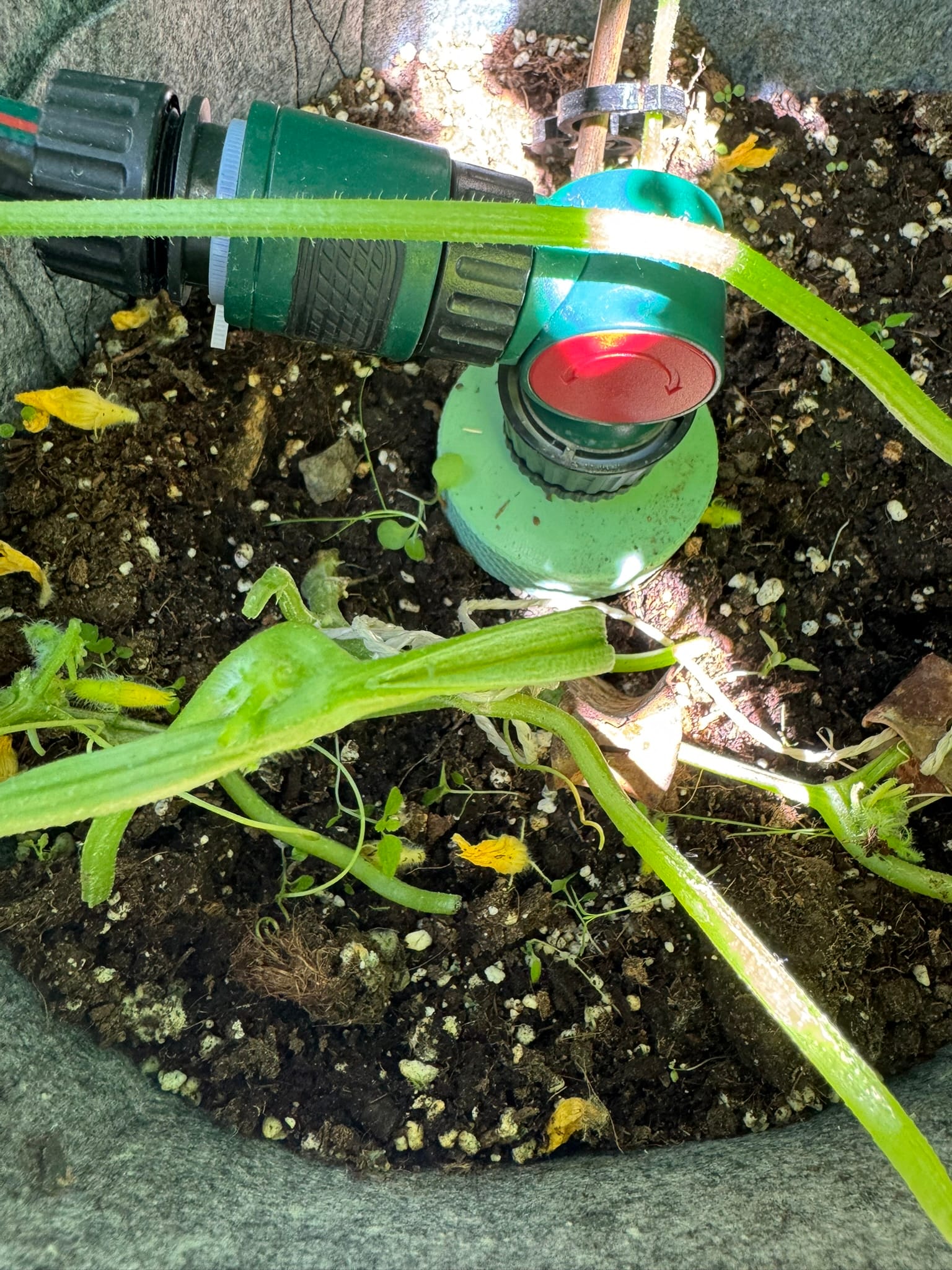
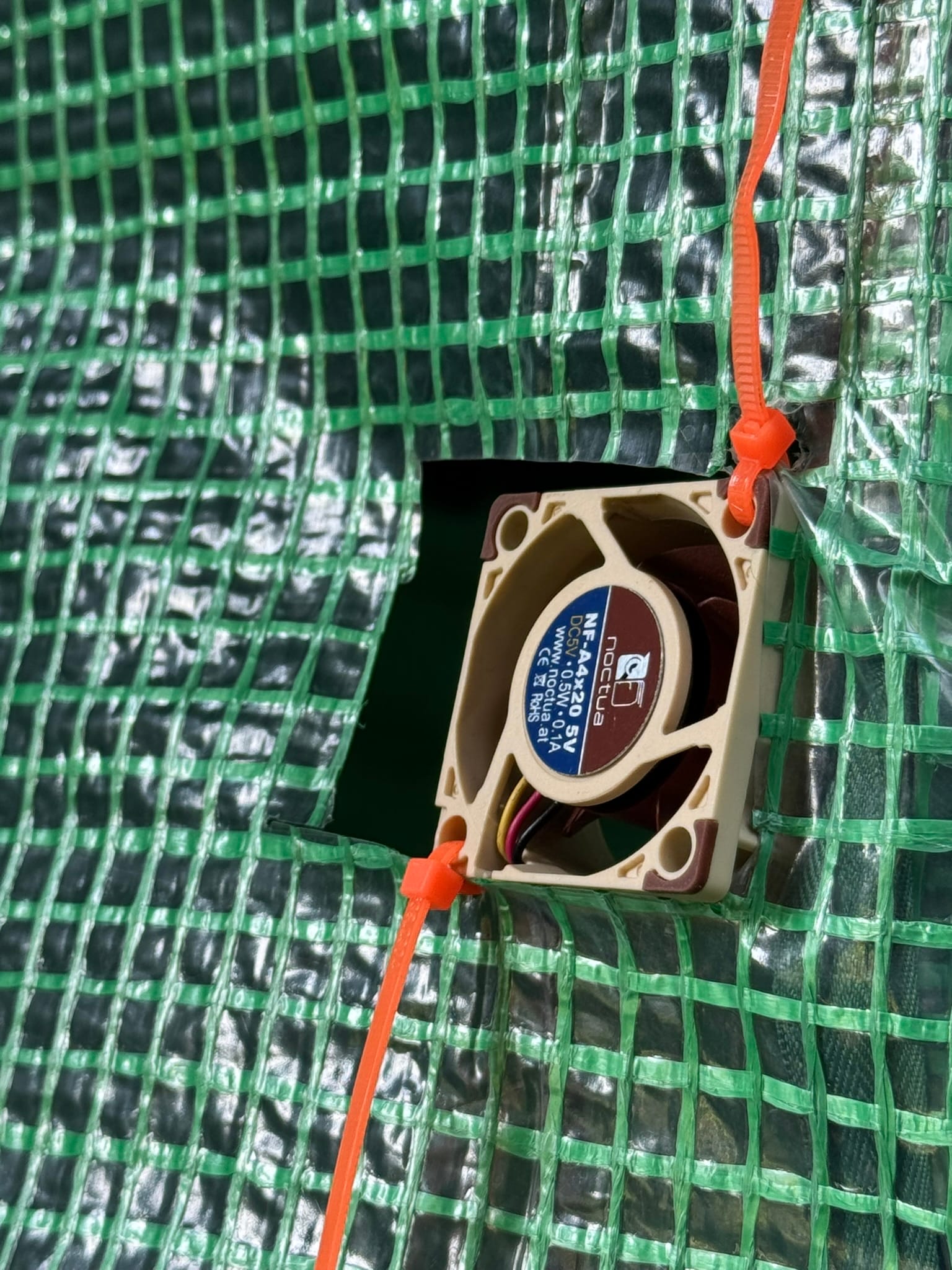
They got the top tier treatment. Solar powered ventilation, and TerraClick
The same pattern is showing up in my melons. They started strong, then went through weeks of stunted growth, mite infestations, and leaf drop. The banana melons are holding up better than the watermelons. Honestly, I'm not sure I can say the watermelons are "doing" anything; they're just slowly dying. The banana melons, though, have stabilized. I trellised them to get more sun, and they've started producing male flowers. I'm leaving the suckers on, hoping for early fruit. Time is tight if I want them to mature.
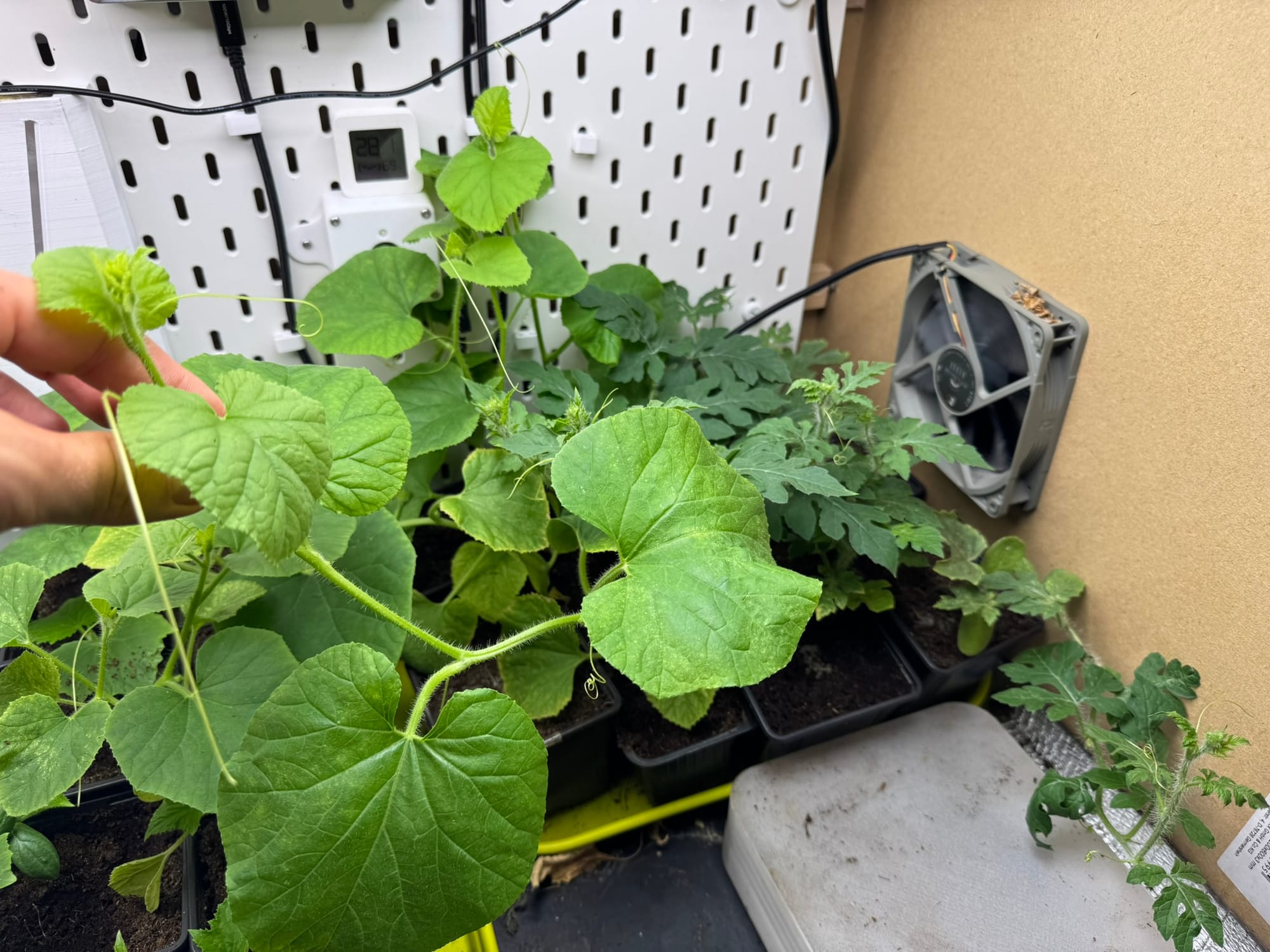
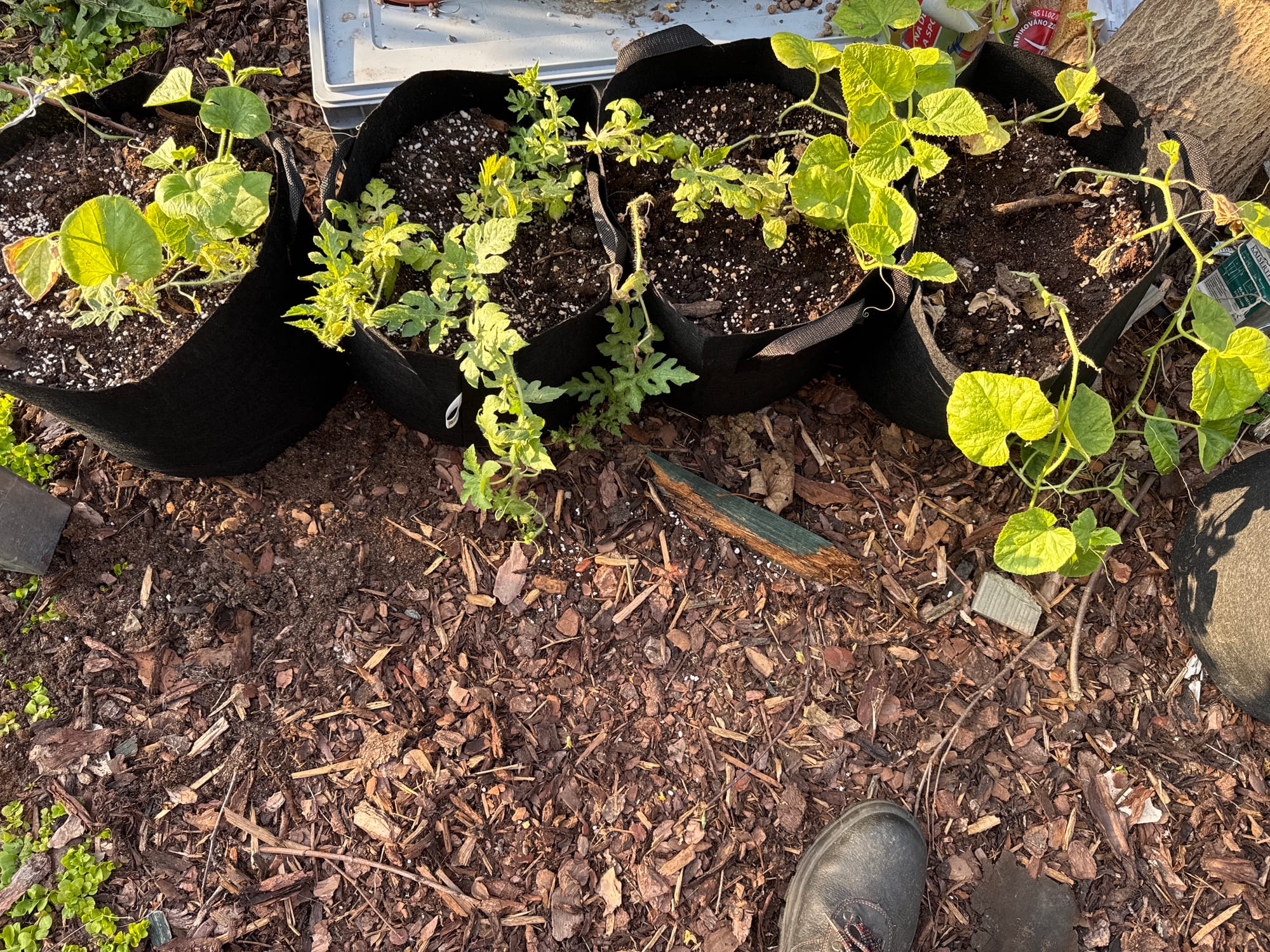
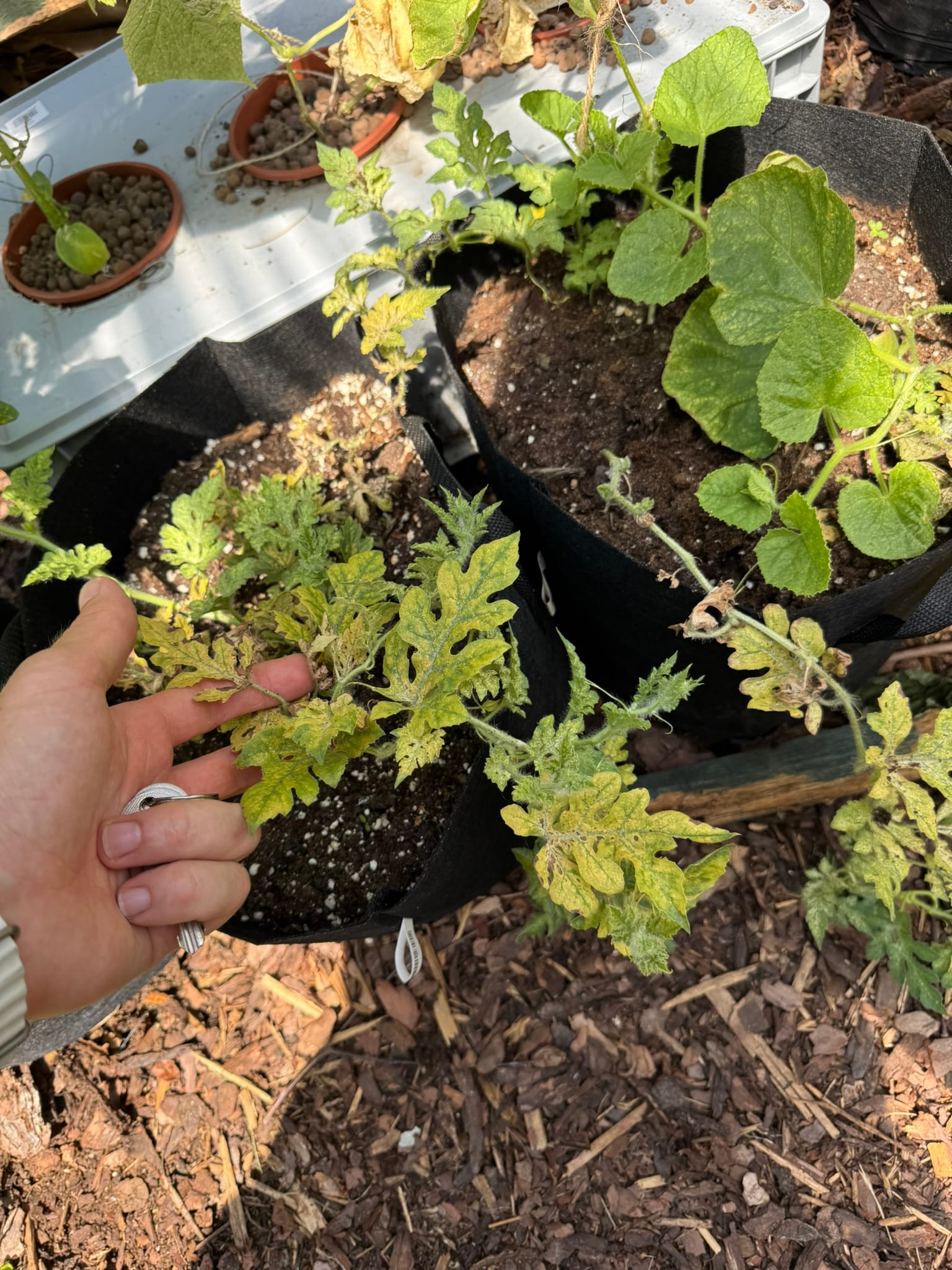
To check my methods, I picked up four slicing cucumbers and two cantaloupes from the nursery. I want to see where I might be going wrong.
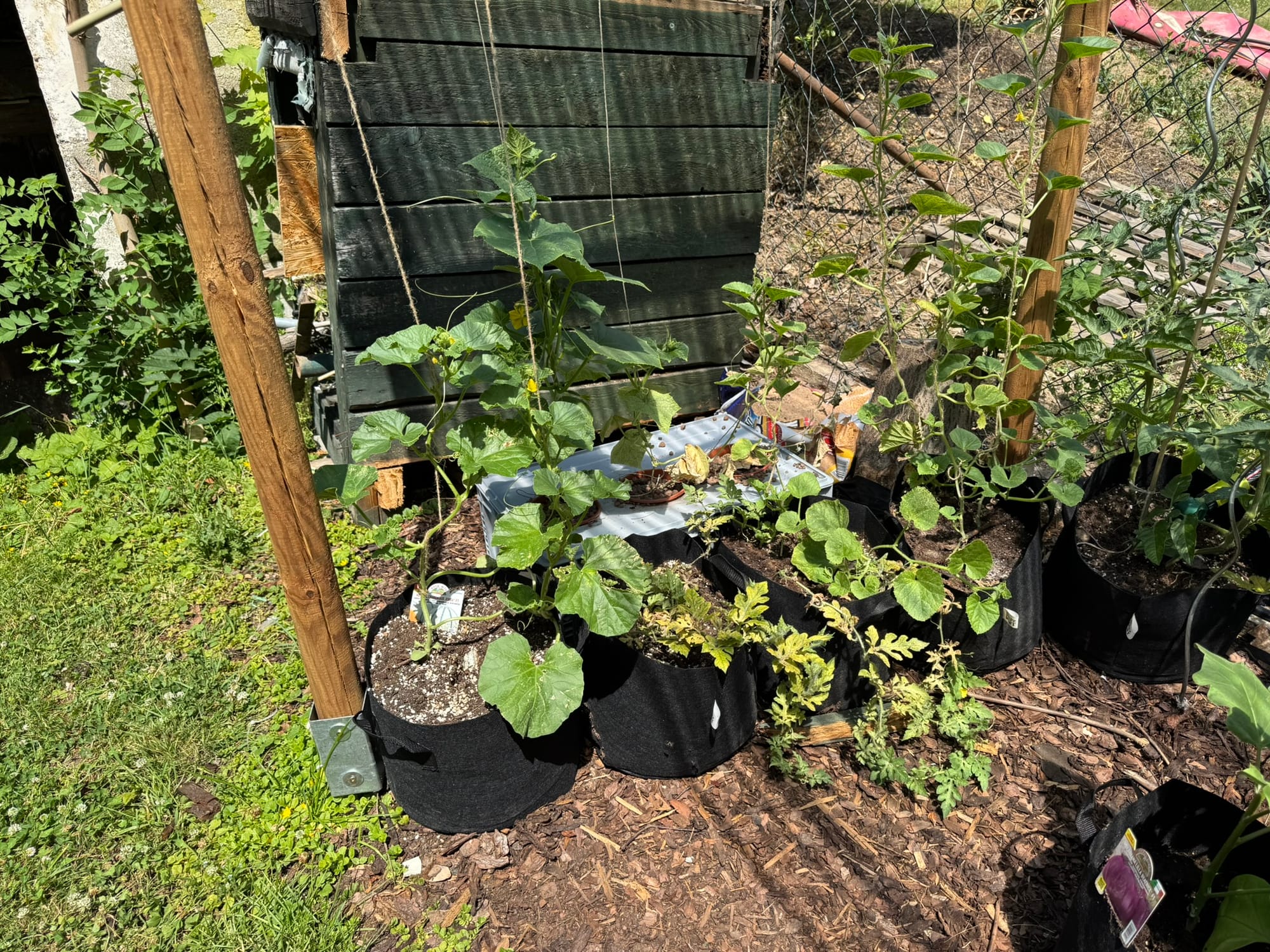
Meanwhile, the pickling cucumbers are thriving. Every plant survived the transplant and acclimatization. They're disease-free and growing like crazy. I had a bit of a scare when I found a tunnel in one of the raised beds, could've been a vole or mole. I set a trap, but nothing was caught. After crushing the tunnel, it didn't come back.
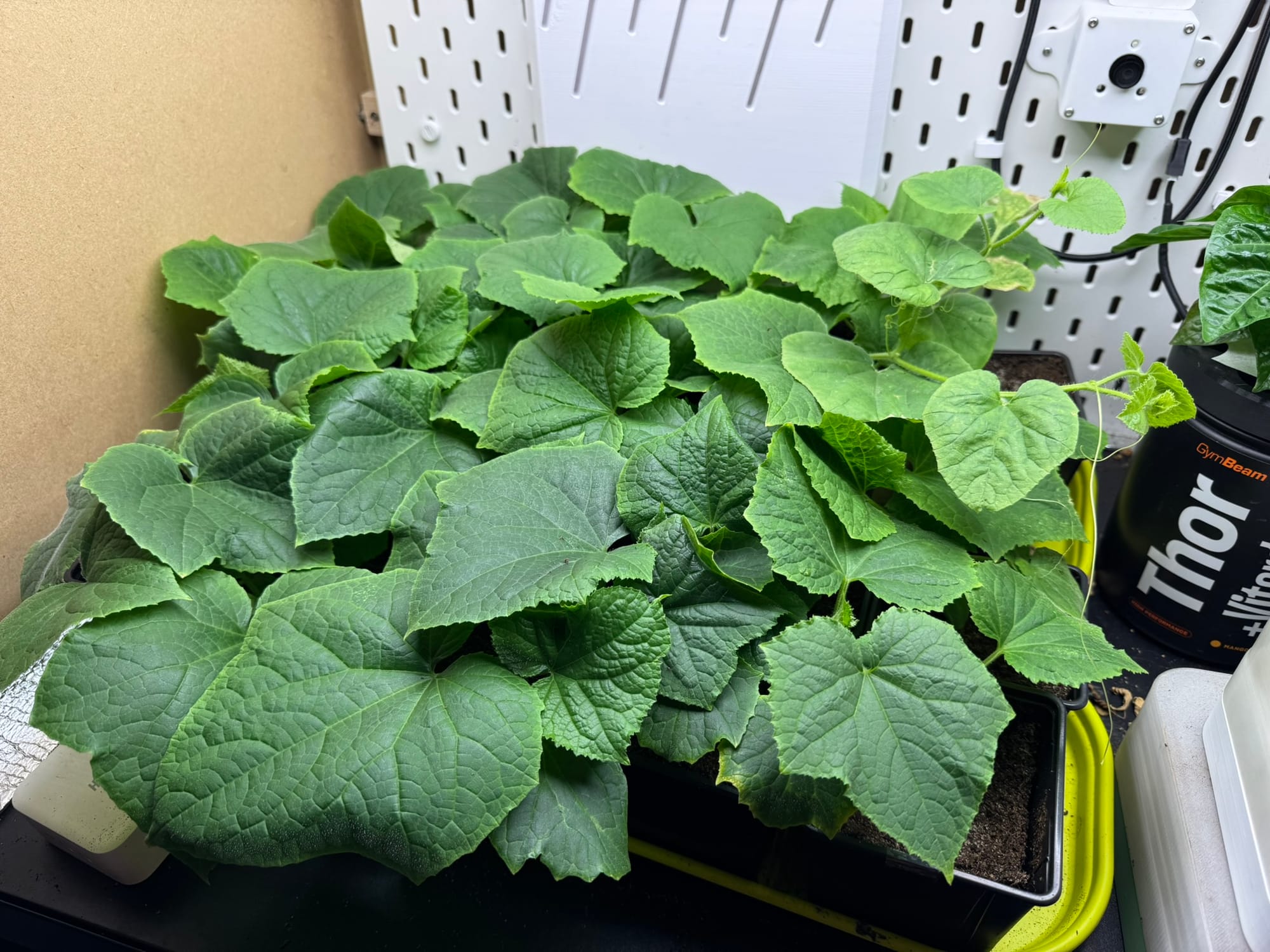
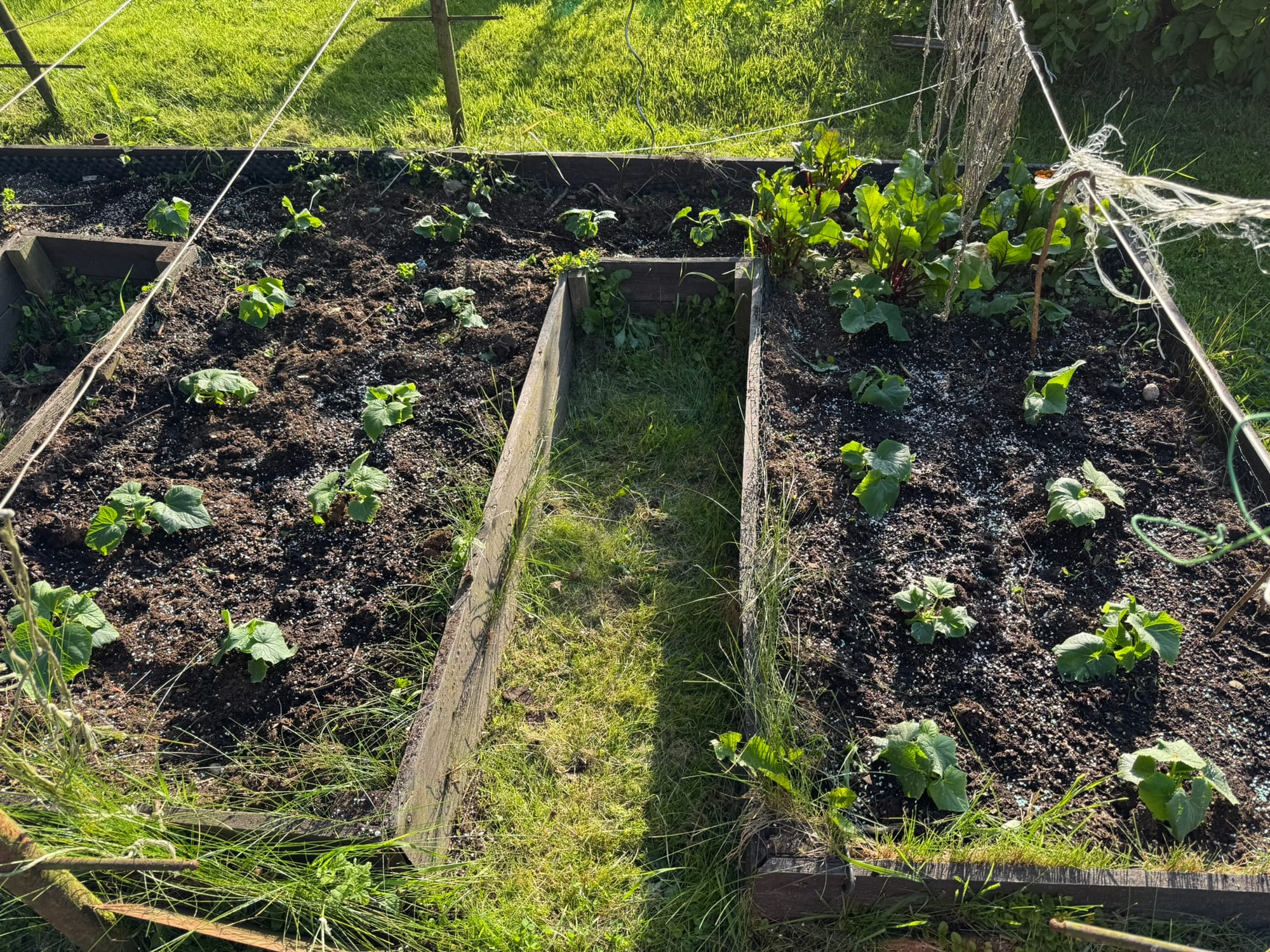
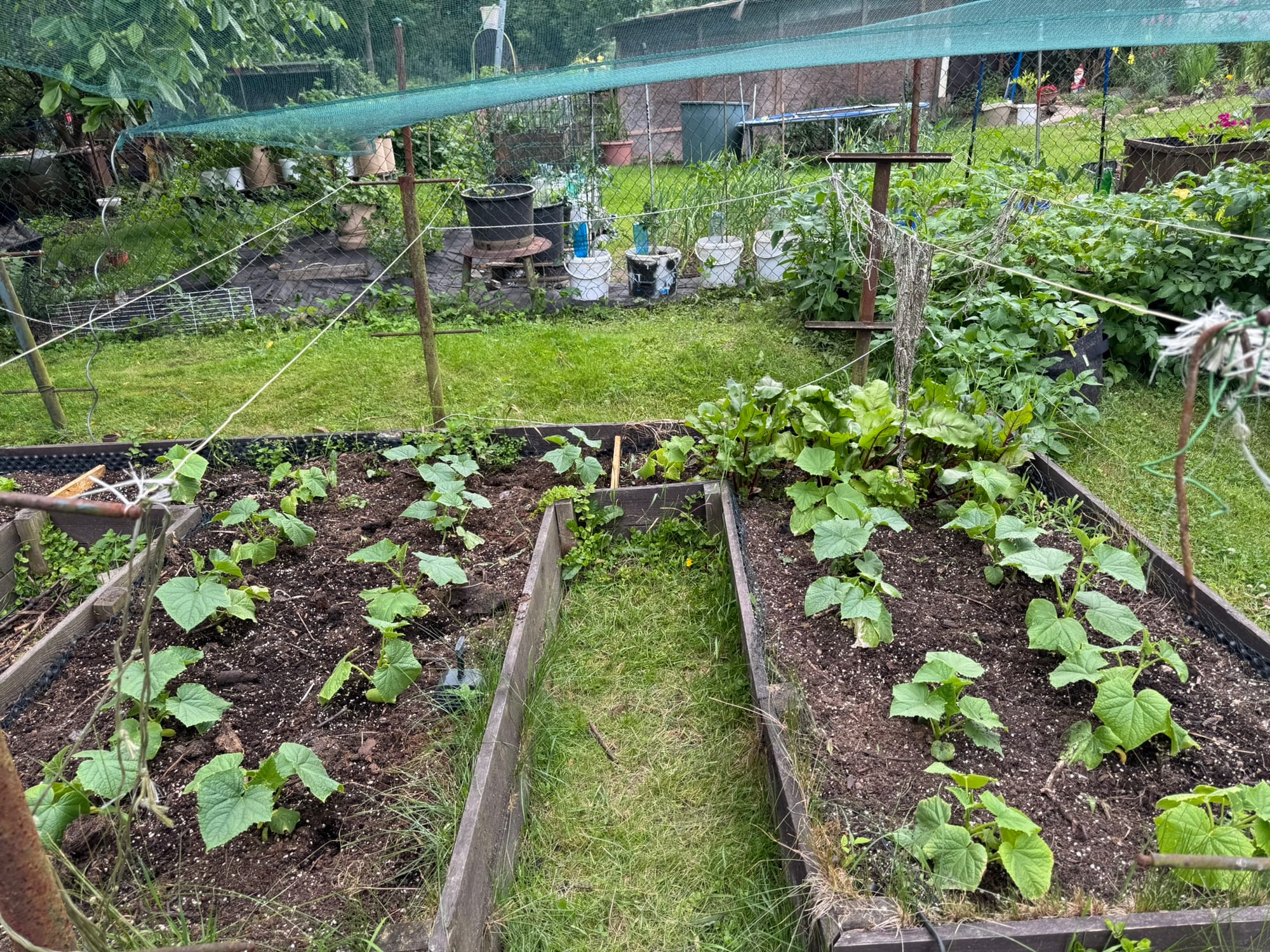
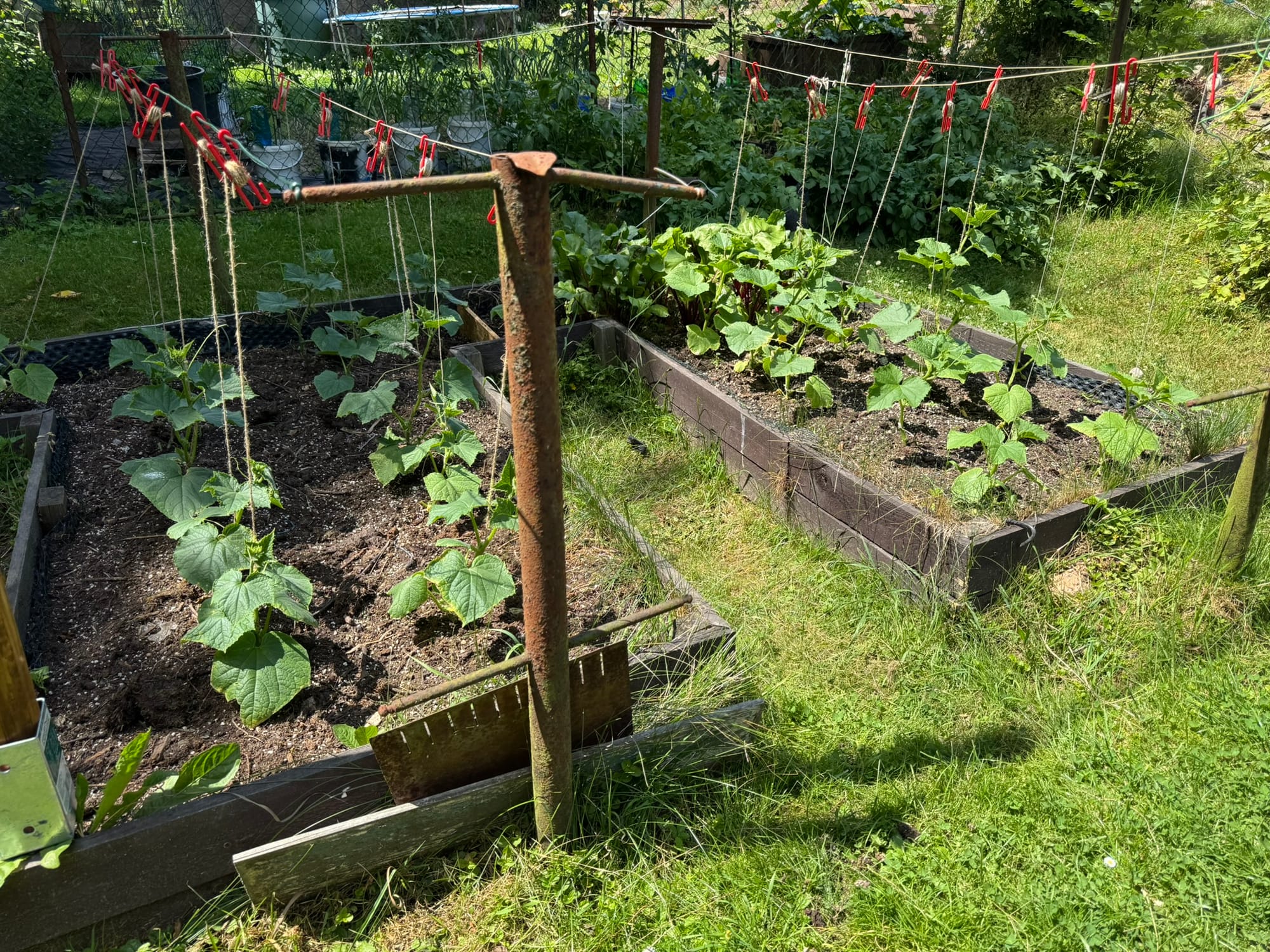
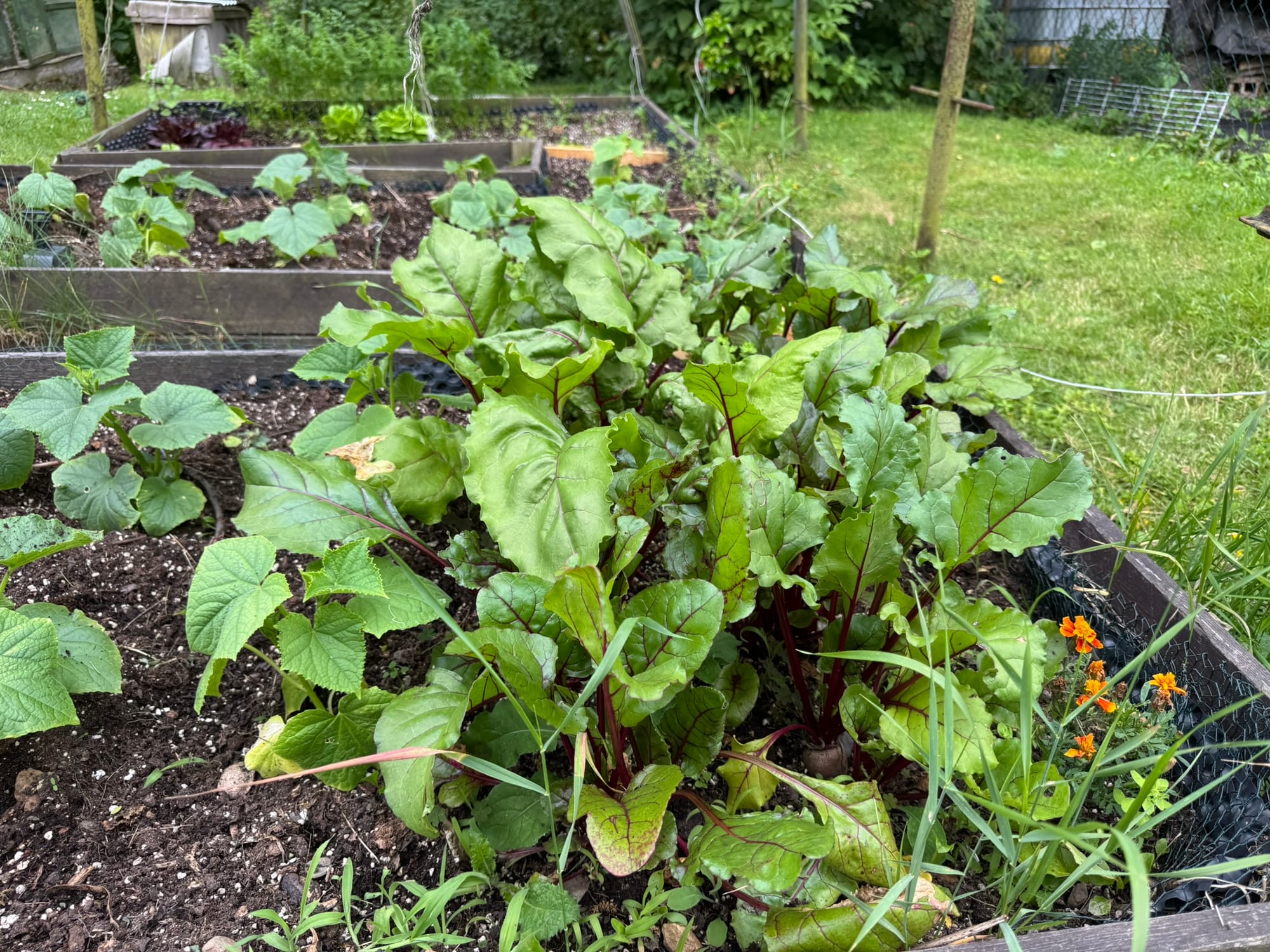
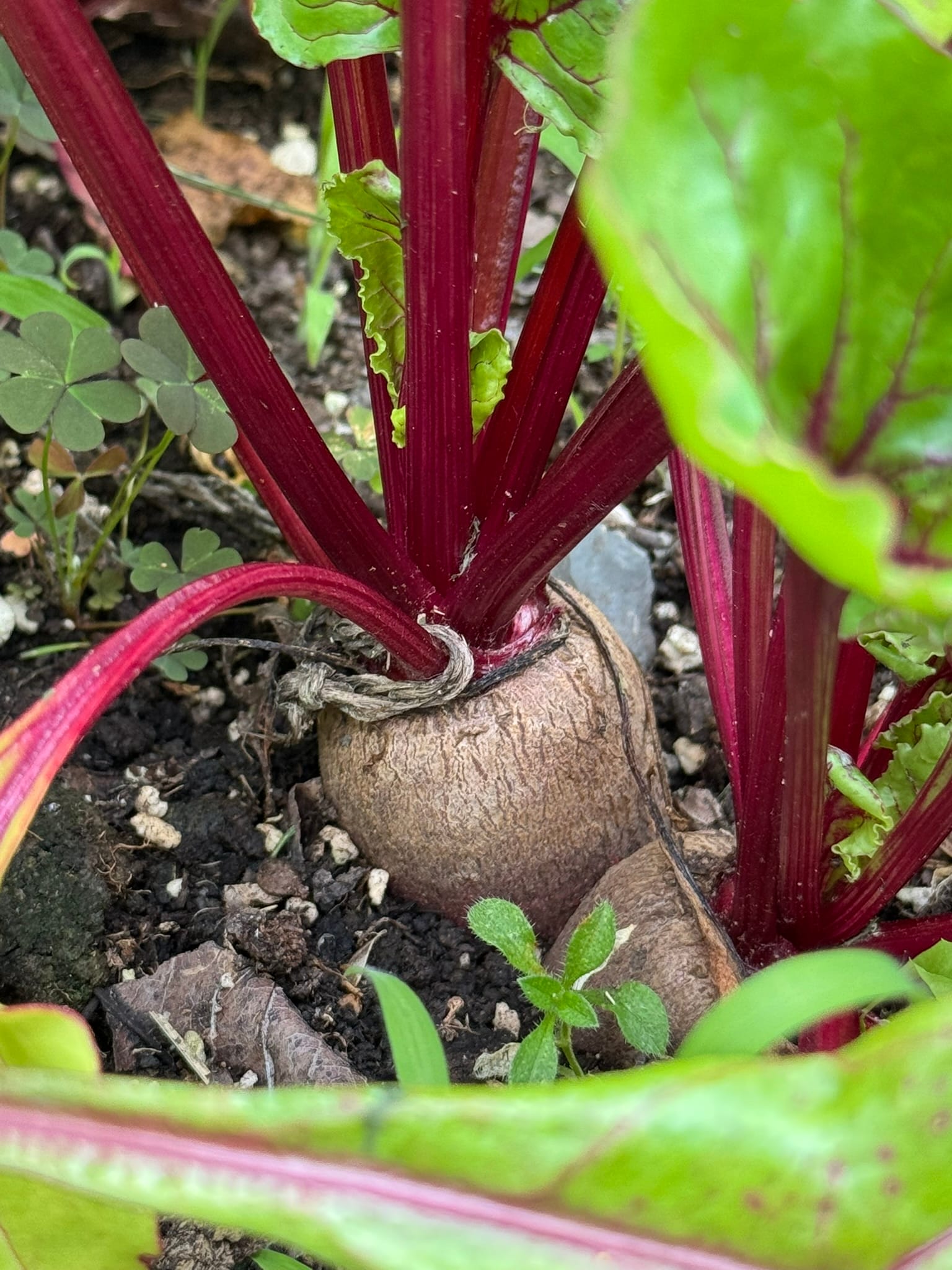
The beet bulbs are getting bigger.
Where I completely failed this year was with winter squash. I had eight strong seedlings. I spent a few days hardening them off in the greenhouse, then made the dumb choice to transplant them on one of the hottest days of the month. Only three survived. The rest got sunburned and never recovered. The survivors only made it because they got some shade from the nearby corn.
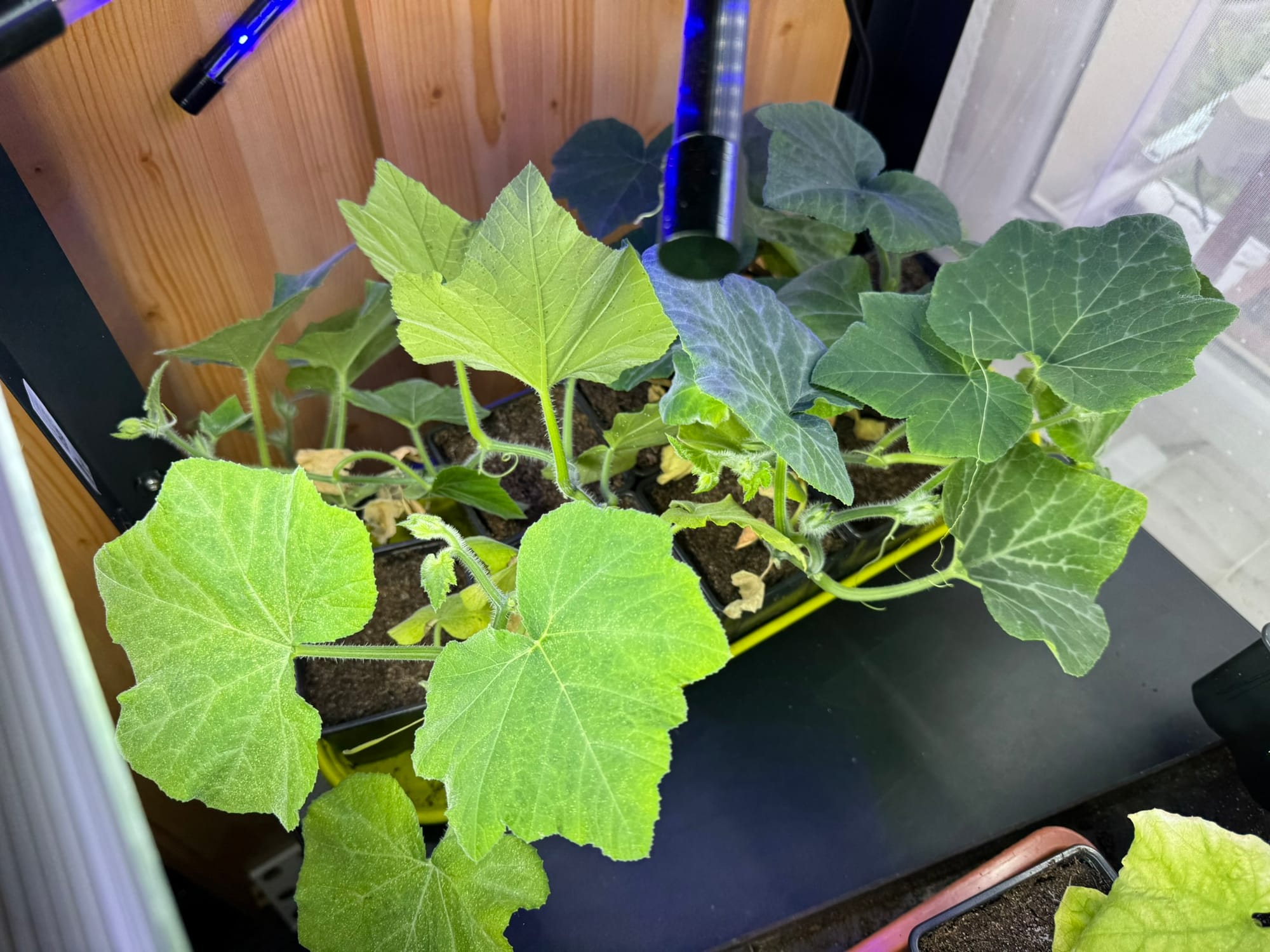
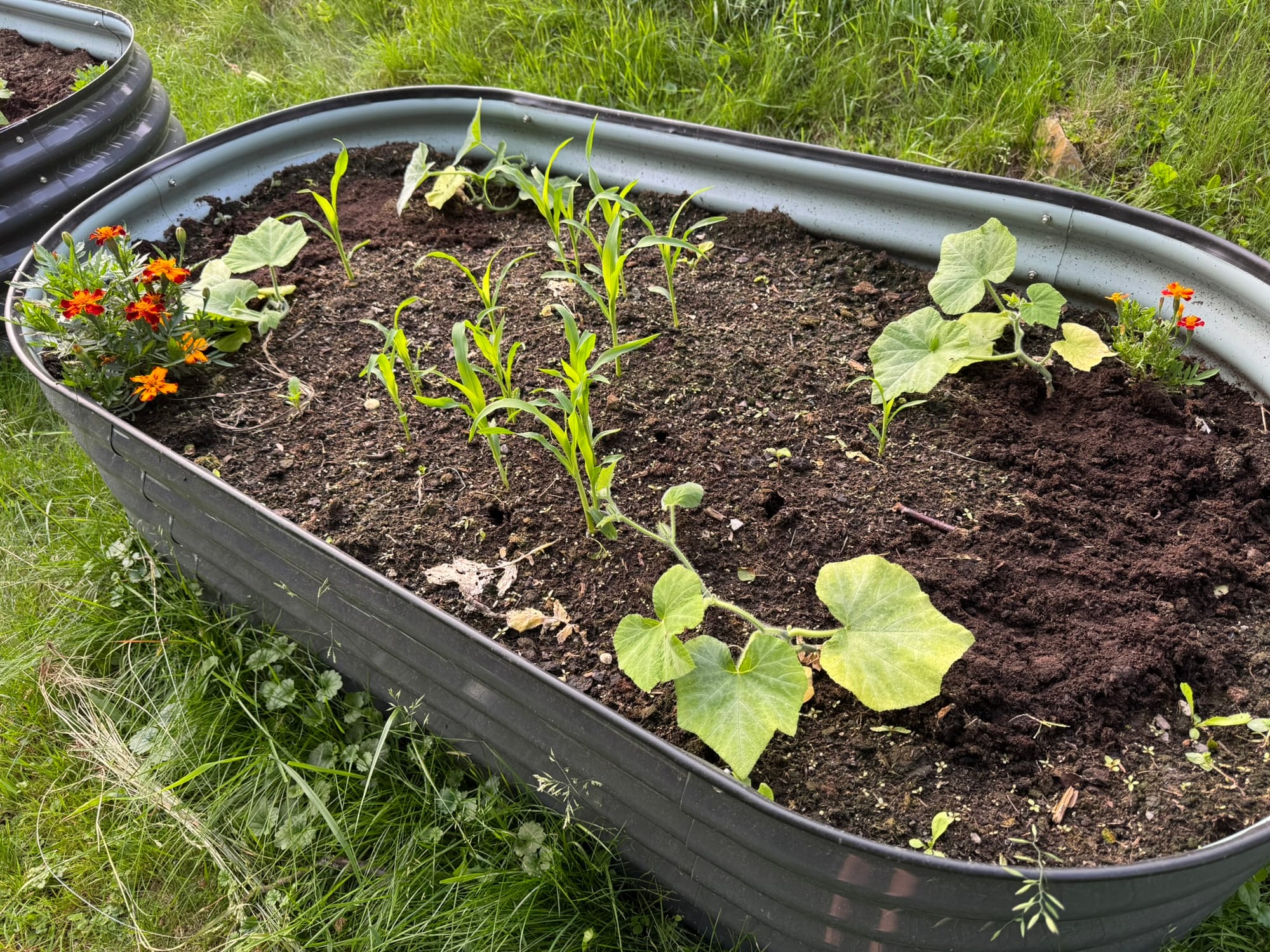
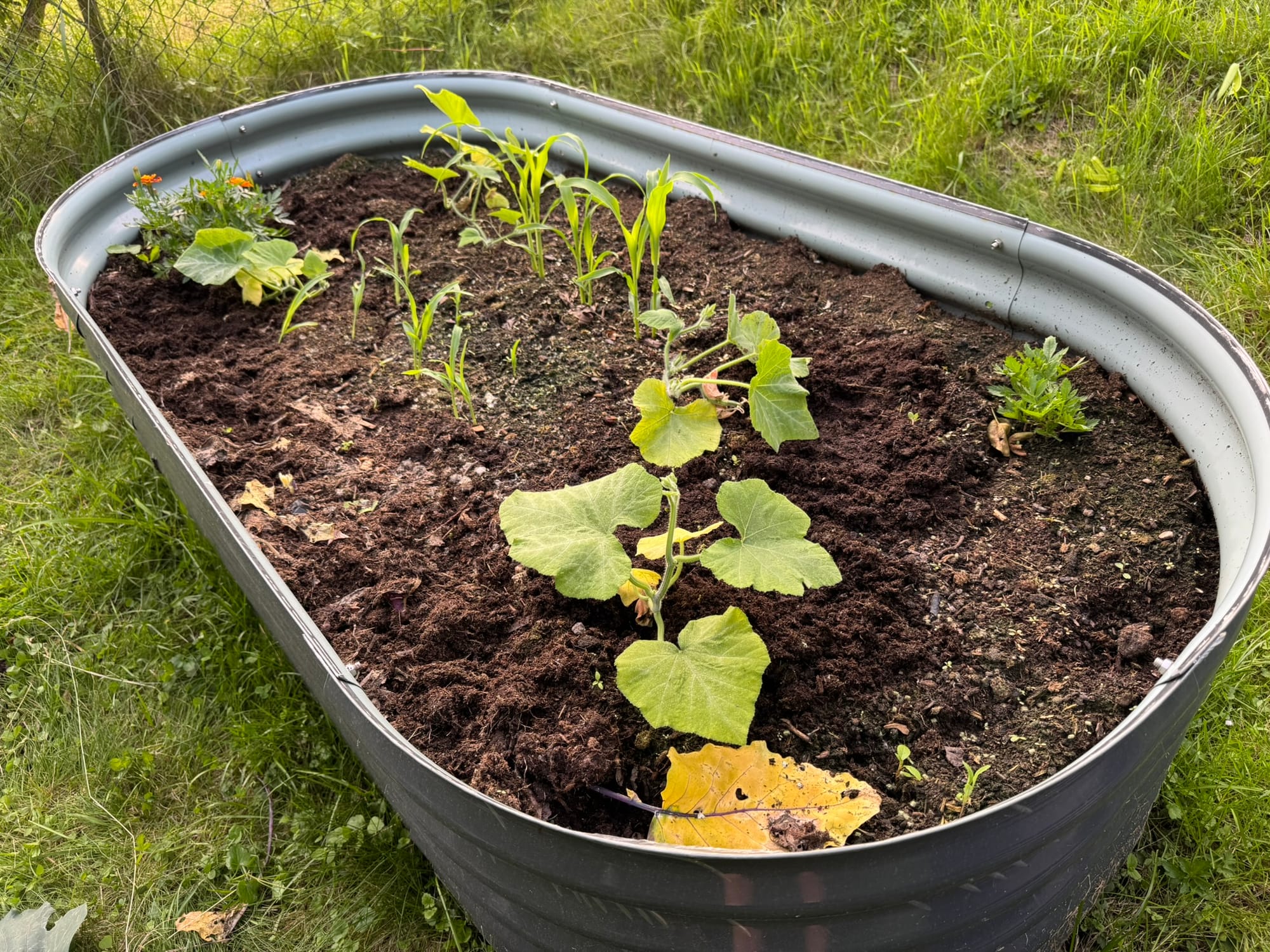
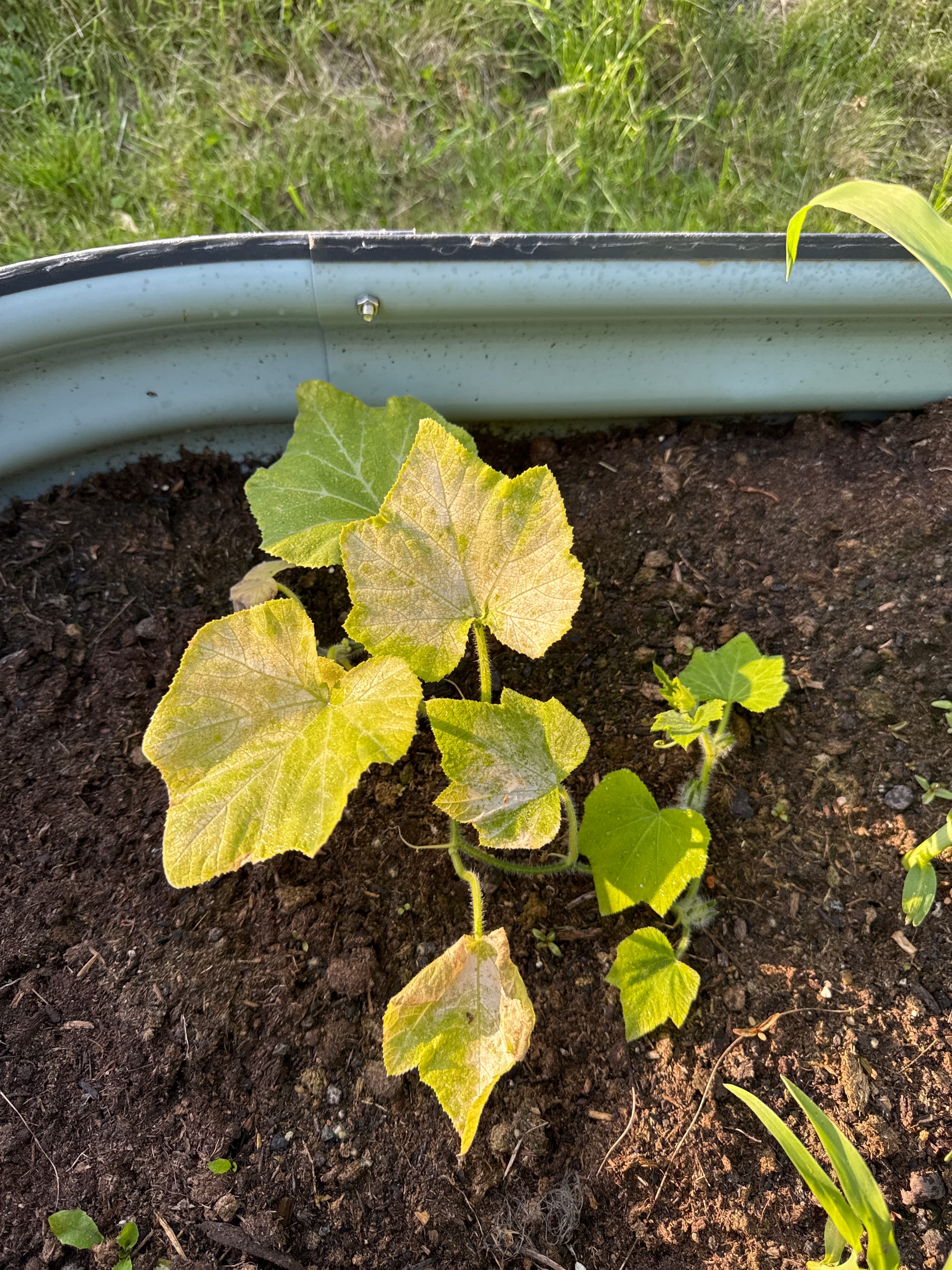

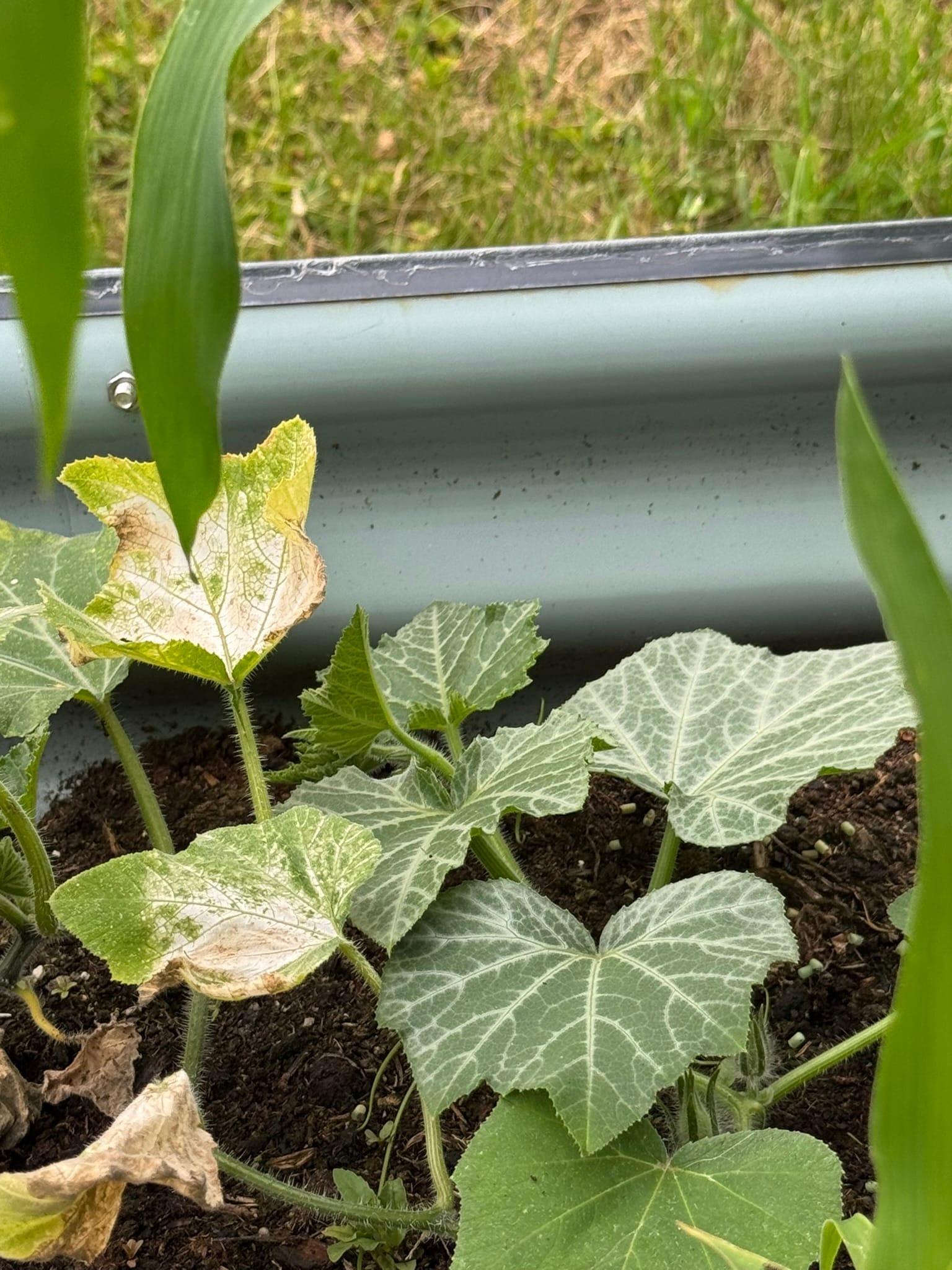
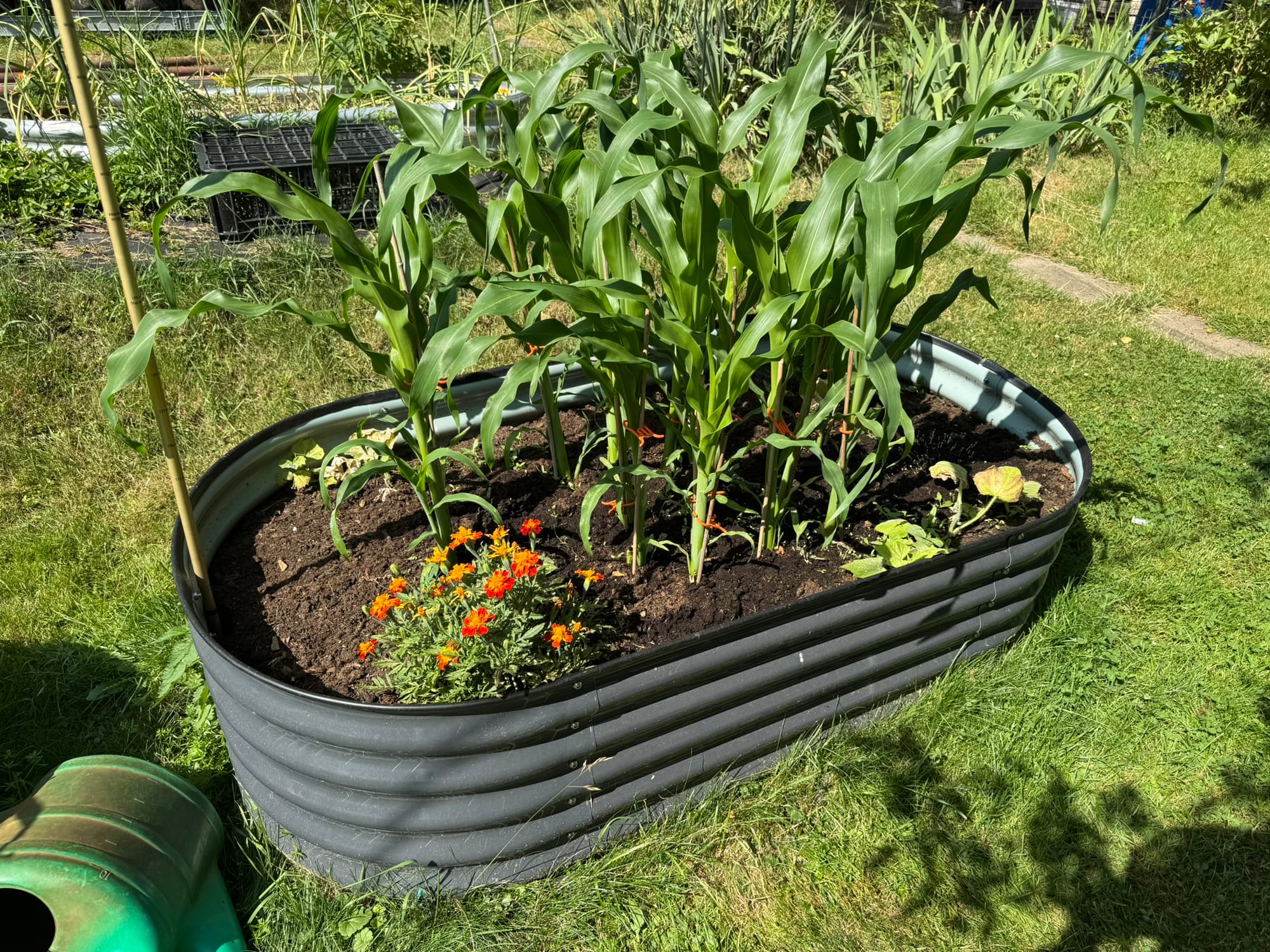
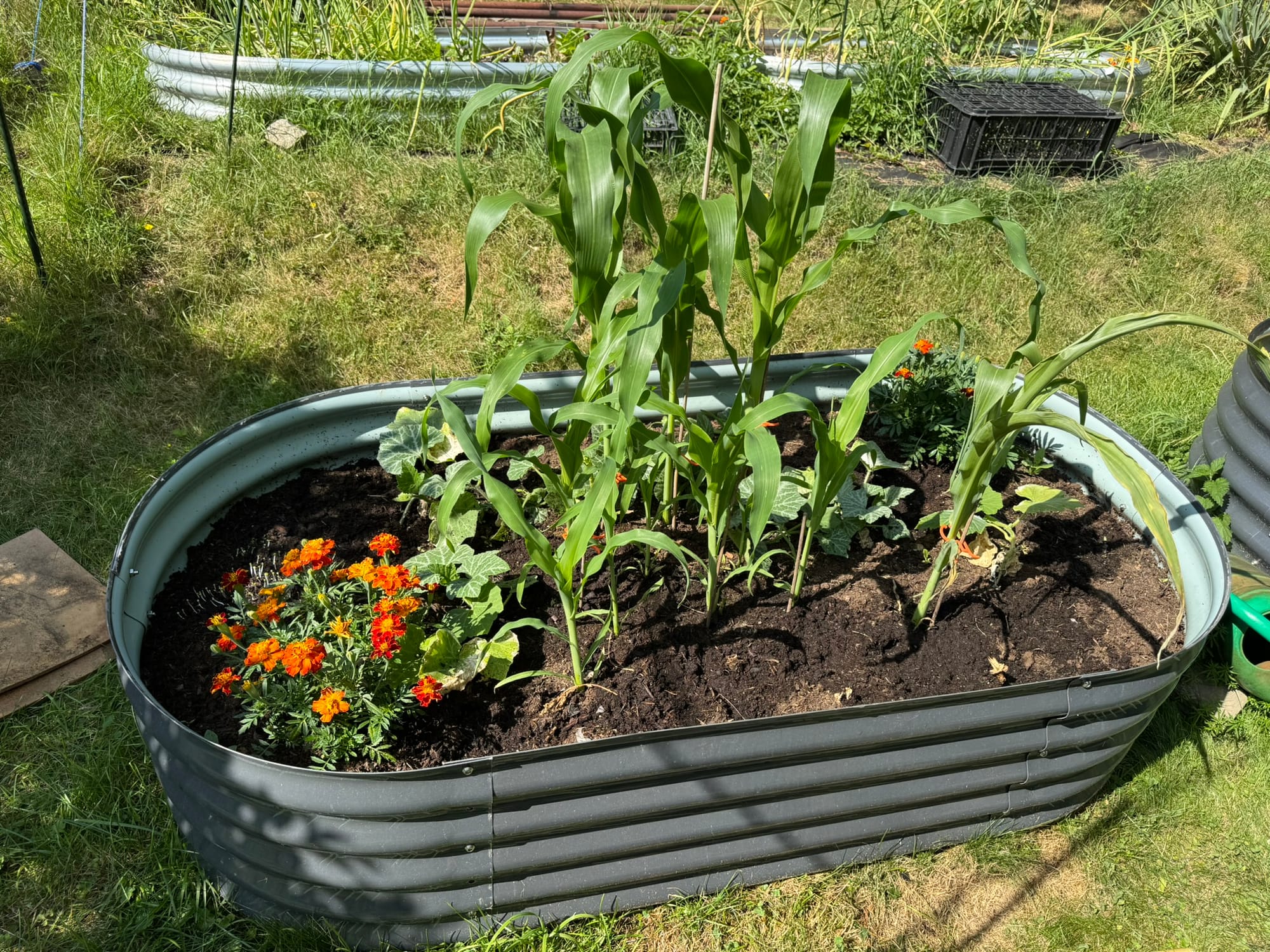
To avoid wasting that space, I sowed basil. It loves the sun, tolerates a bit of shade, repels pests, and makes pesto. A small tip for summer direct sowing: cover the area with wet wood. It keeps the soil moist during germination.
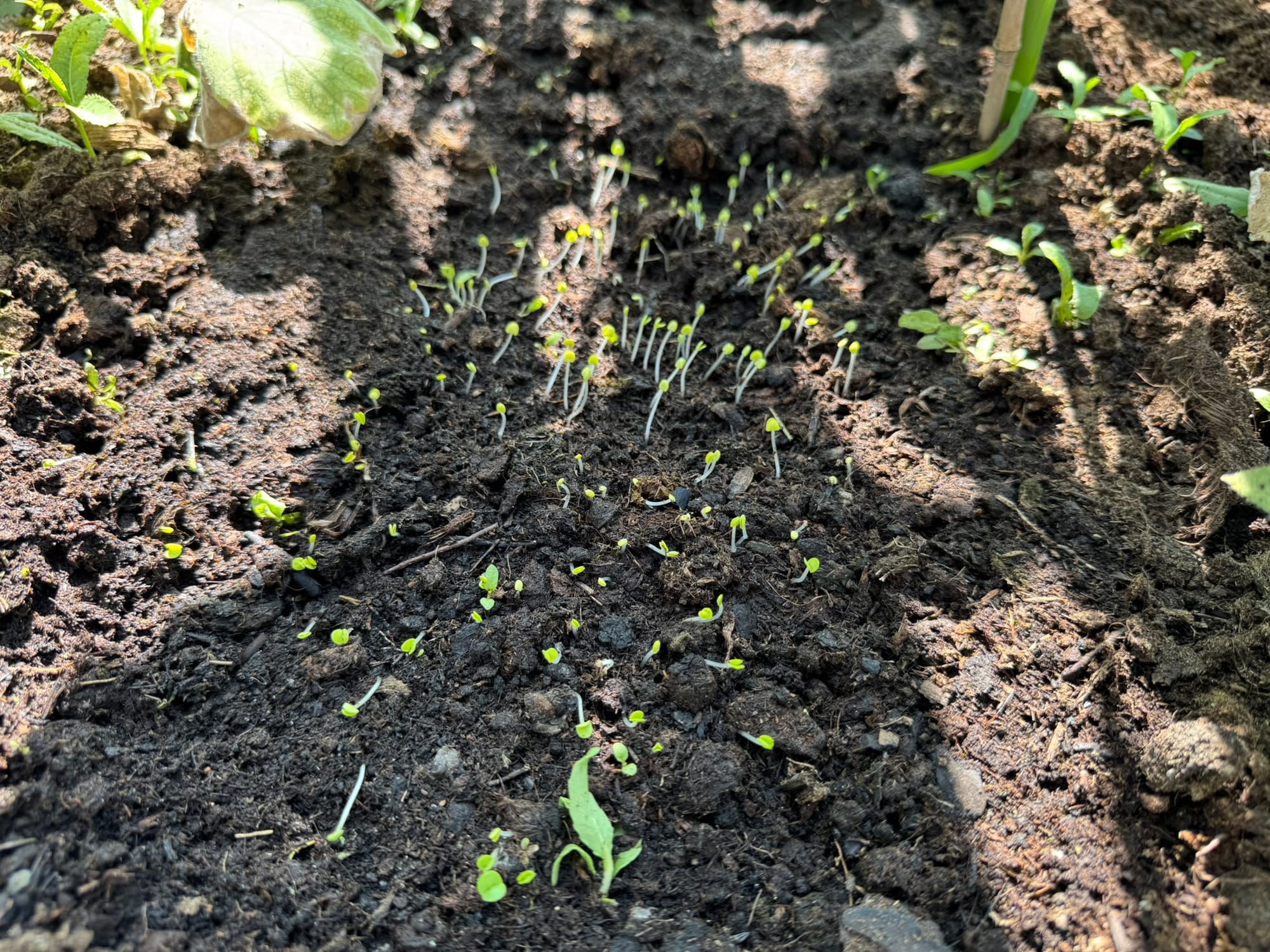
the shadenights
What I lack in cucumber skills, I make up for in tomatoes. The soil-grown ones are right on track after about 40 days outside. But the hydroponic ones are something else. Compared to soil, they're growing faster and producing more fruit. I wouldn't be able to tell the difference from last year.
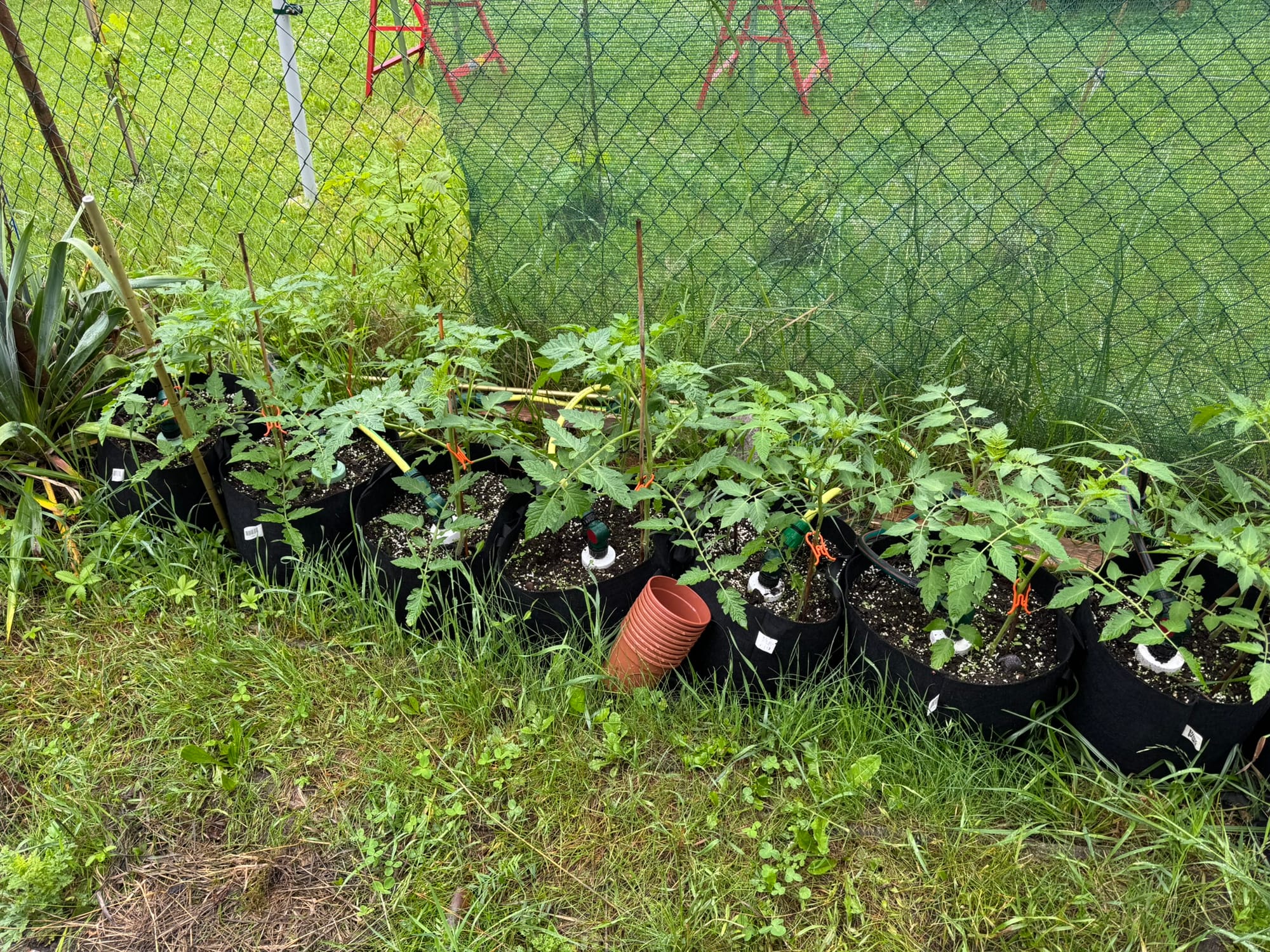
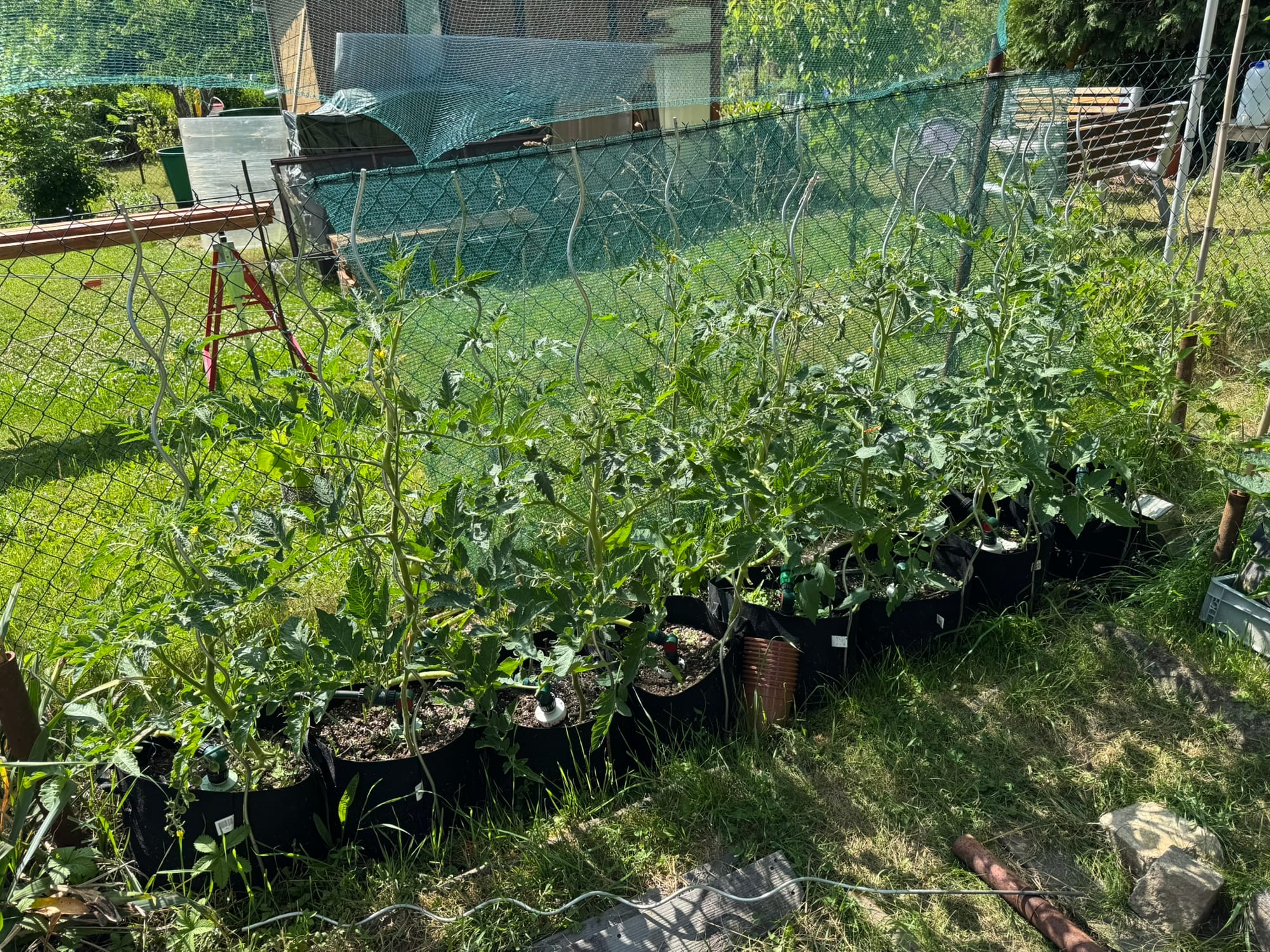
Soil tomatoes are doing just their thing
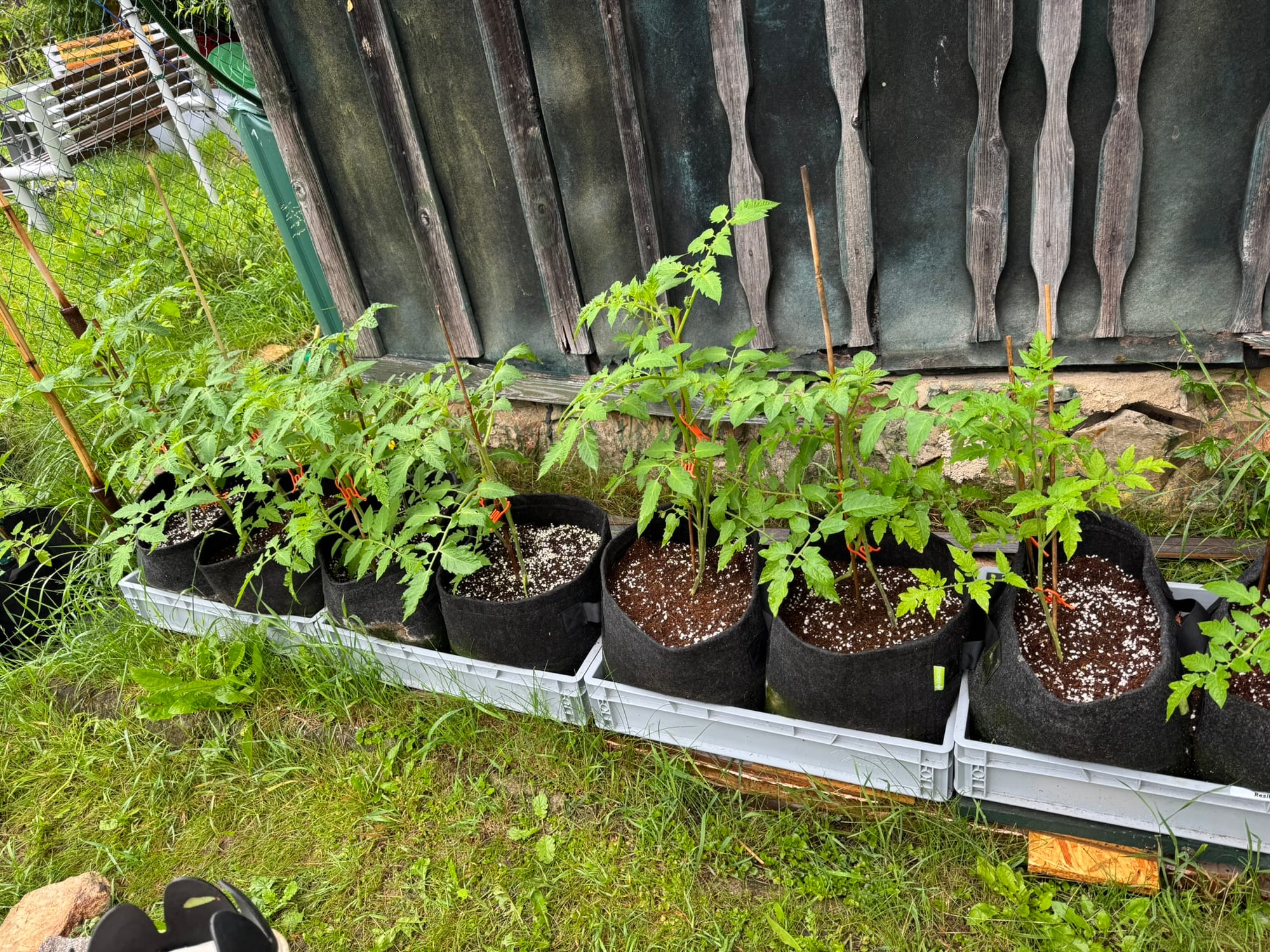
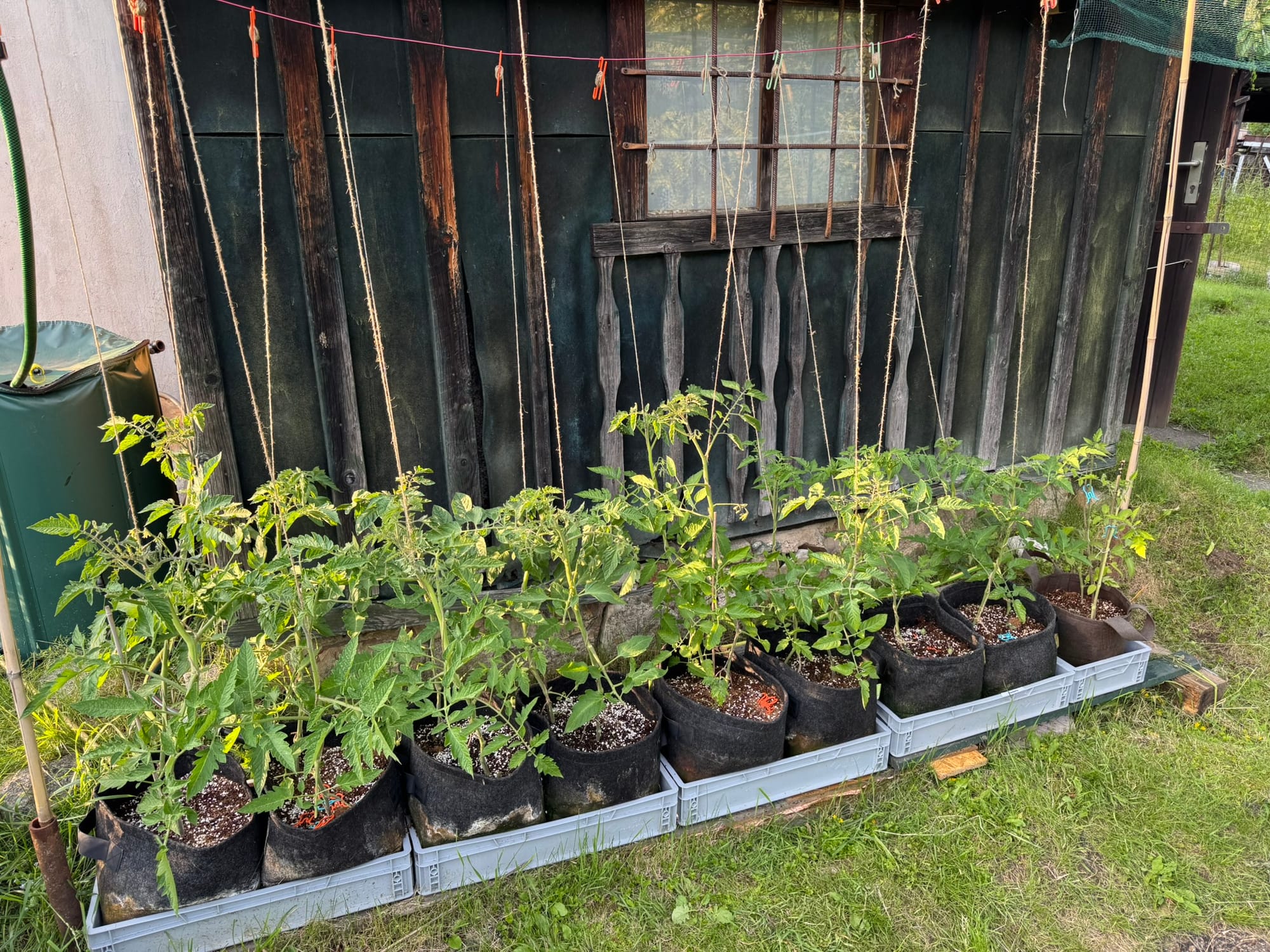
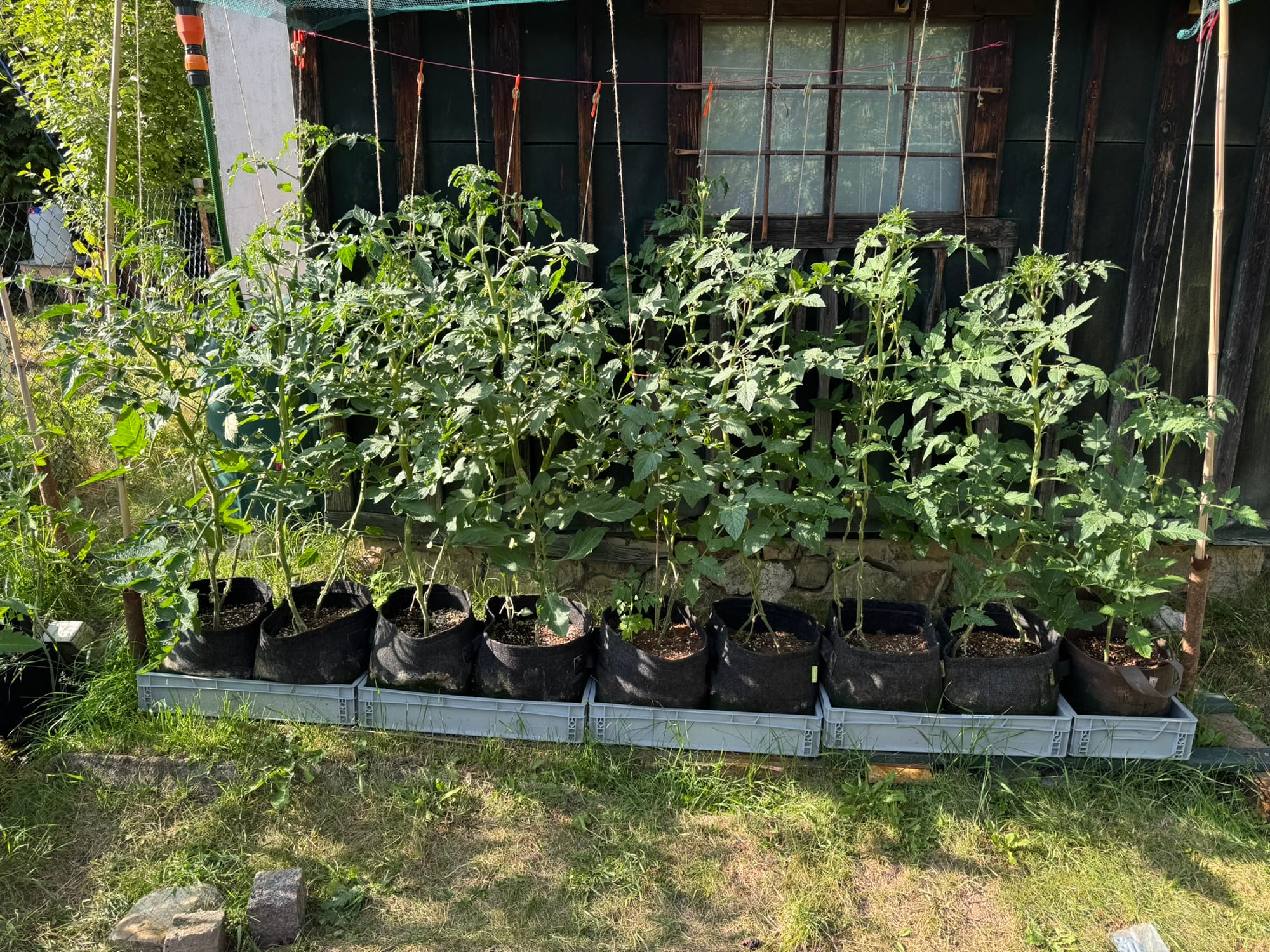
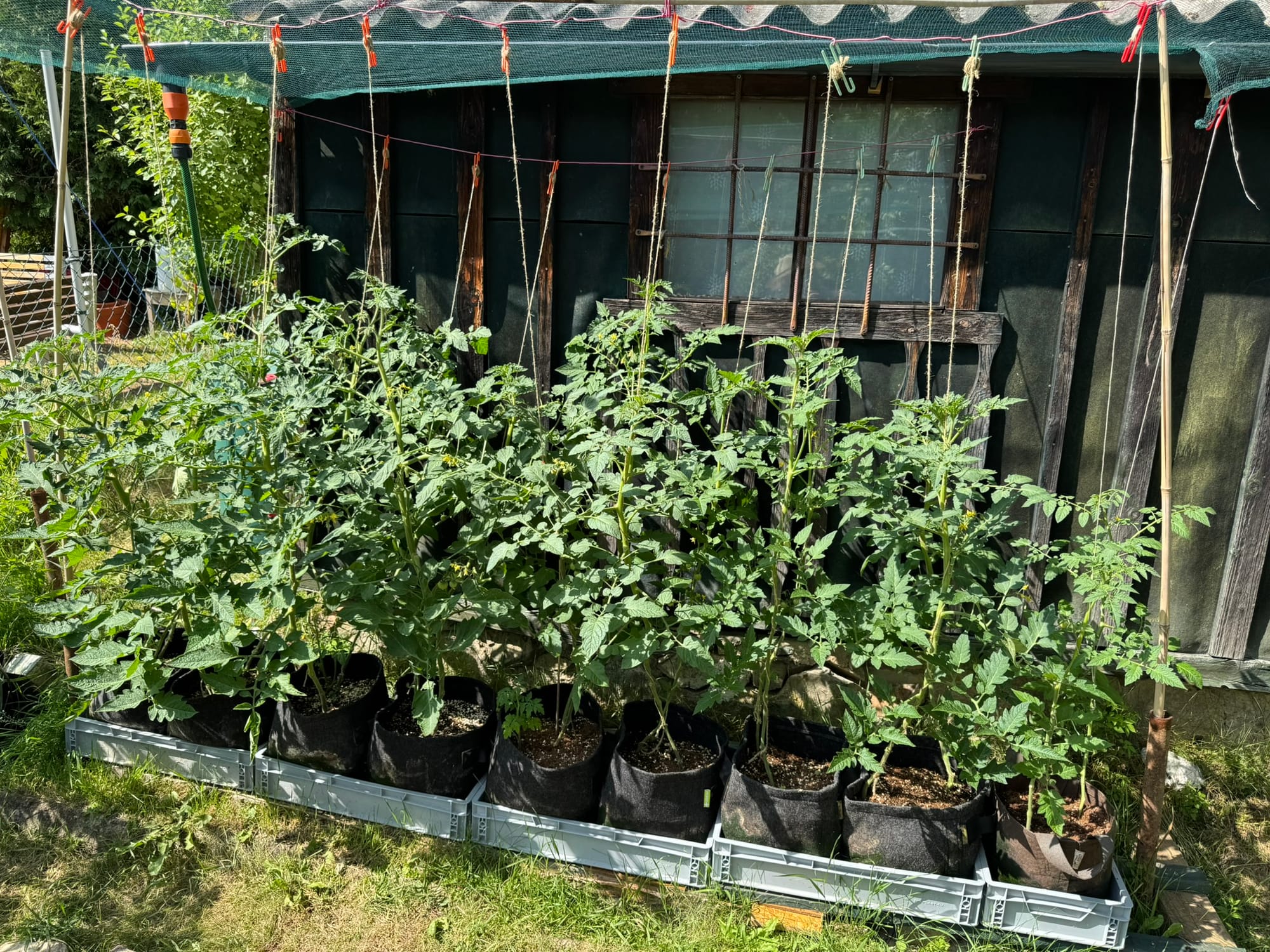
I managed to fit one more bag of tomatoes into the hydro setup, bringing the total to 18 this year. I ran out of floating valves, though. I usually use the AutoPot AquaValve5, which costs around $30 each. They're good, designed to create wet-dry cycles, but thirty bucks is a lot. I ordered a batch of $3 float valves, made some minor modifications to the box, and they're working just as well so far.
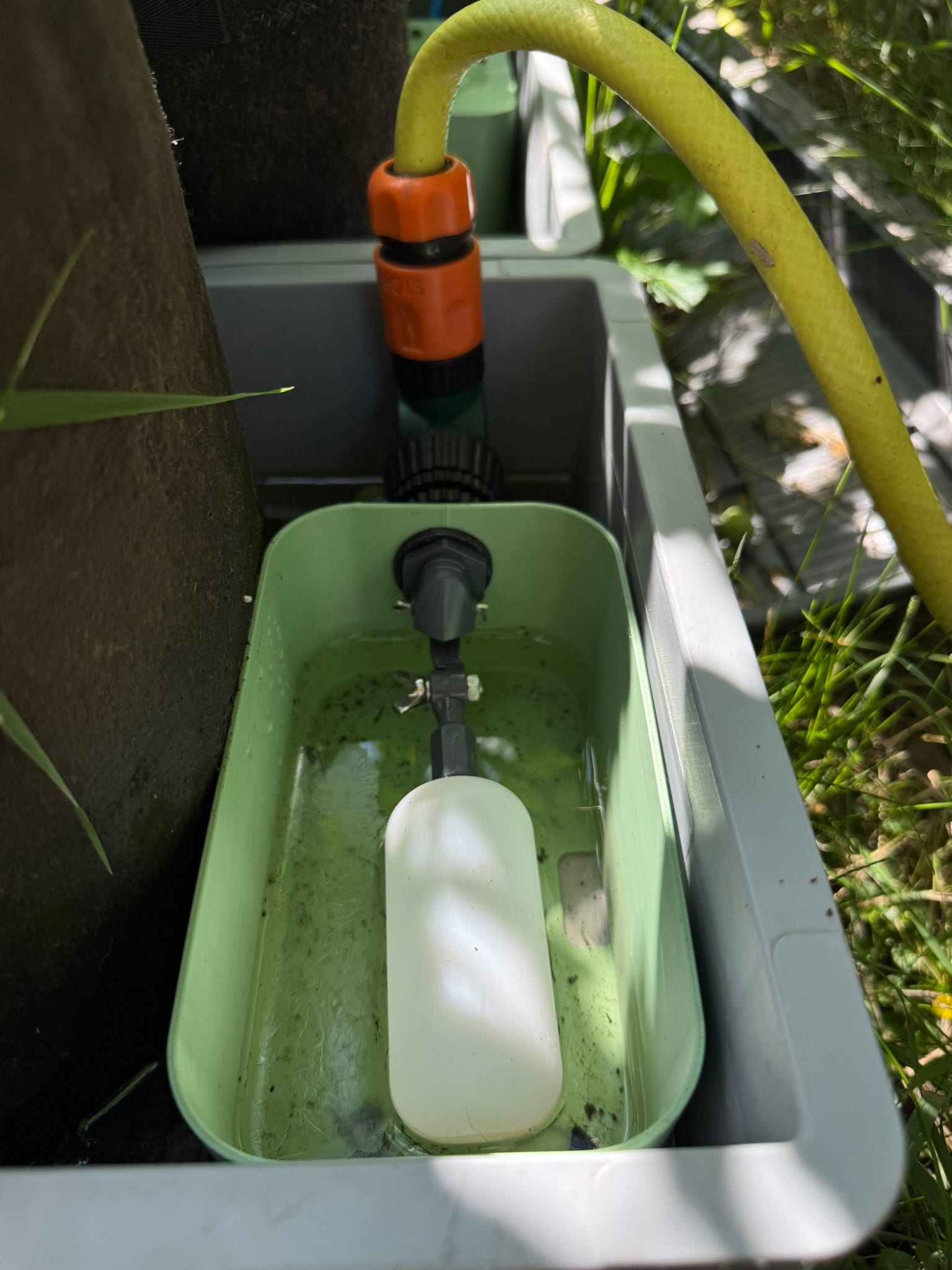

My bell peppers have mostly recovered from overwatering. A few died, but I wasn't expecting them all to survive. The ones that made it have grown enough canopy to cover the damage.
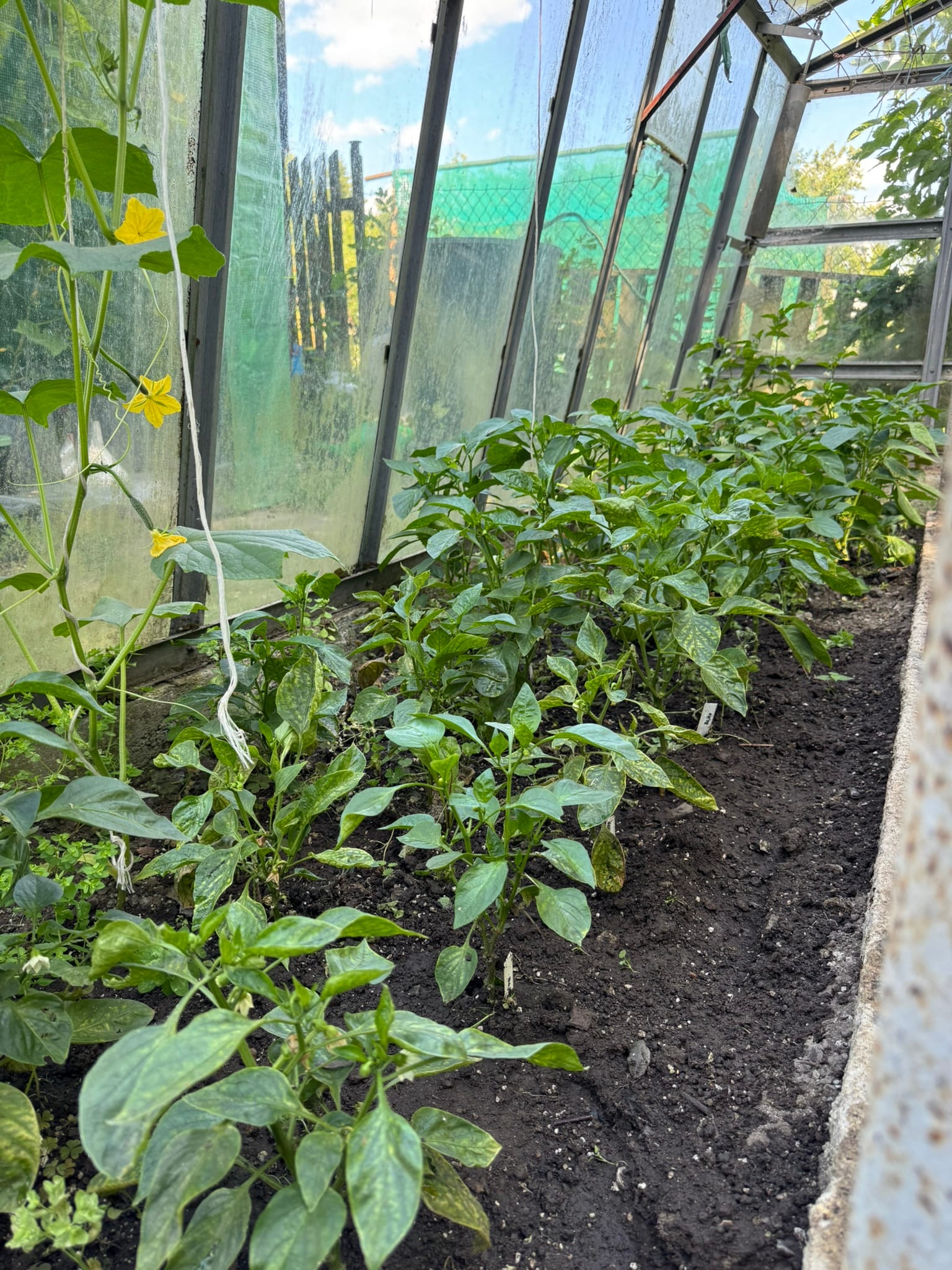
The jalapeños, though, are struggling. A heavy spider mite infestation took out two plants, and I'll probably lose more. I'm drenching everything in neem oil and hoping the rest will produce something.
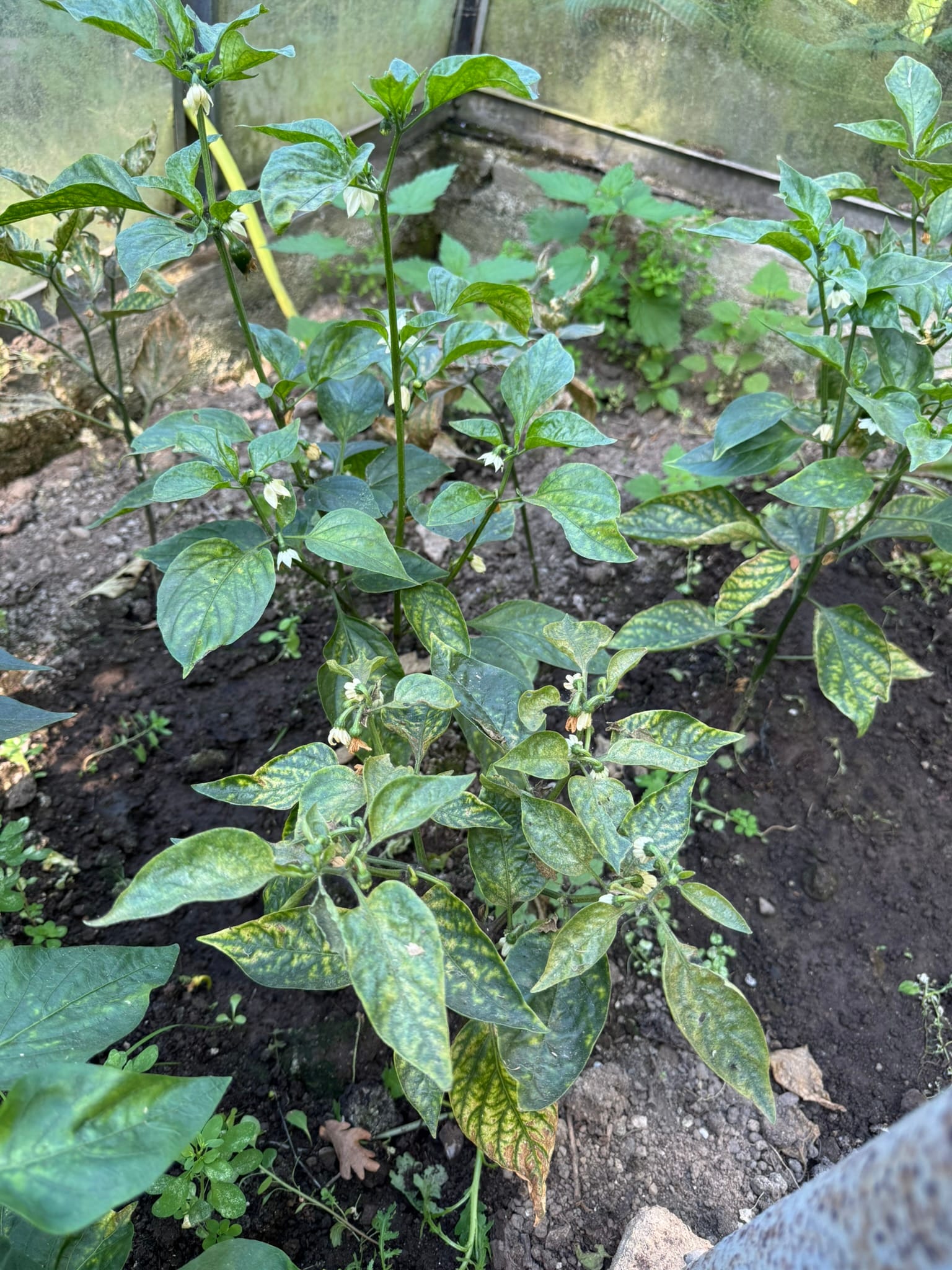
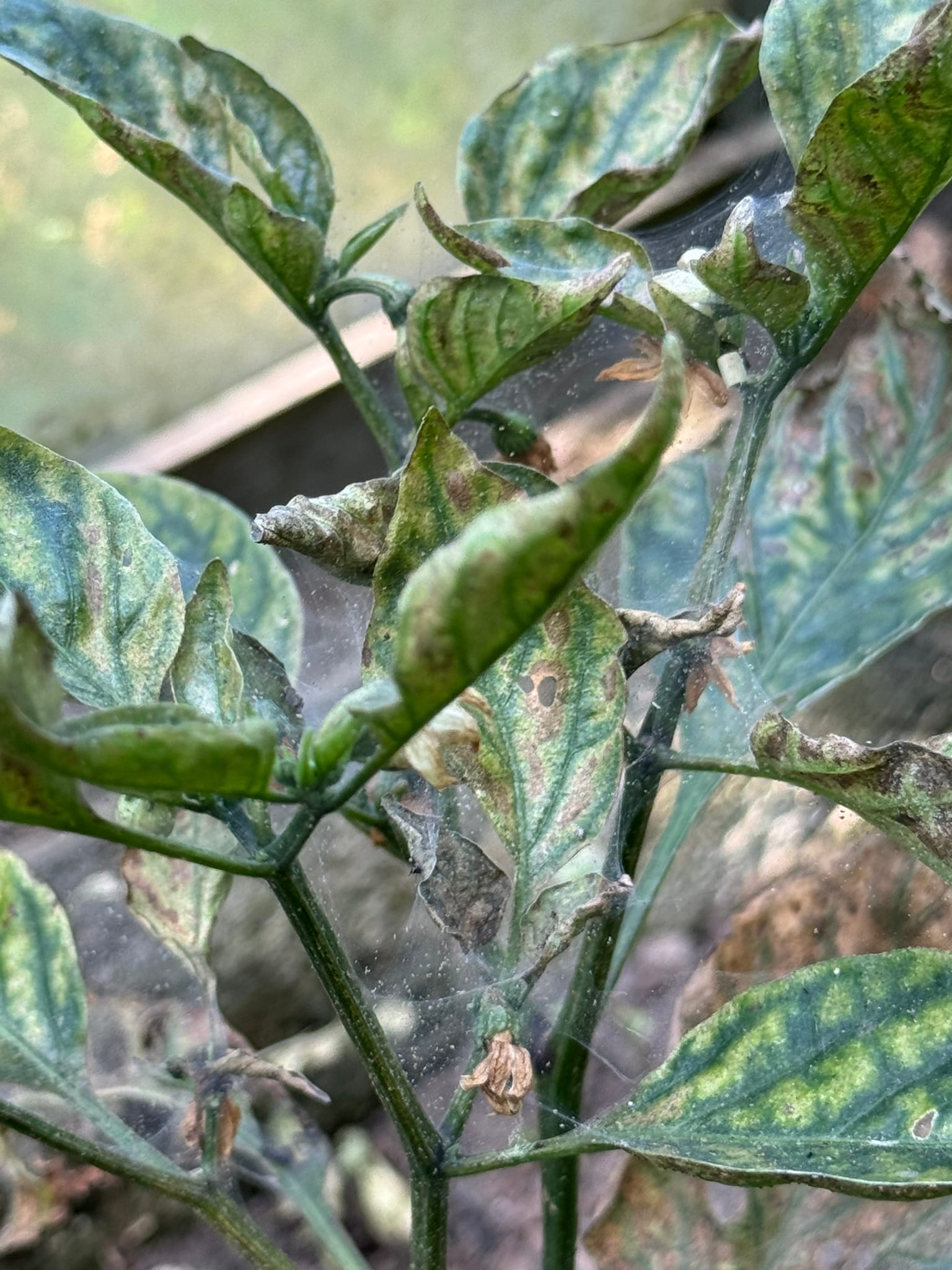
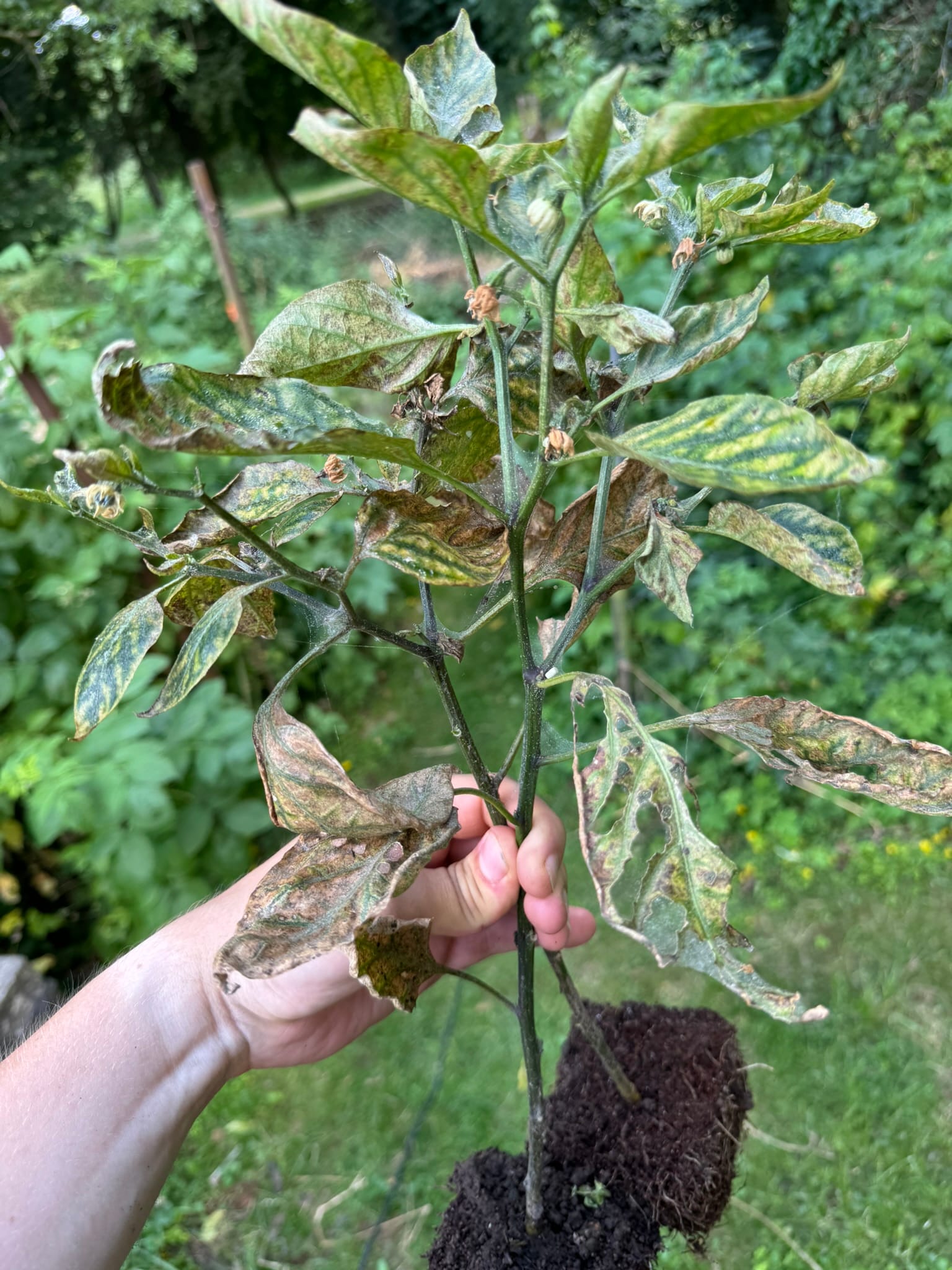
So many mites, it's disgusting
The other half of the greenhouse looks much better. The Bonda Ma Jacques habaneros are healthy and full of fruit. Leaves show occasional mite damage, but a neem oil bath sorts that out. Same with the cayenne.
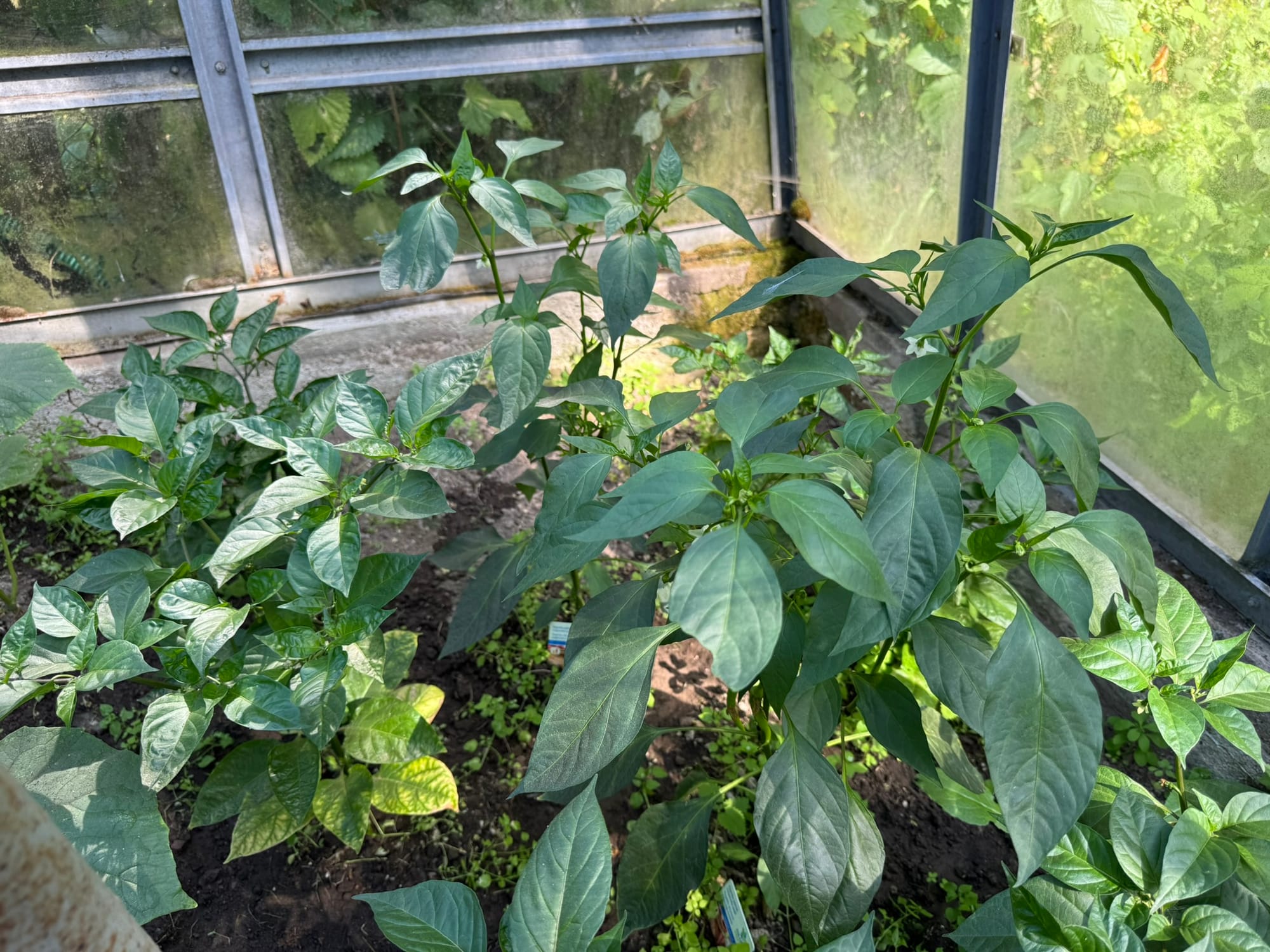
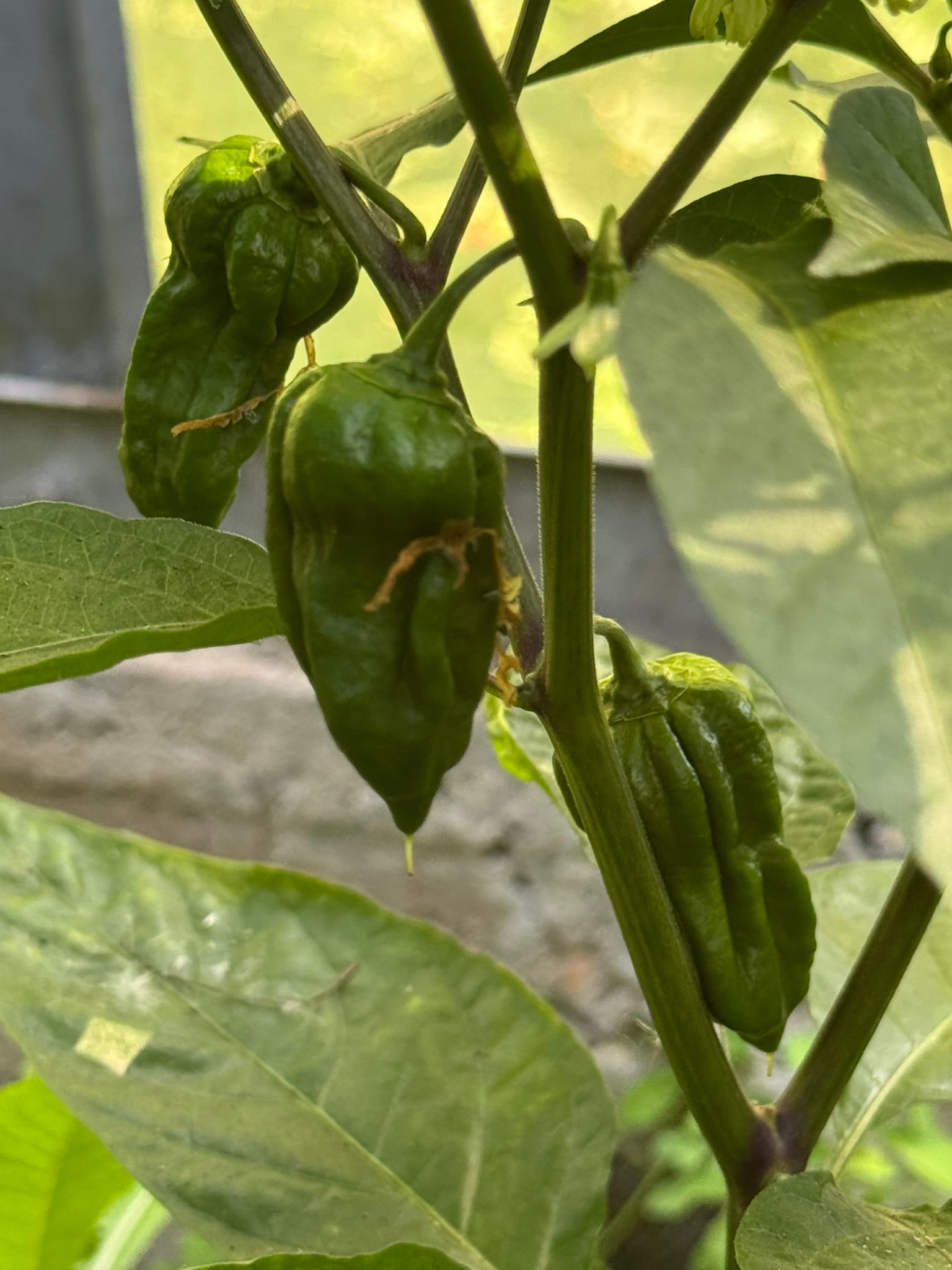
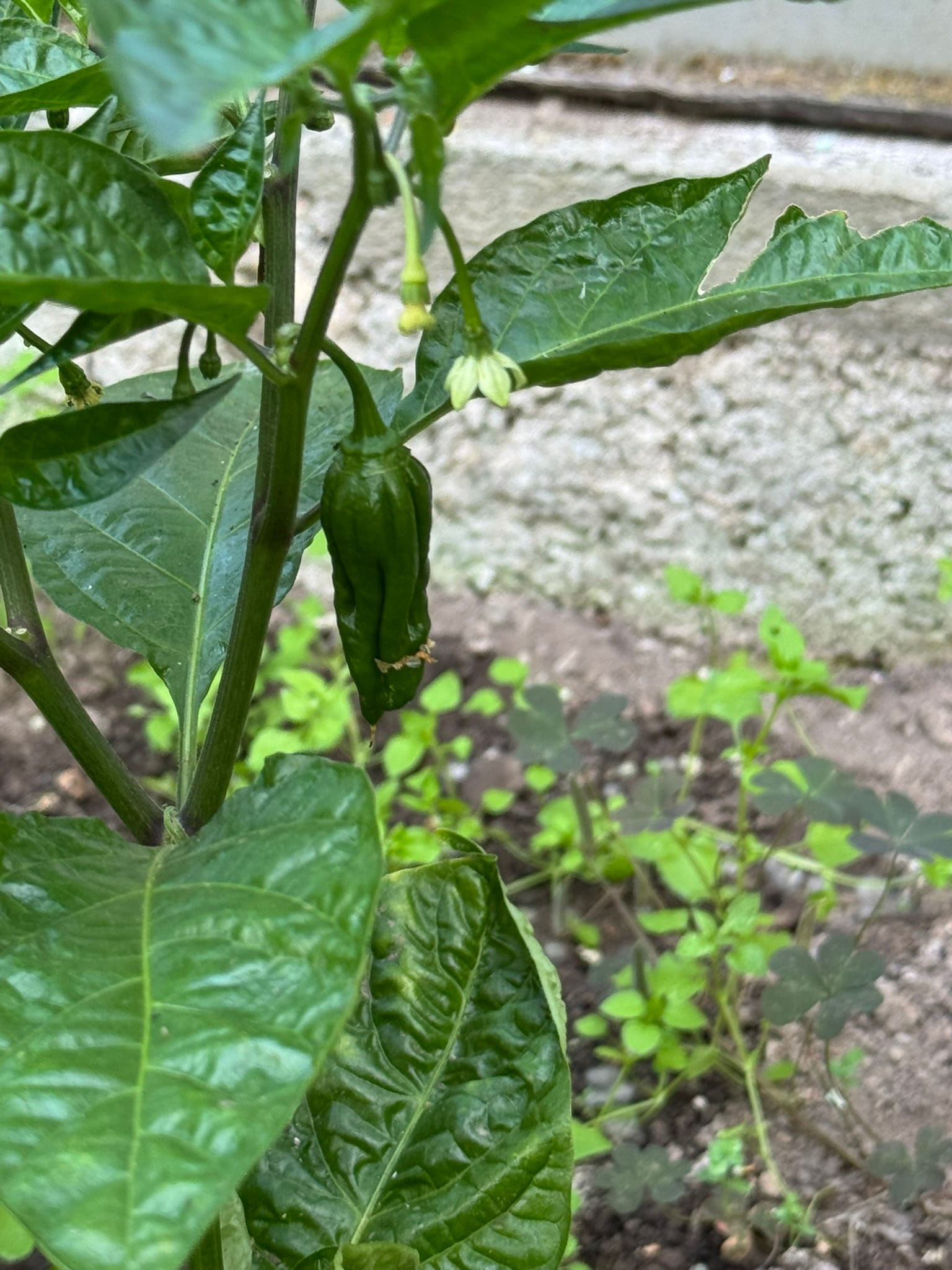
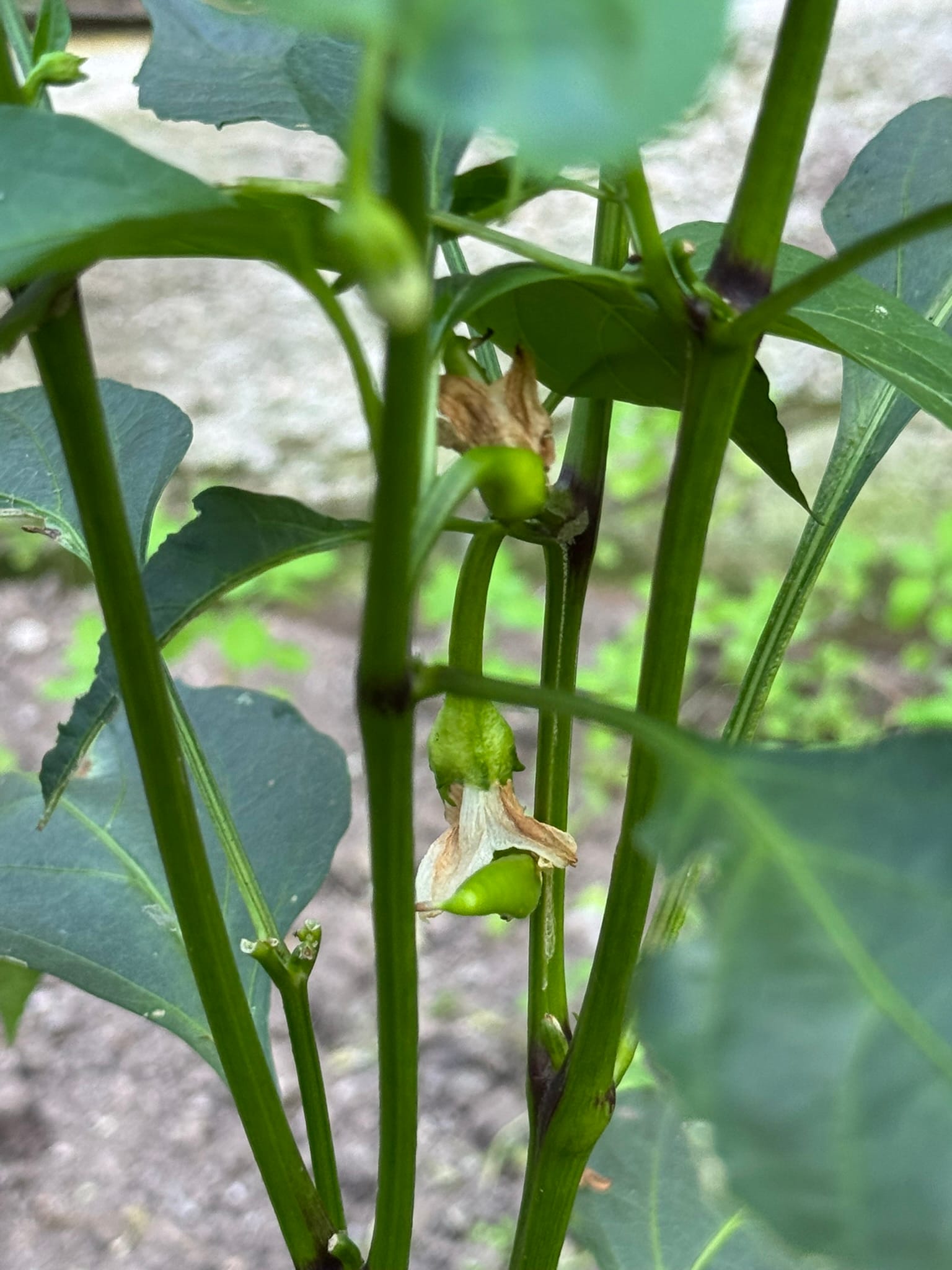
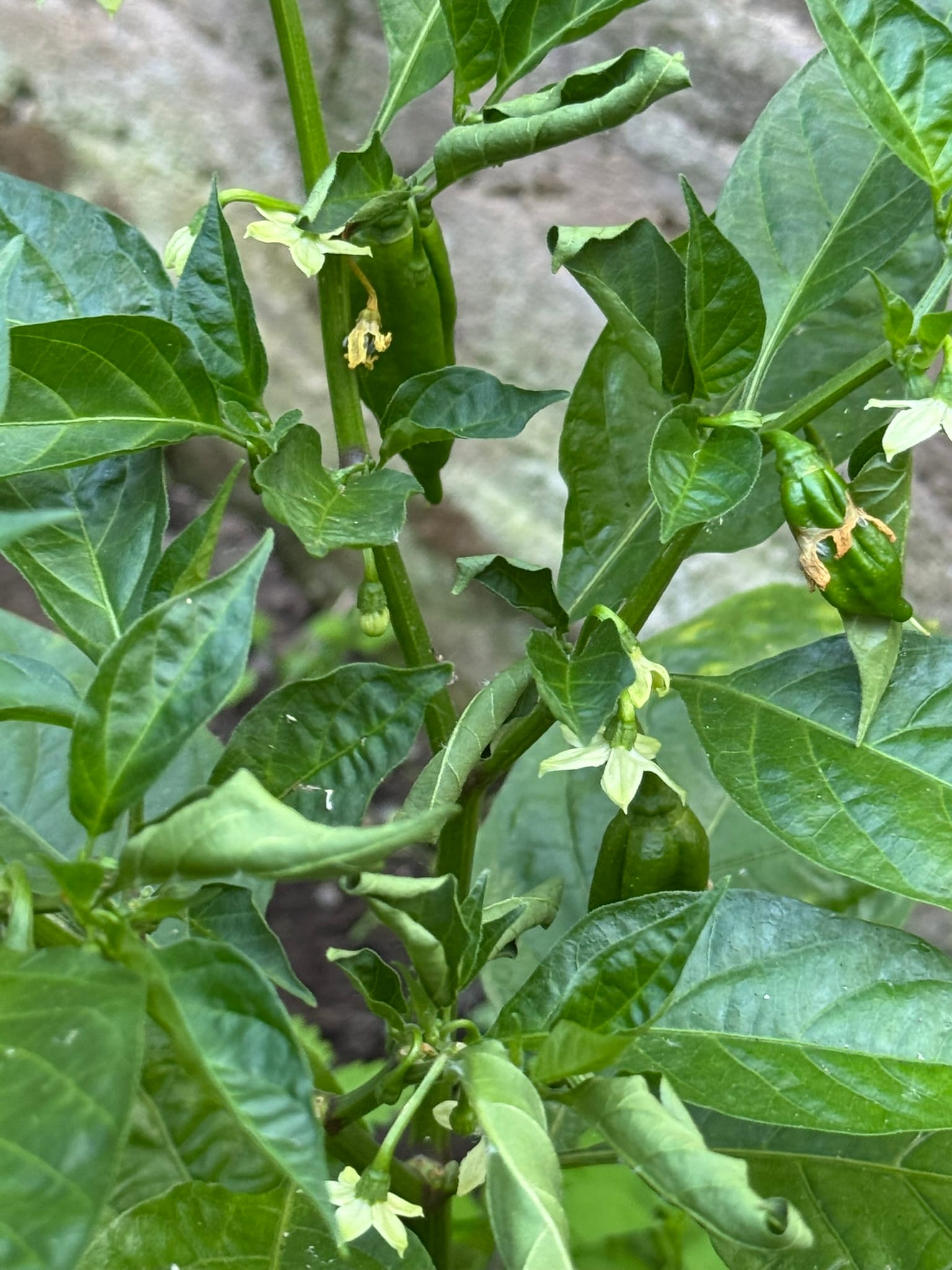
Potatoes have gone through their vegetative phase and flowered. By the end of the month, they're starting to die back, which is expected from this early variety. I should be able to harvest around mid-July. So far, they've been one of the few crops untouched by pests or disease, knock on wood. I did a test harvest from one bag and got more, larger tubers than last year. Once they're out, zucchinis will go in.
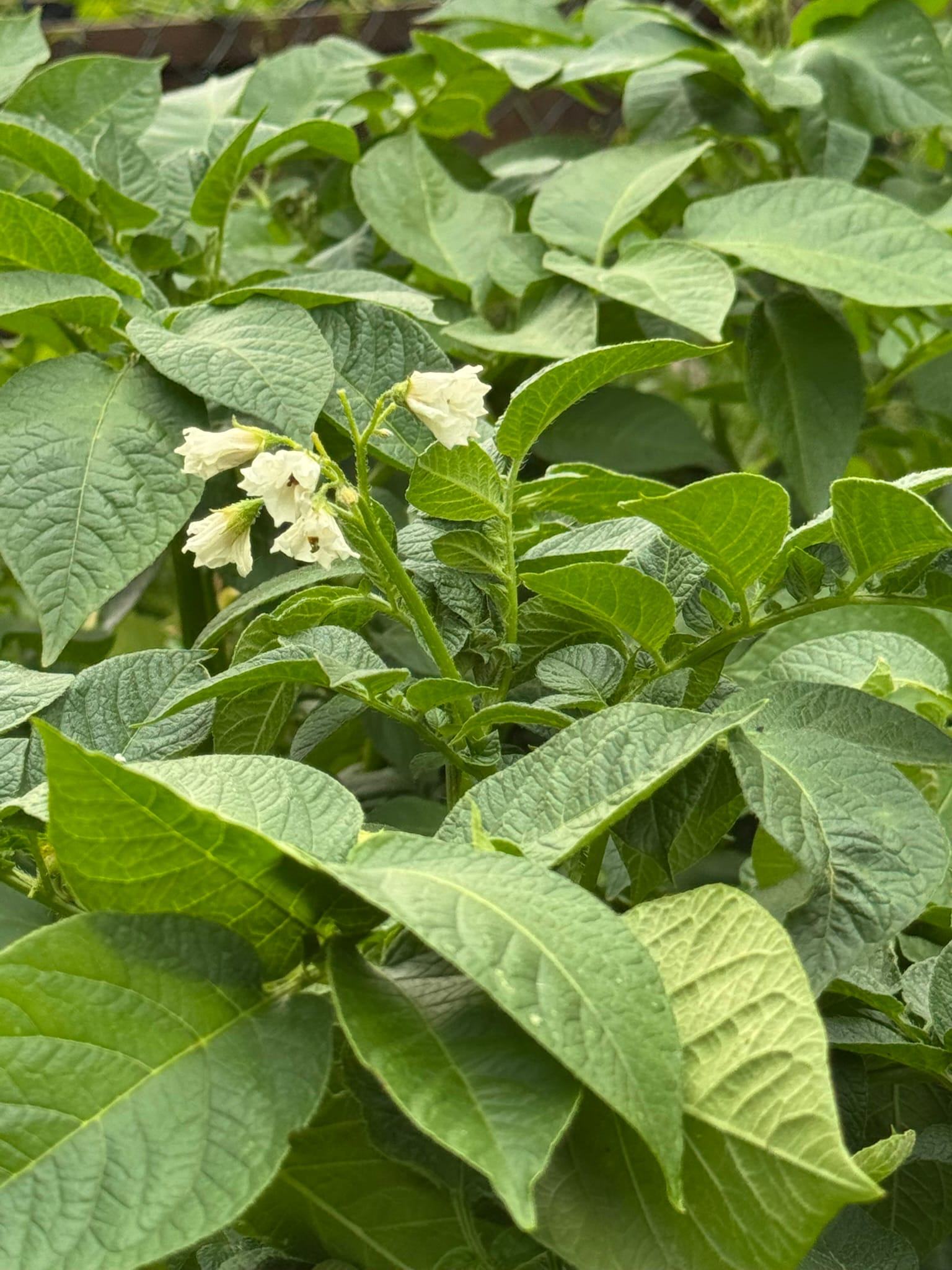
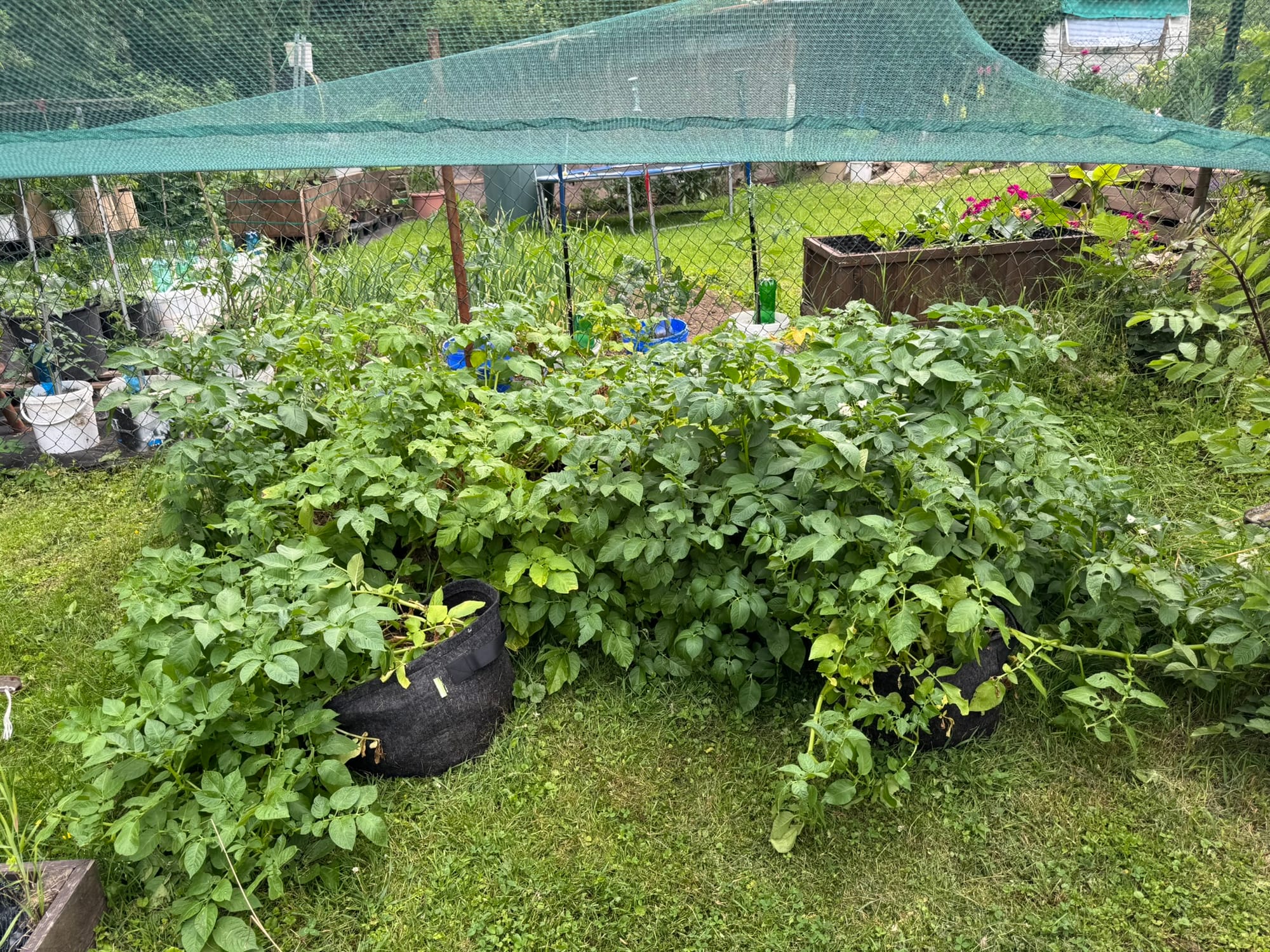
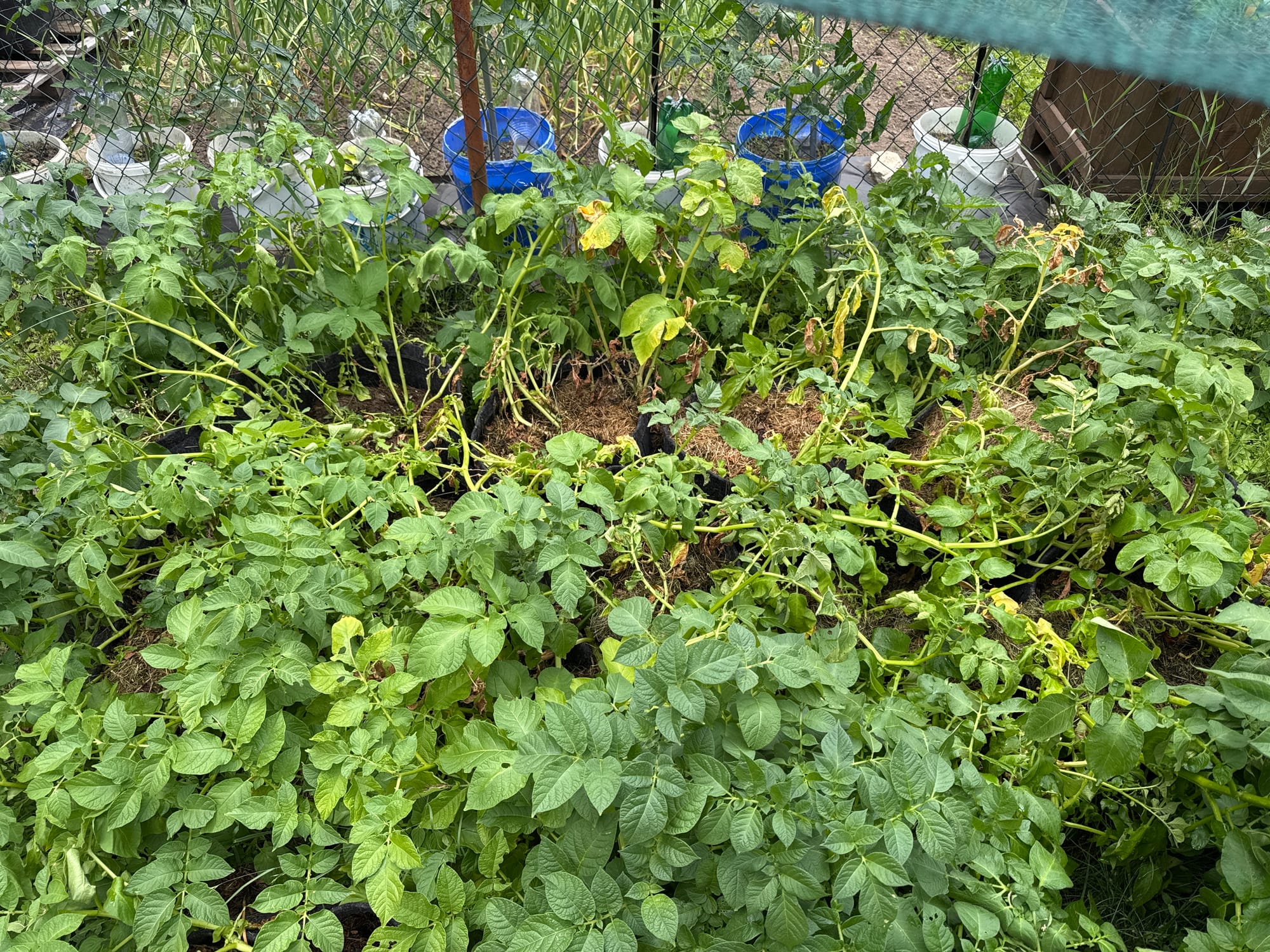
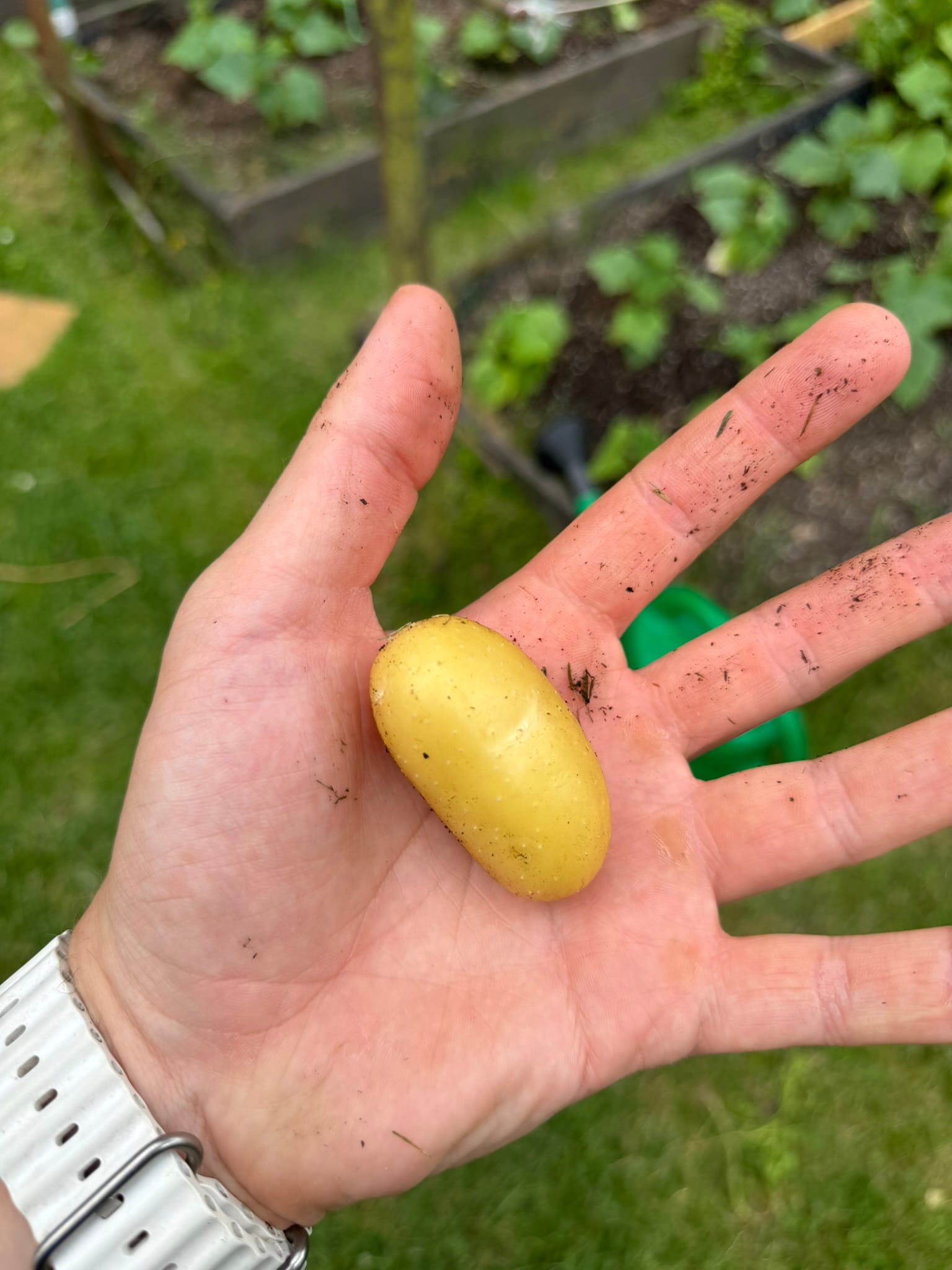
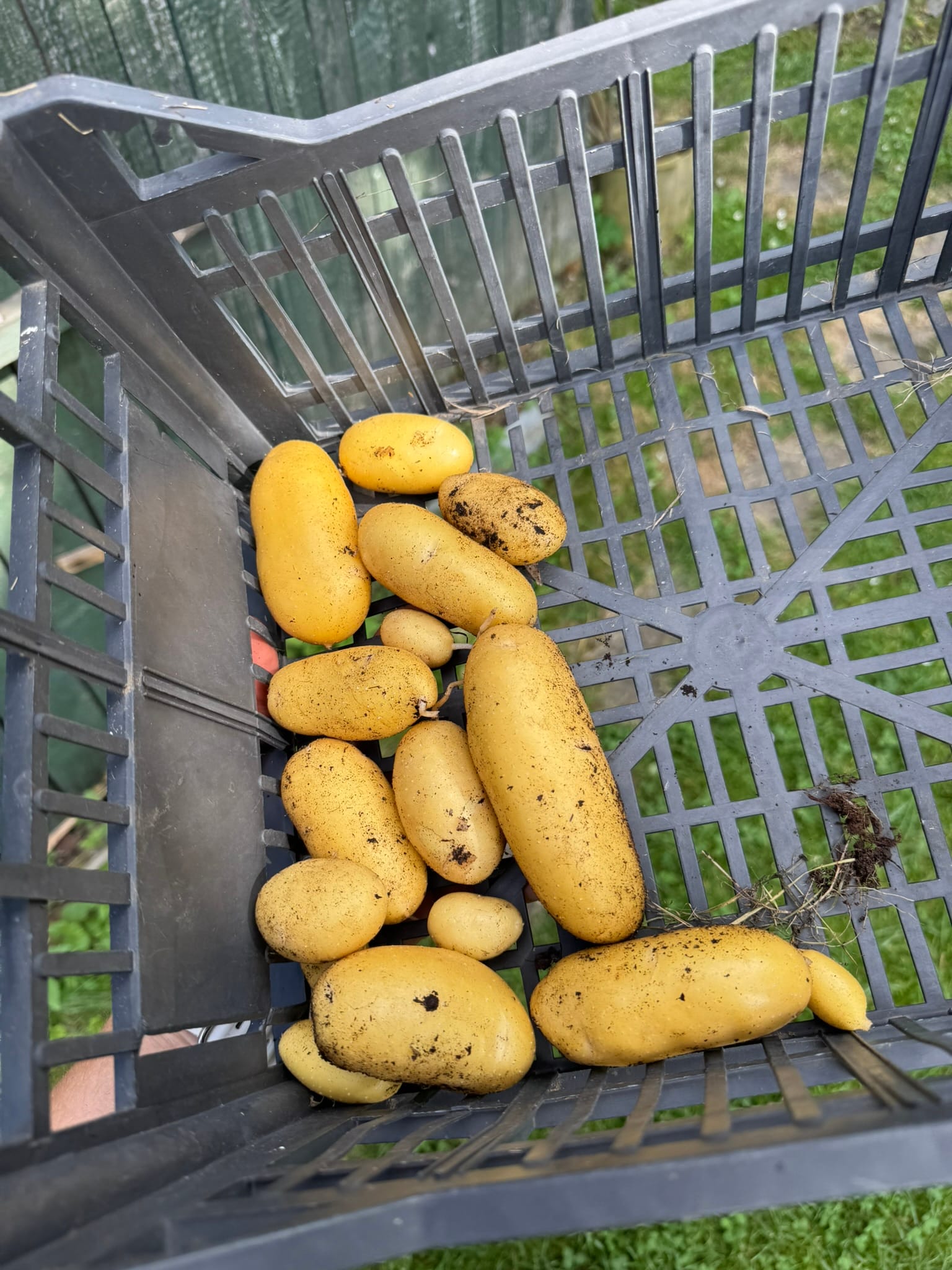
I'm also expanding into nightshades this year. I've never grown eggplants before, so I picked up a small, ball-shaped one from the nursery, on the same visit I got the melons. It's mostly for learning, to see if I want to grow more next season.
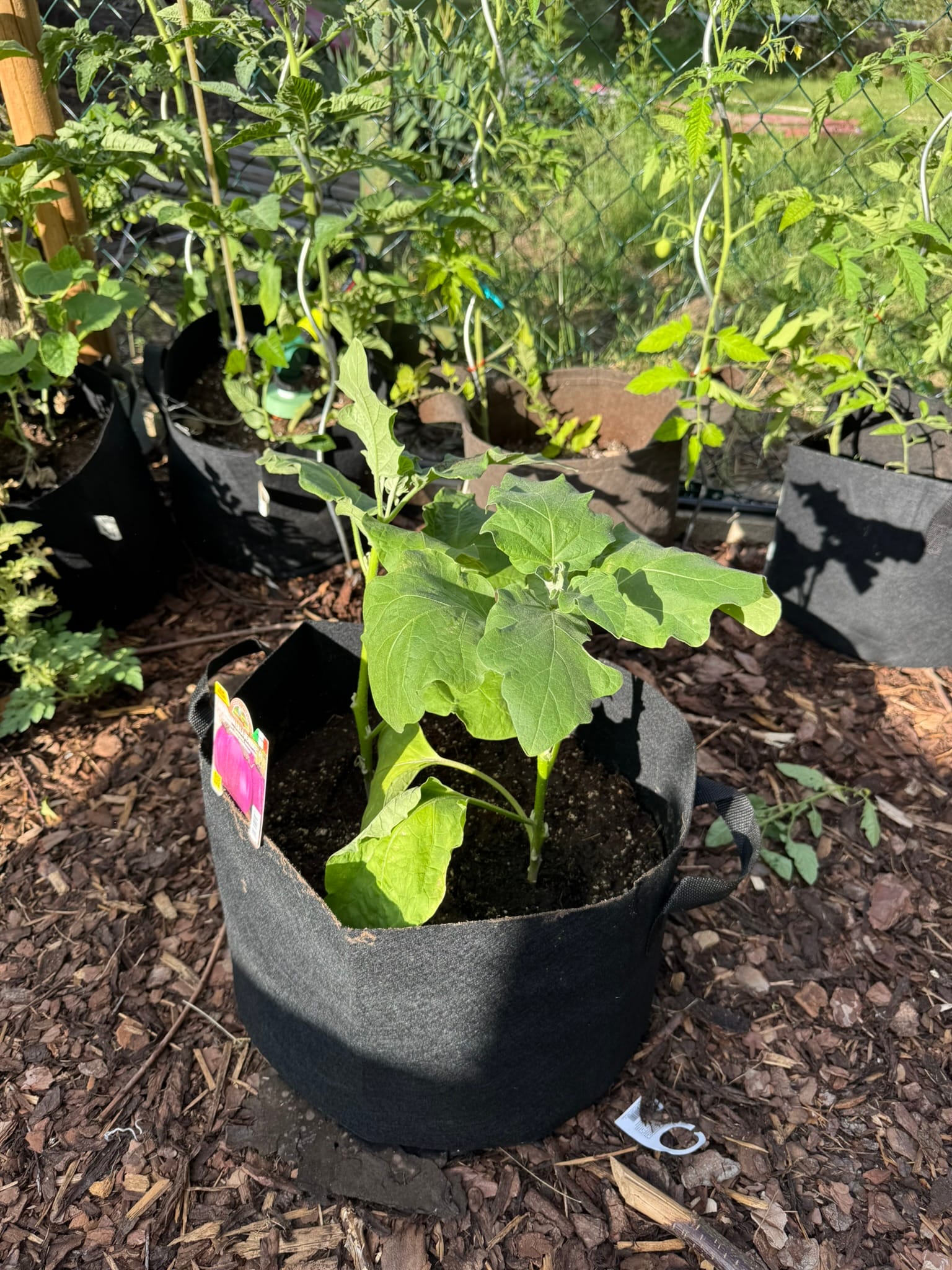
And now, something a bit nerdy. I've noticed something worrying in my Micro-Toms and Red Robins. I save seeds each year from the bushiest plants and the largest fruit, which effectively results in selective breeding. That's fine for indeterminate types, but it doesn't work well for heavily hybridized dwarf varieties. Micro-Toms are engineered to be pocket-sized. By saving seeds from the strong ones, I'm unintentionally removing the dwarf genes. They're slowly turning into indeterminate types. I'll probably have to go back to older saved seeds or order new ones next year. It's a bit of a setback, since I wanted to turn my Micro-Toms into a hydroponic hybrid.
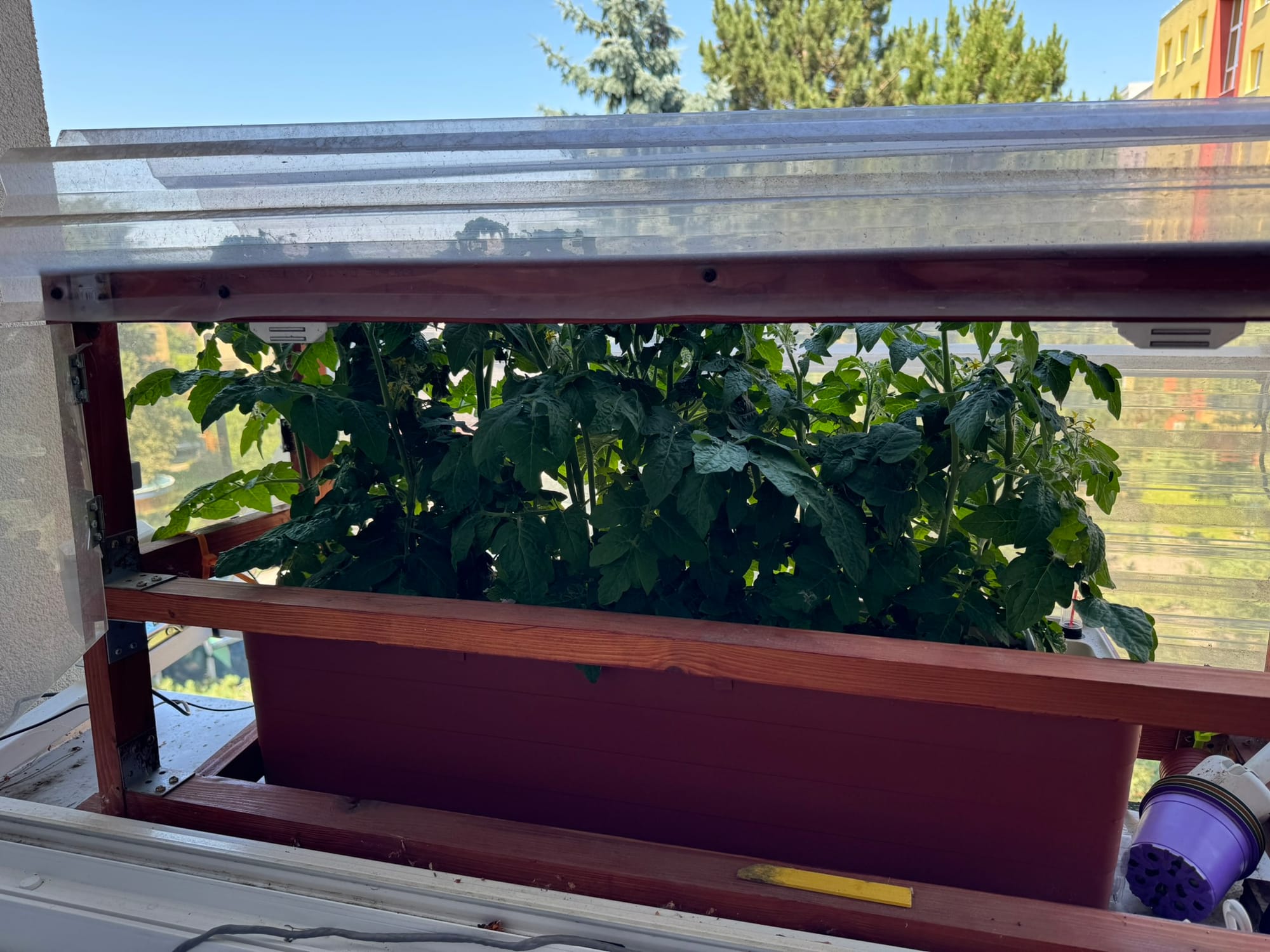
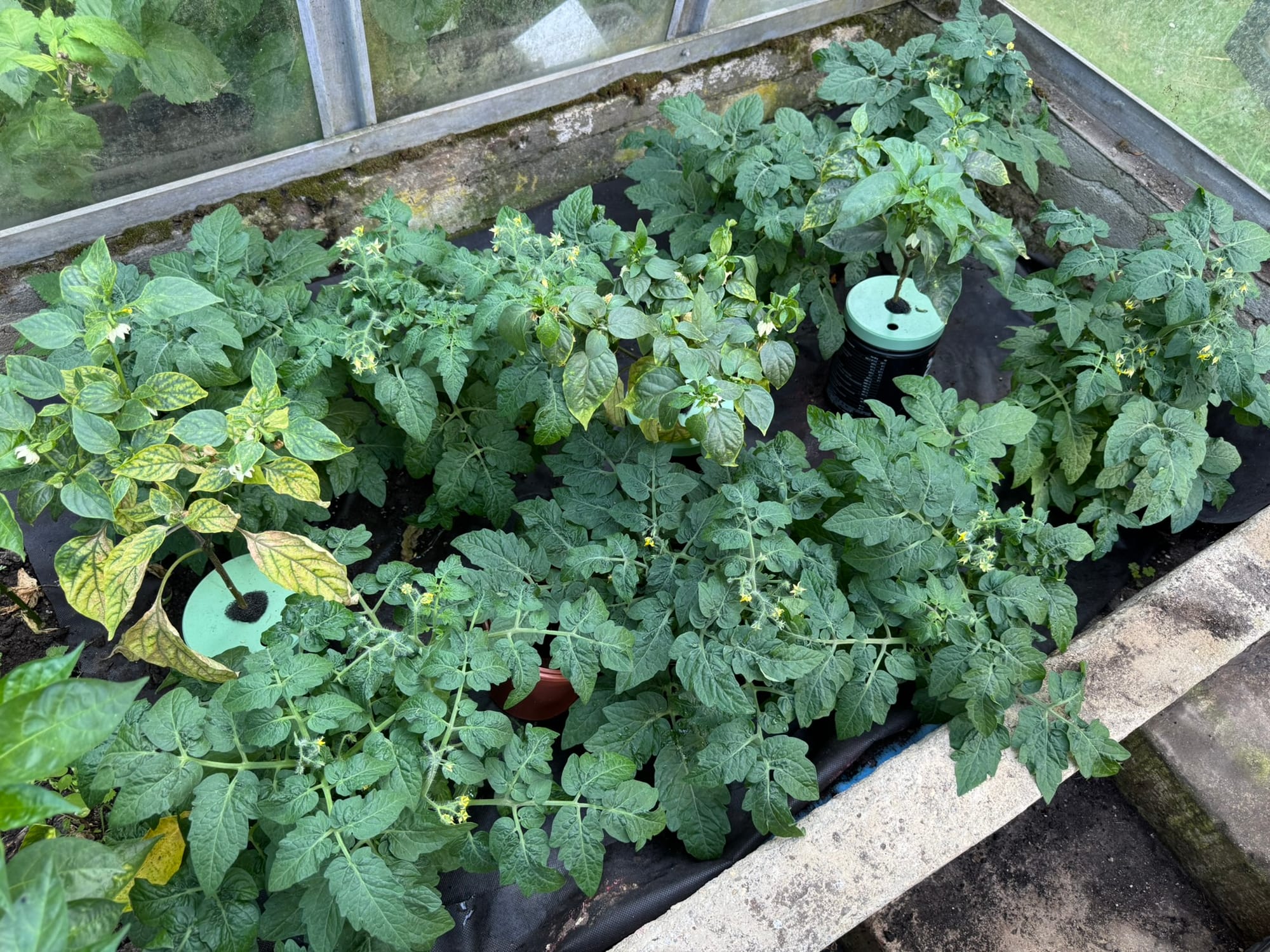
the allium valium
Both my onions and garlic are heading toward retirement. One of the storms bent their tops, but otherwise, they're fine. I'm planning to replace them with either kohlrabi or beets.
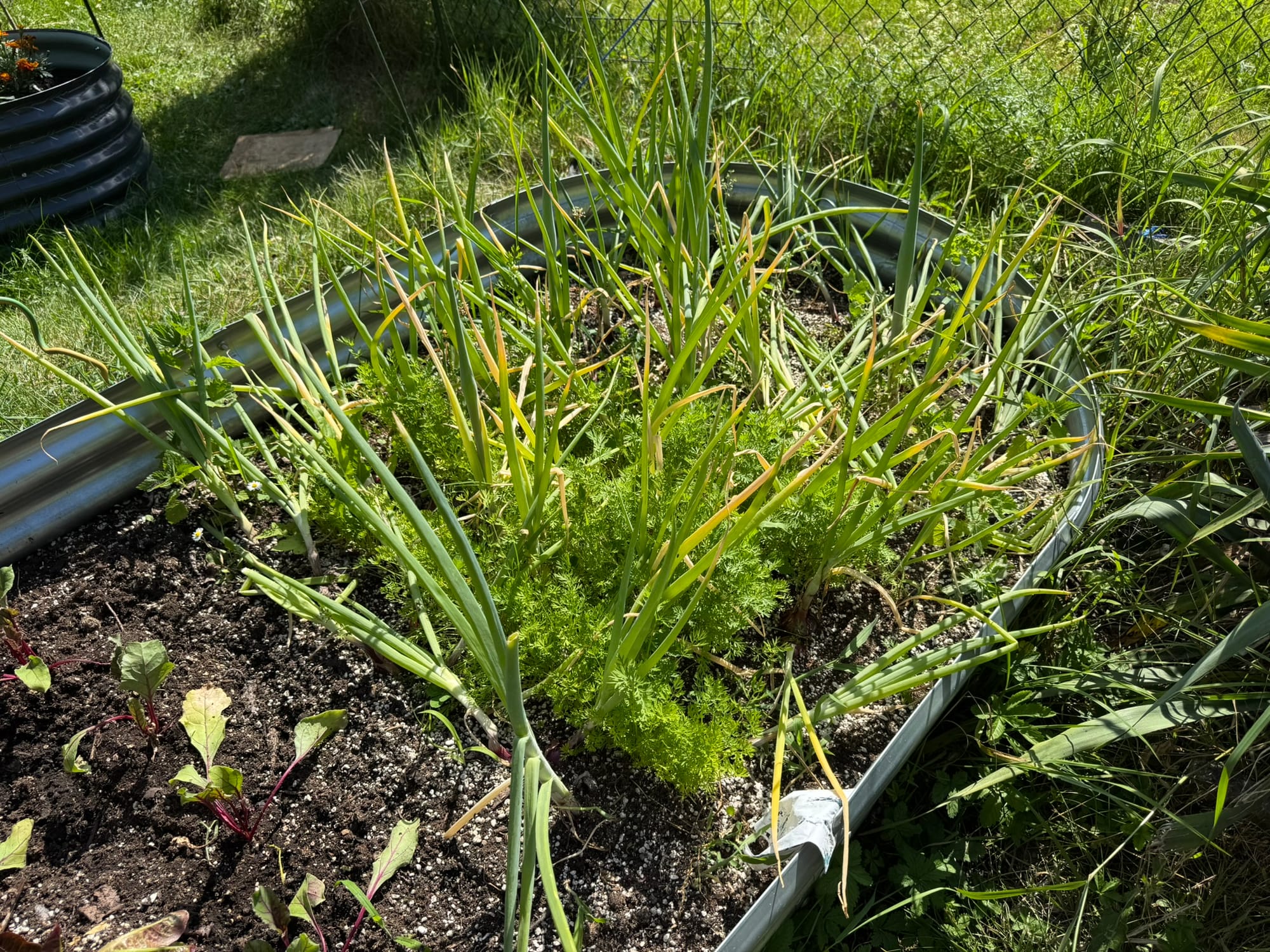
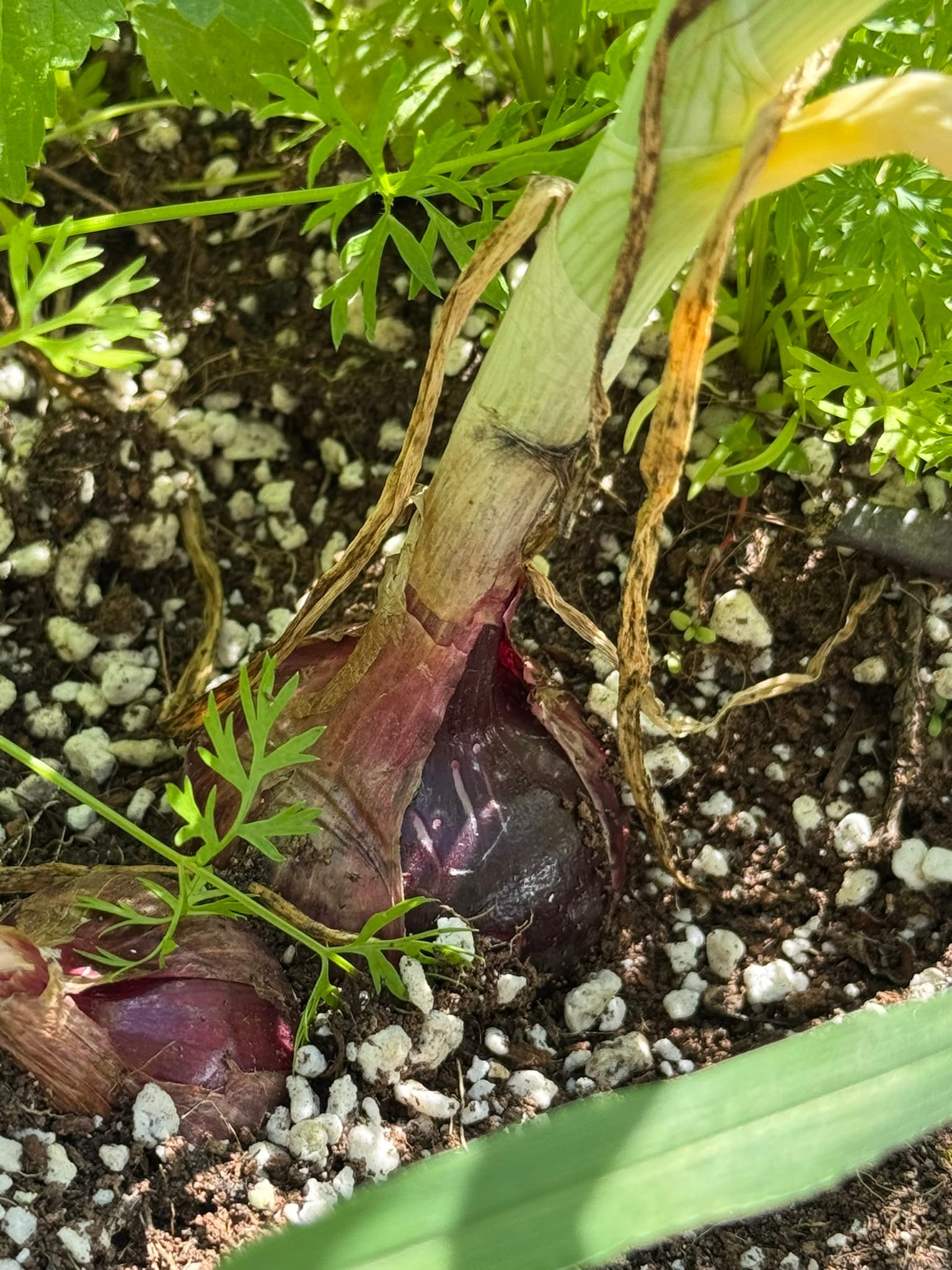
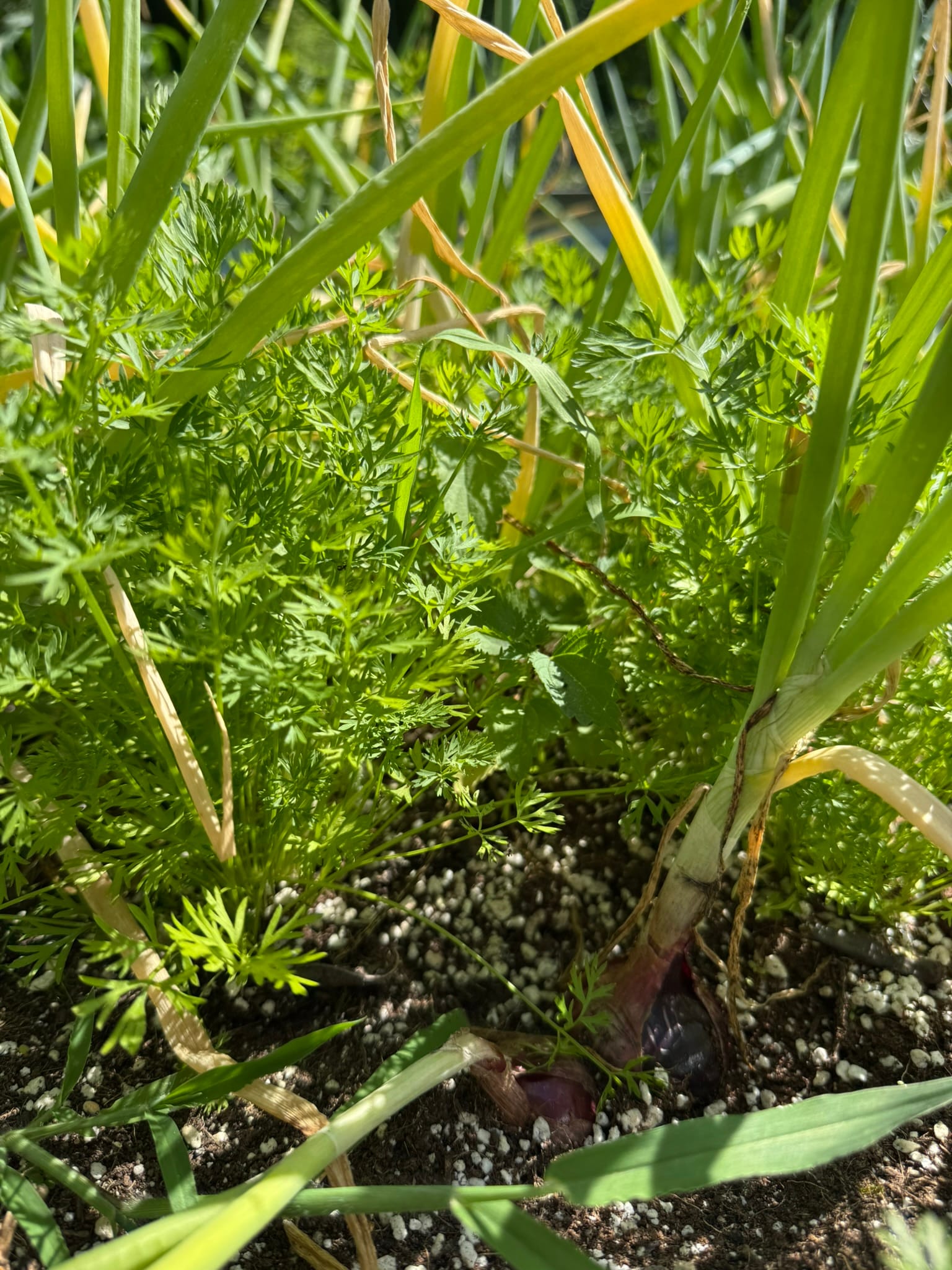
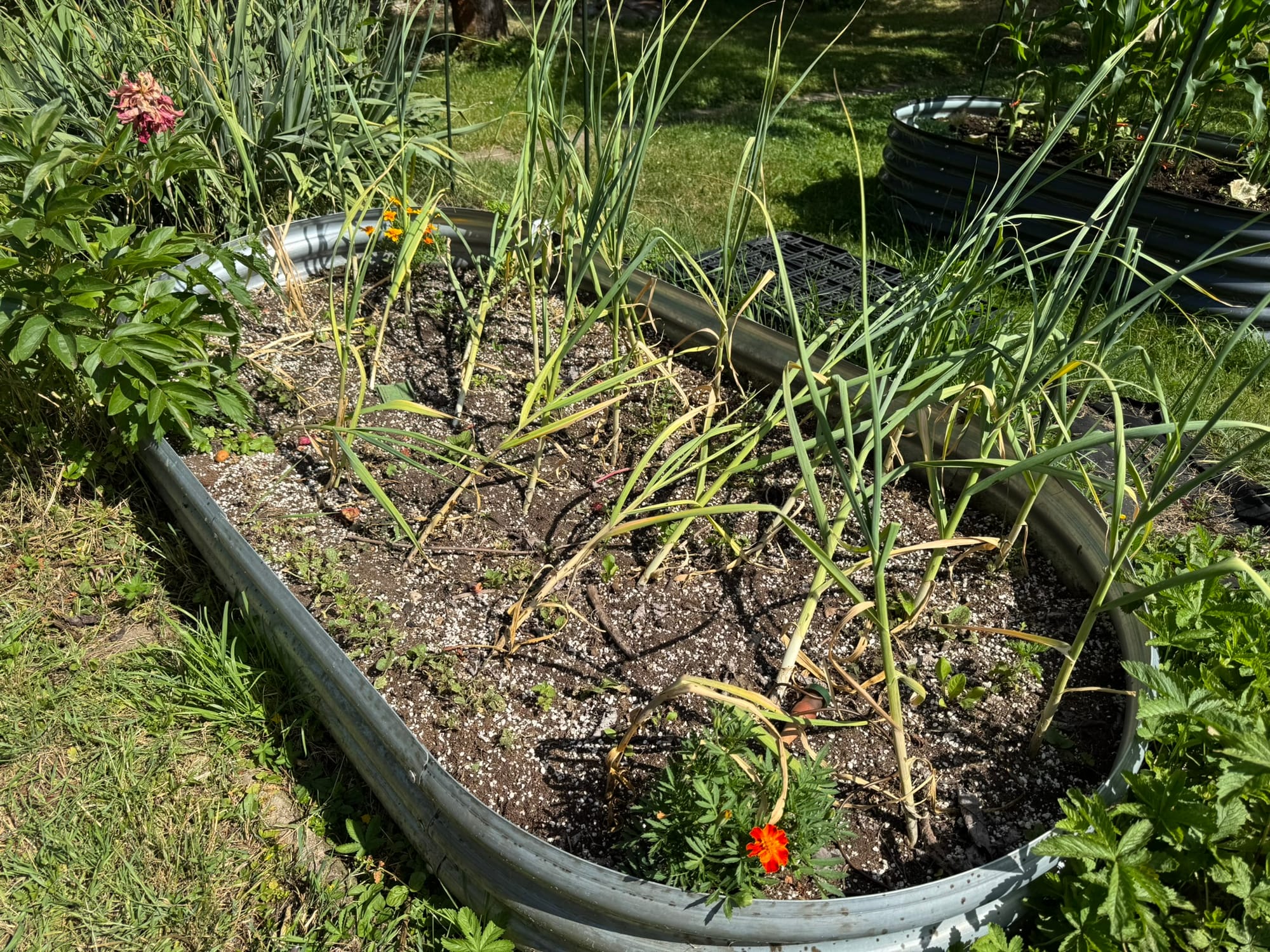
June also marked the end of the line for the sweet peas. I only had a few plants, so the harvest was more of a snack than a yield. I've already pulled them out and transplanted beets into their spot.
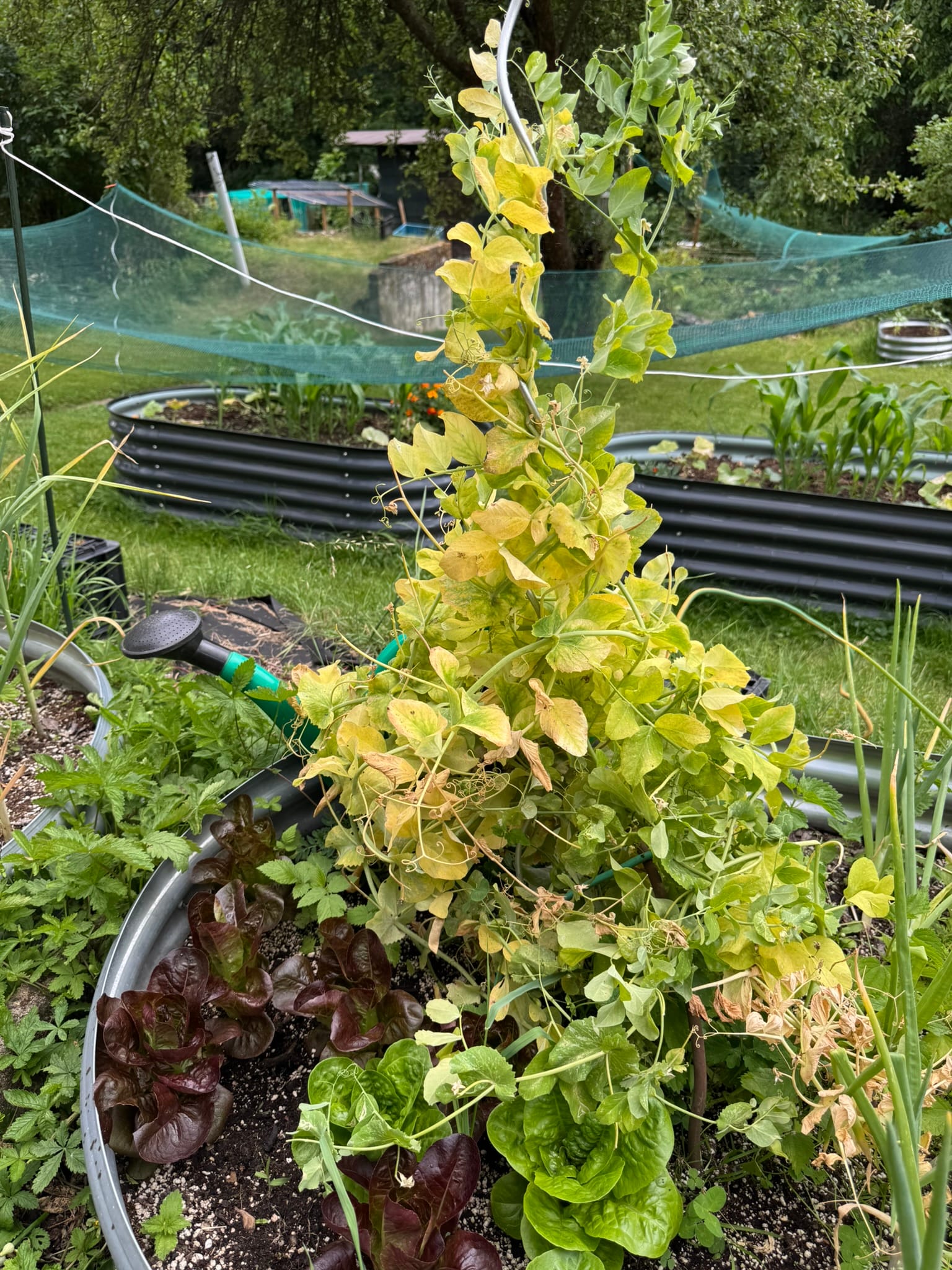
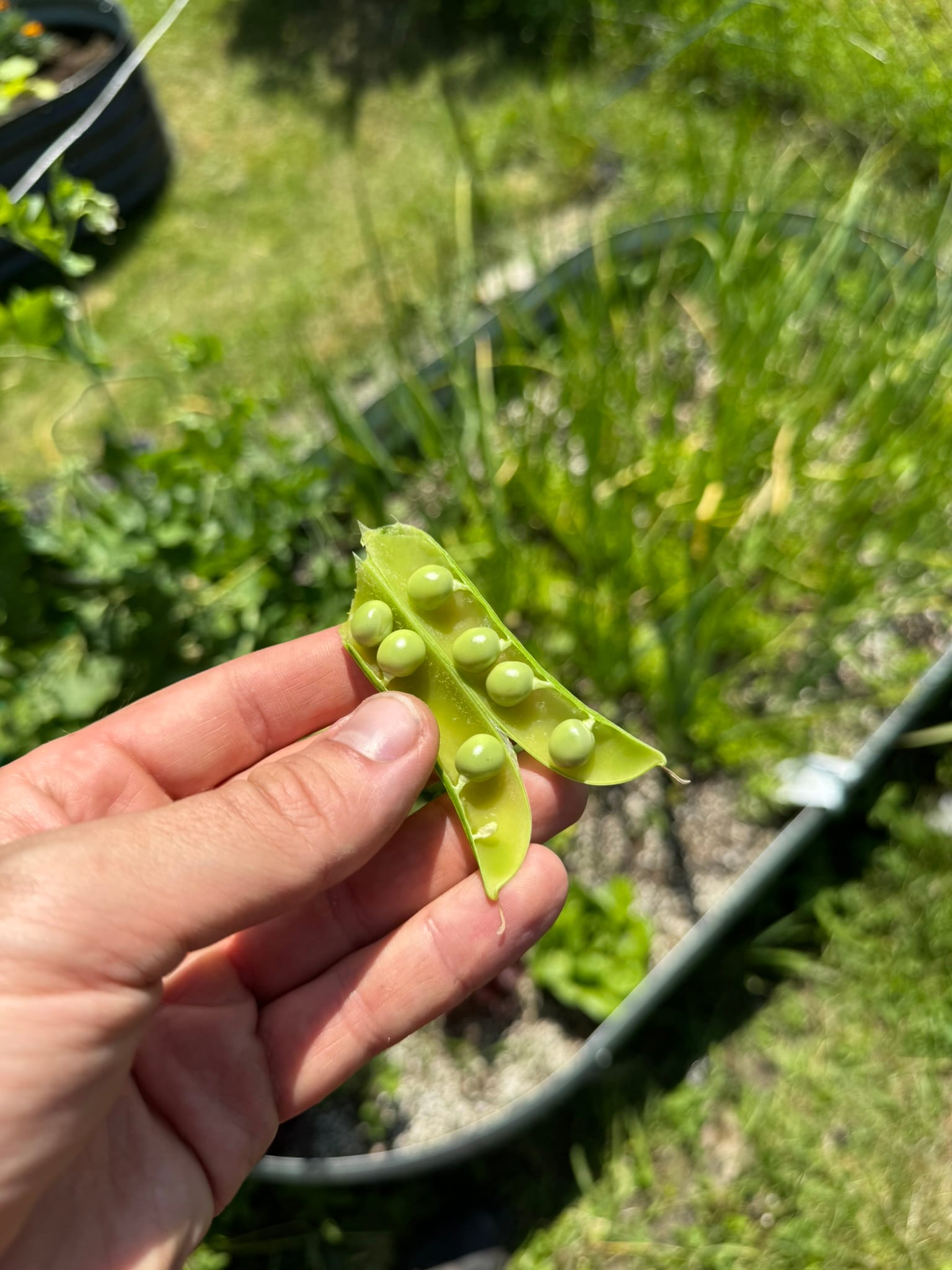
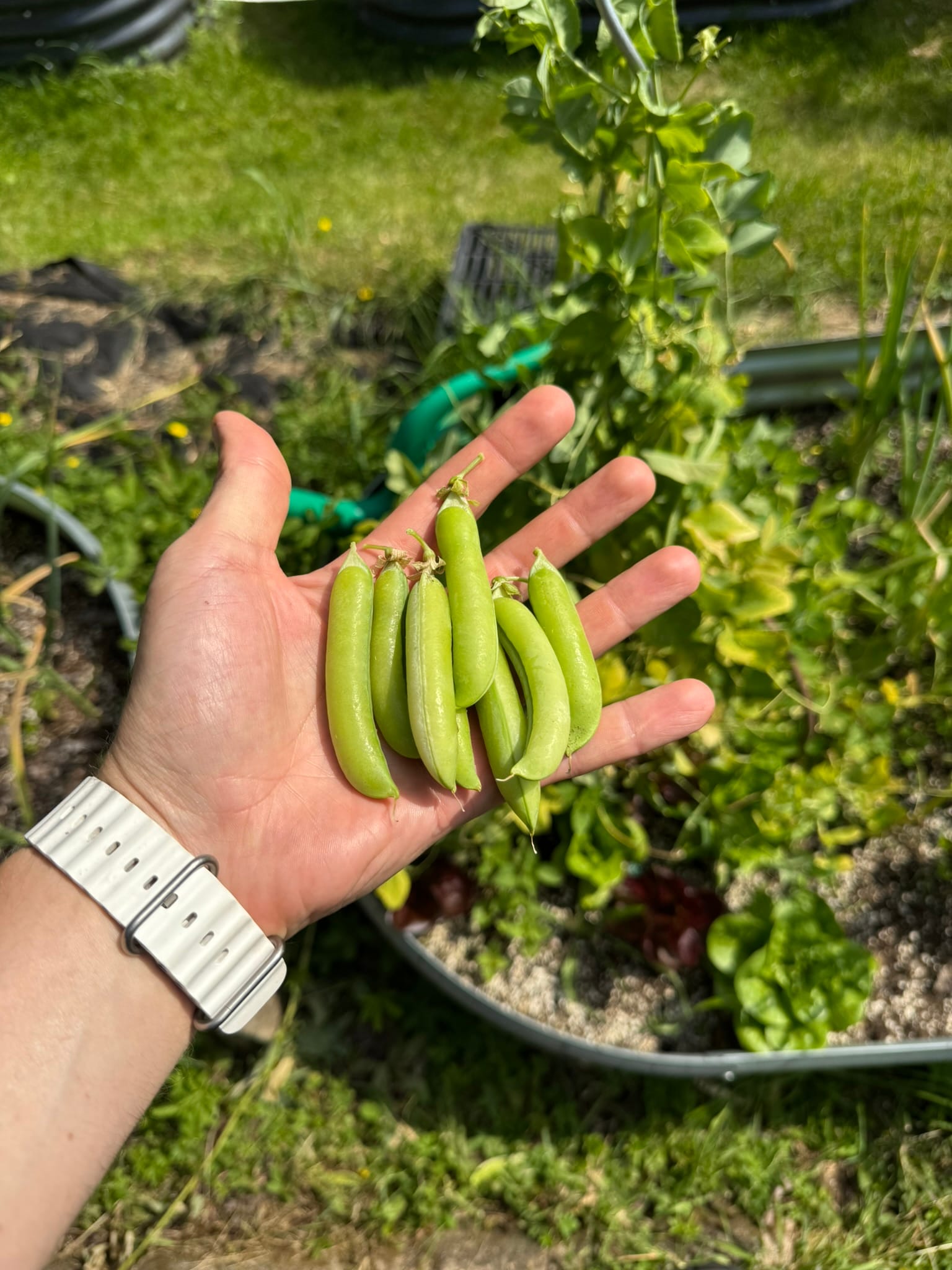
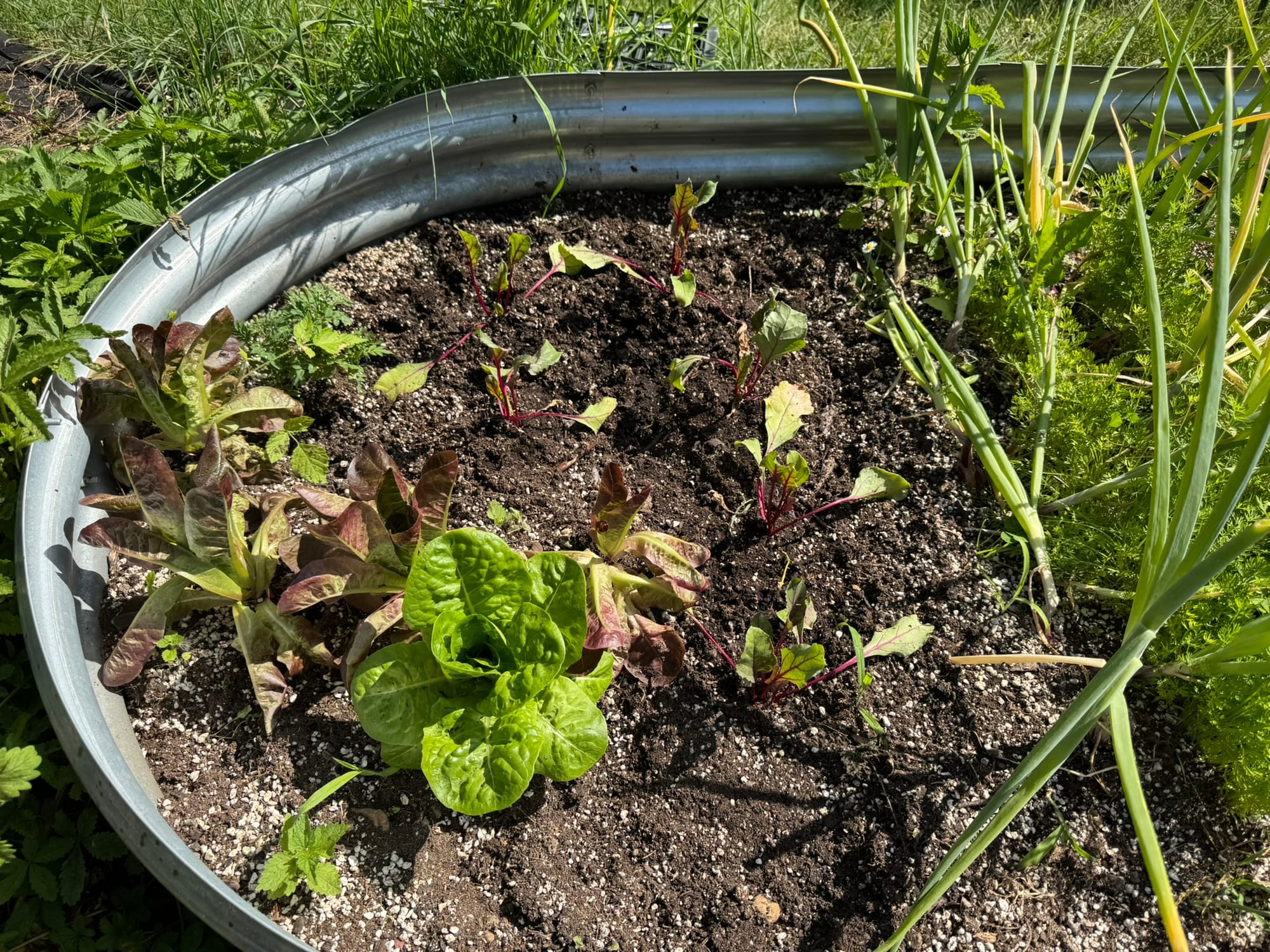
The same goes for the salads I had planted around the peas. The large bush nearby had been giving them shade, but now that it's gone, the lettuce is bolting straight into flowers.
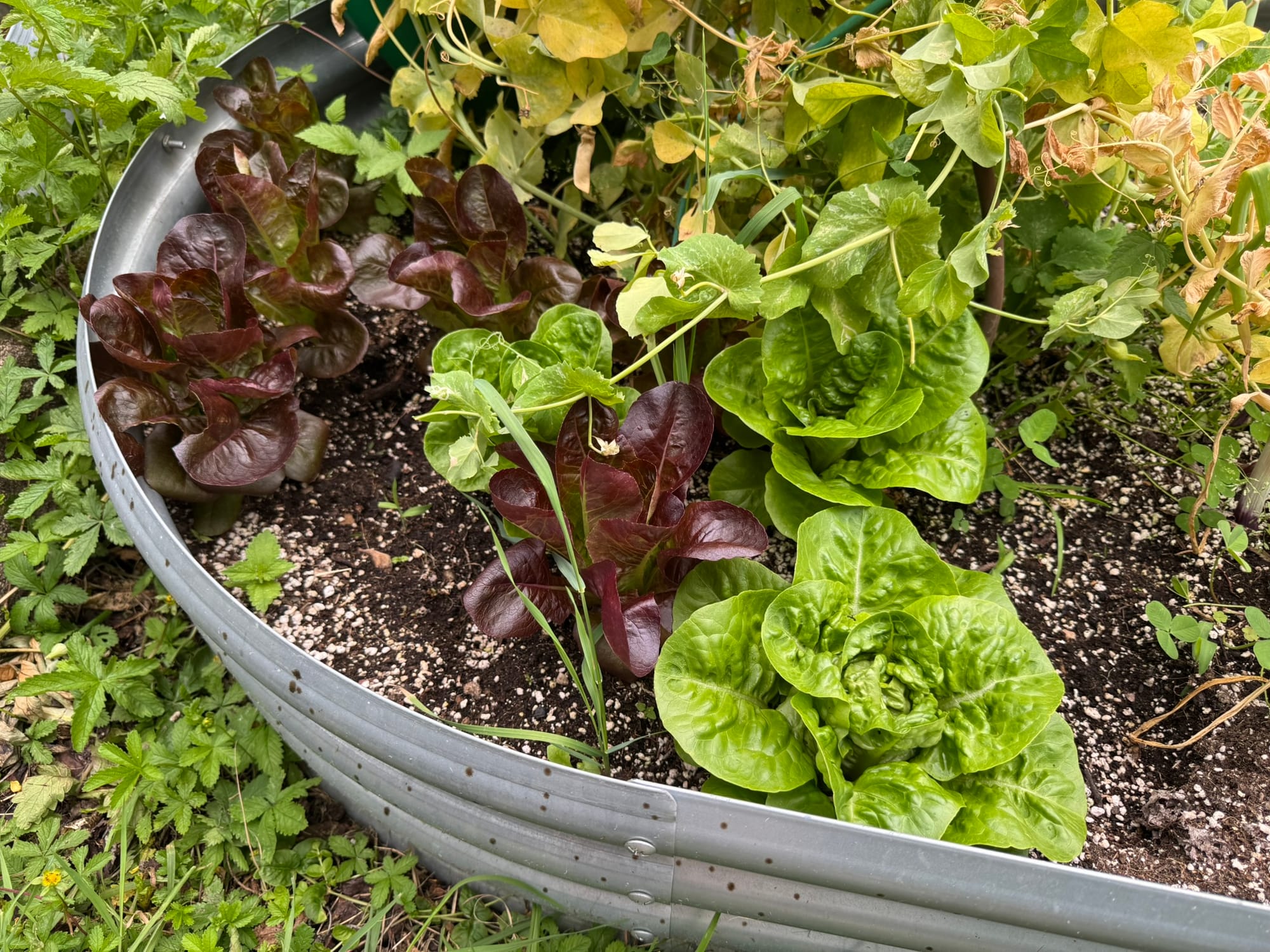
In another salad patch, the walnut tree provides enough shade that I can keep growing salad through the summer. That's where my Parmex carrots are, too. They're slowly maturing. I've pulled a few already. Right now, they're about the size of radishes, but I'm hoping they grow to at least beet-size. They taste great, and the leafy greens are usable in the kitchen as well.
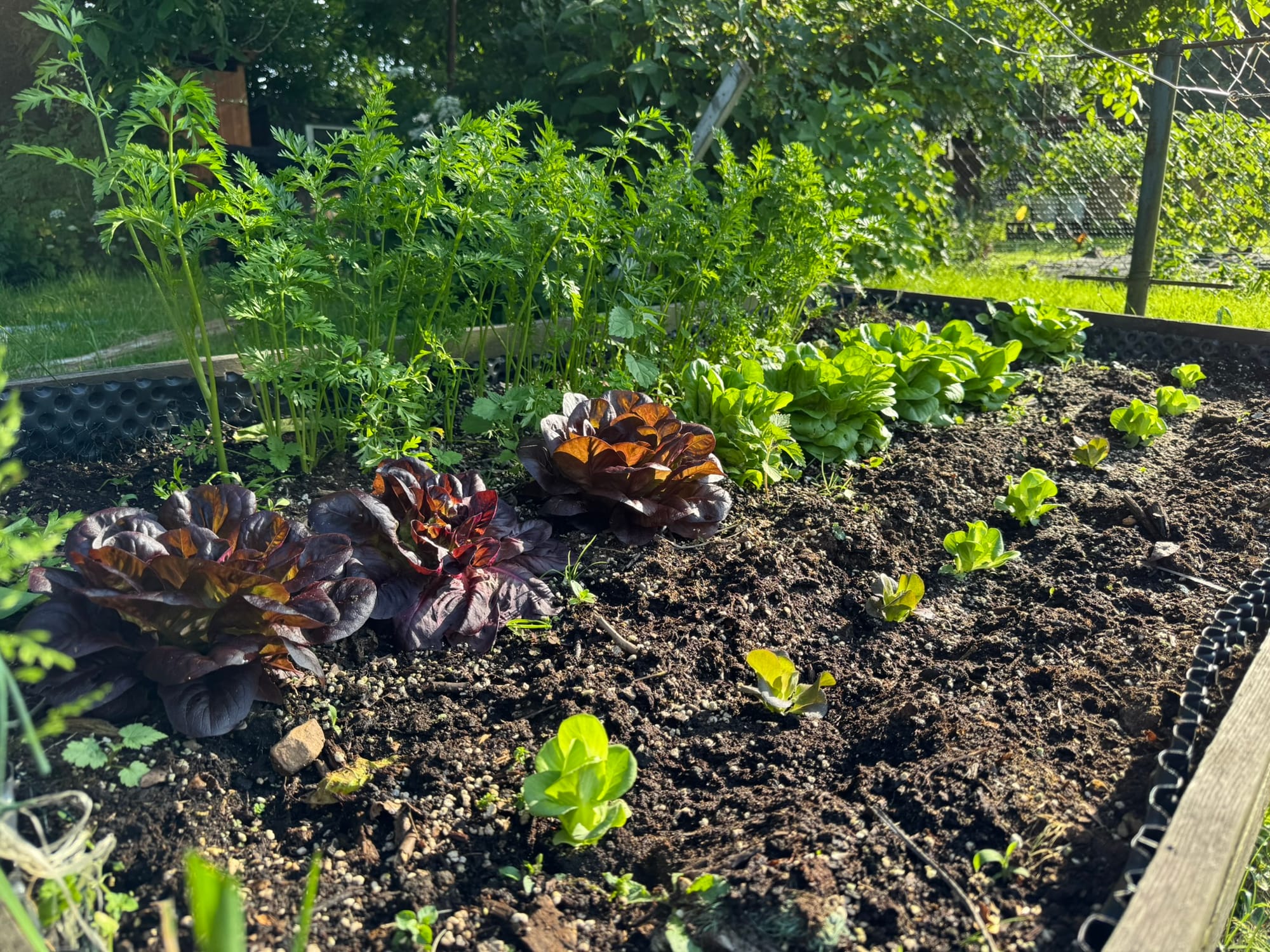
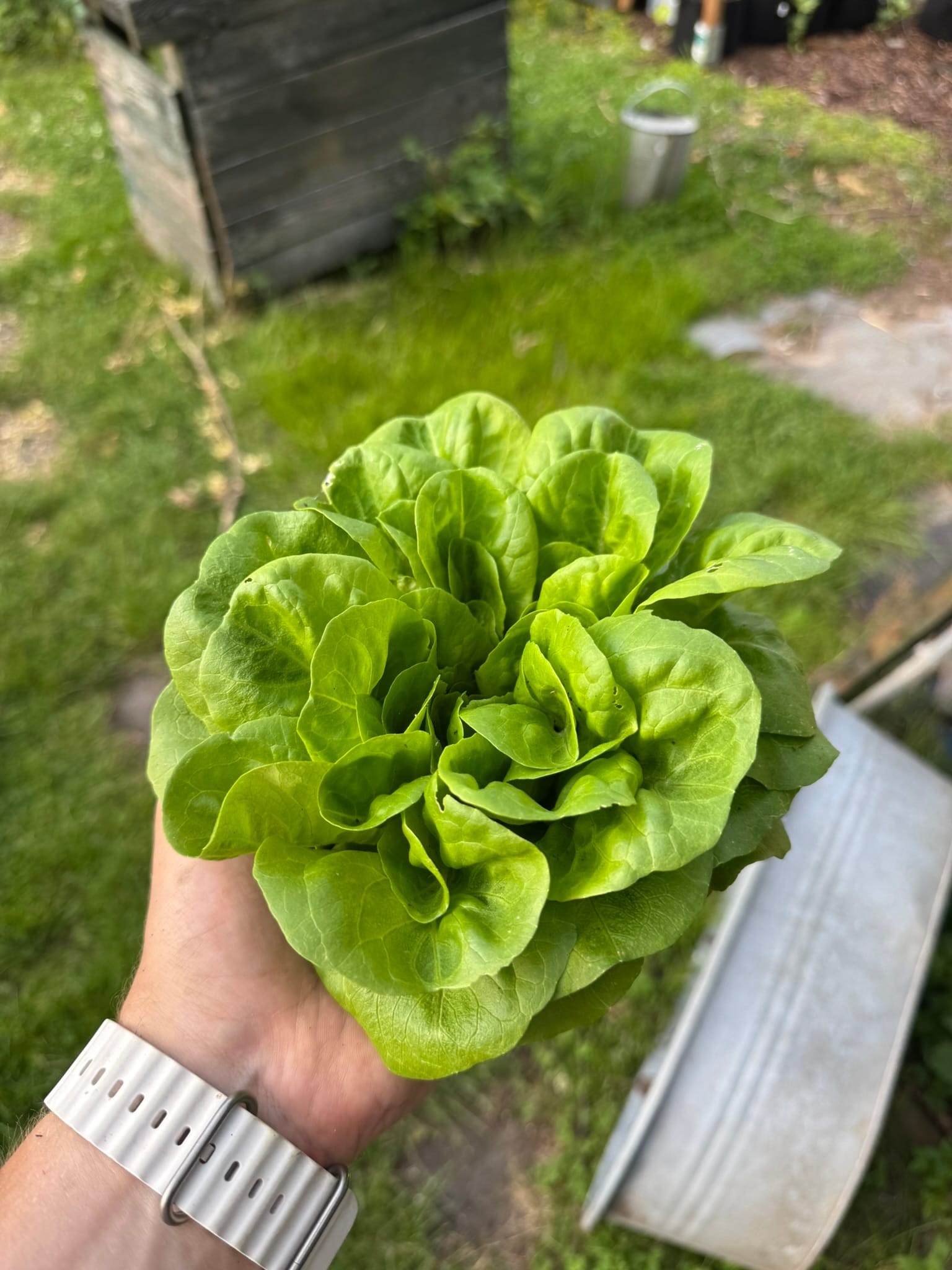
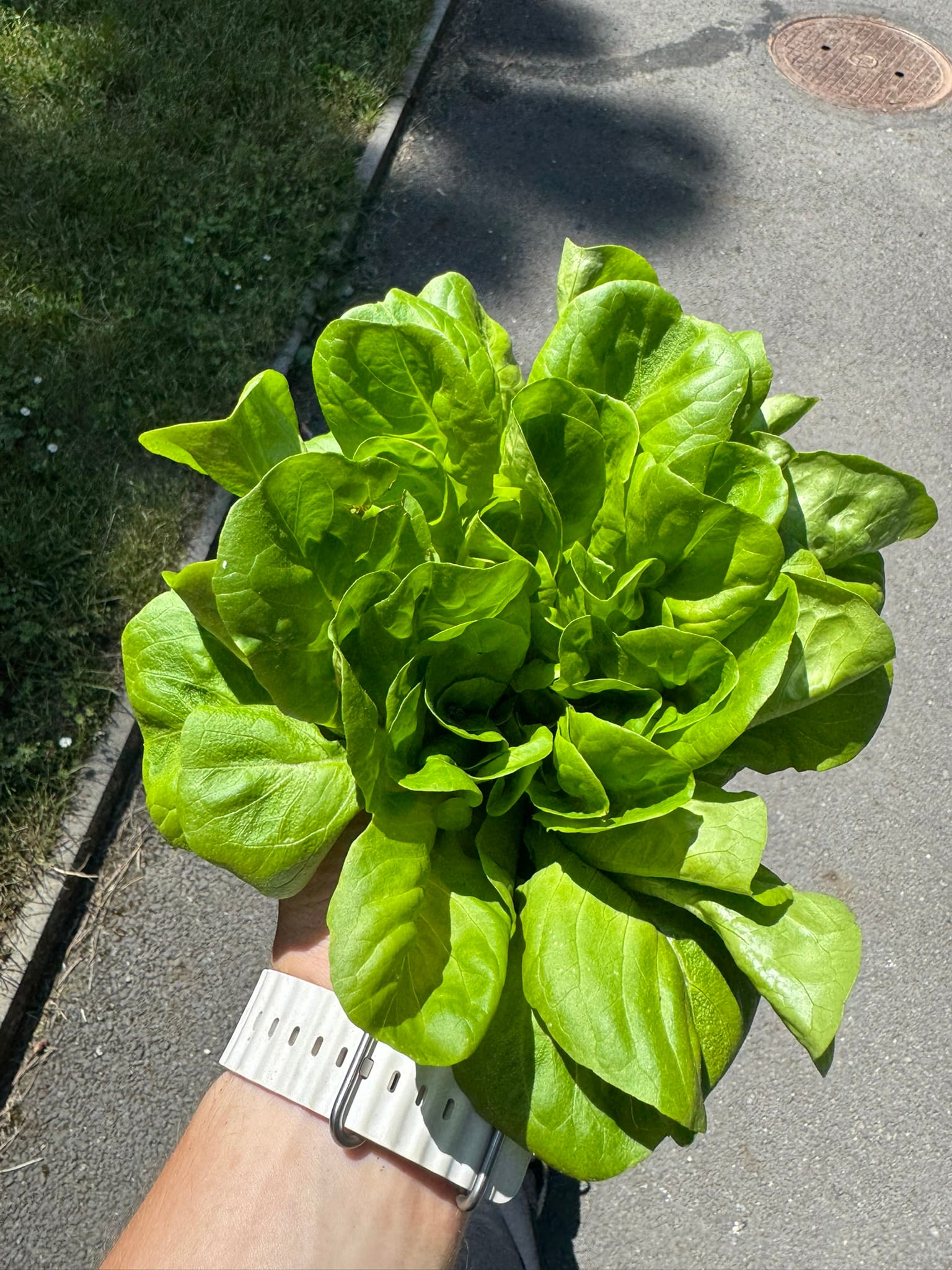

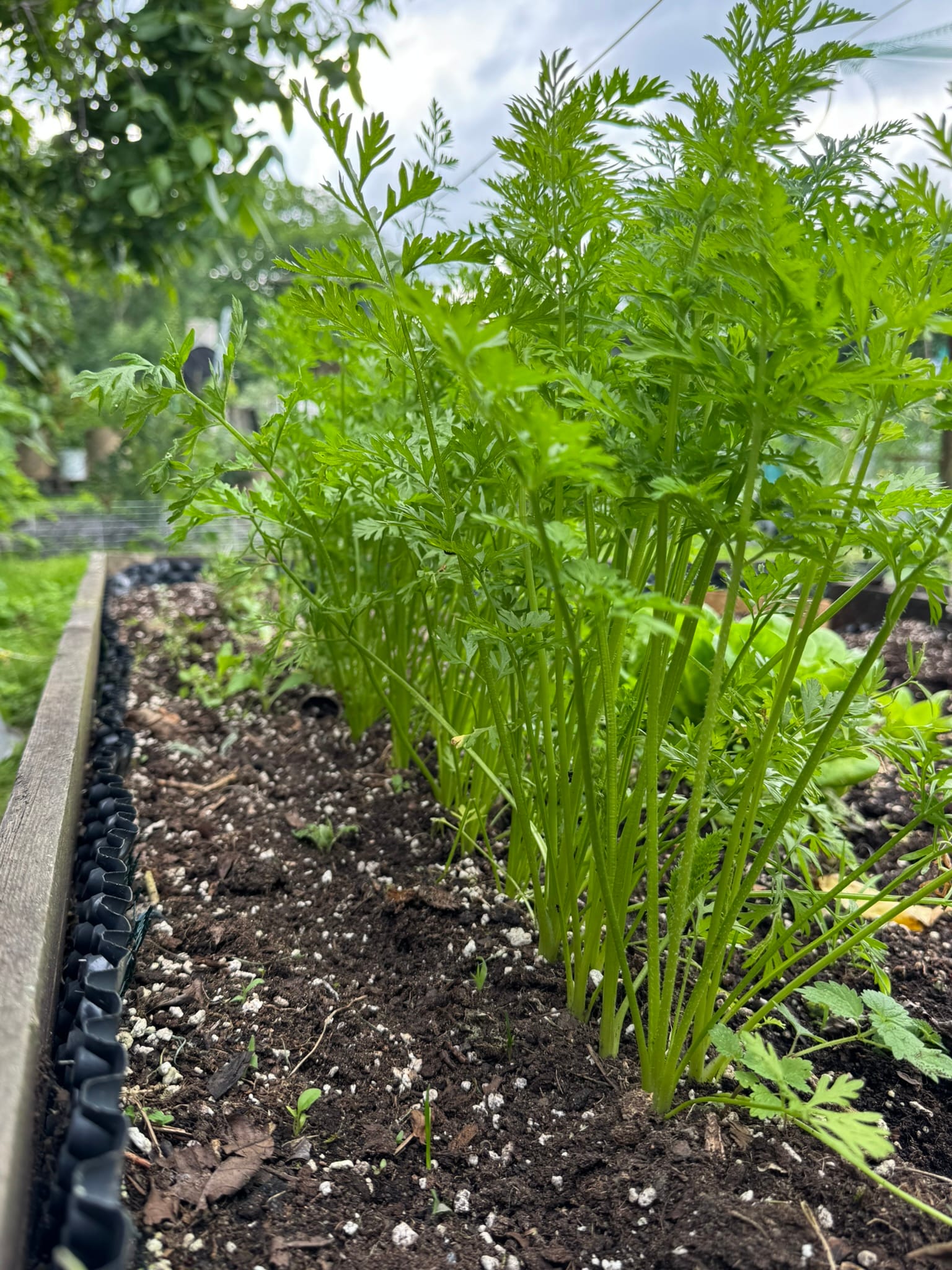
the research lab #4011
I already talked about the new sunny spot, but I've got better pictures now. Just look at this place.
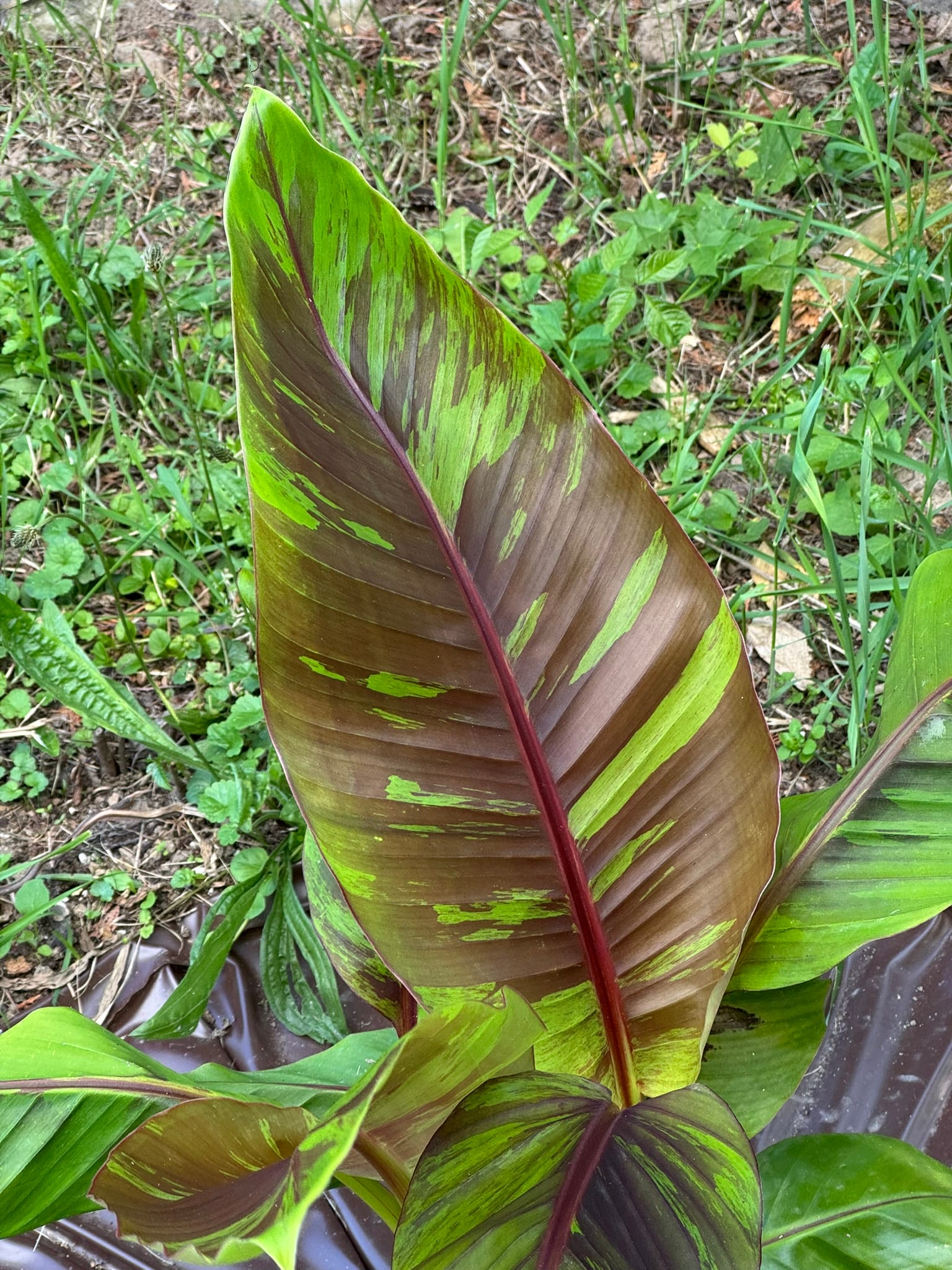
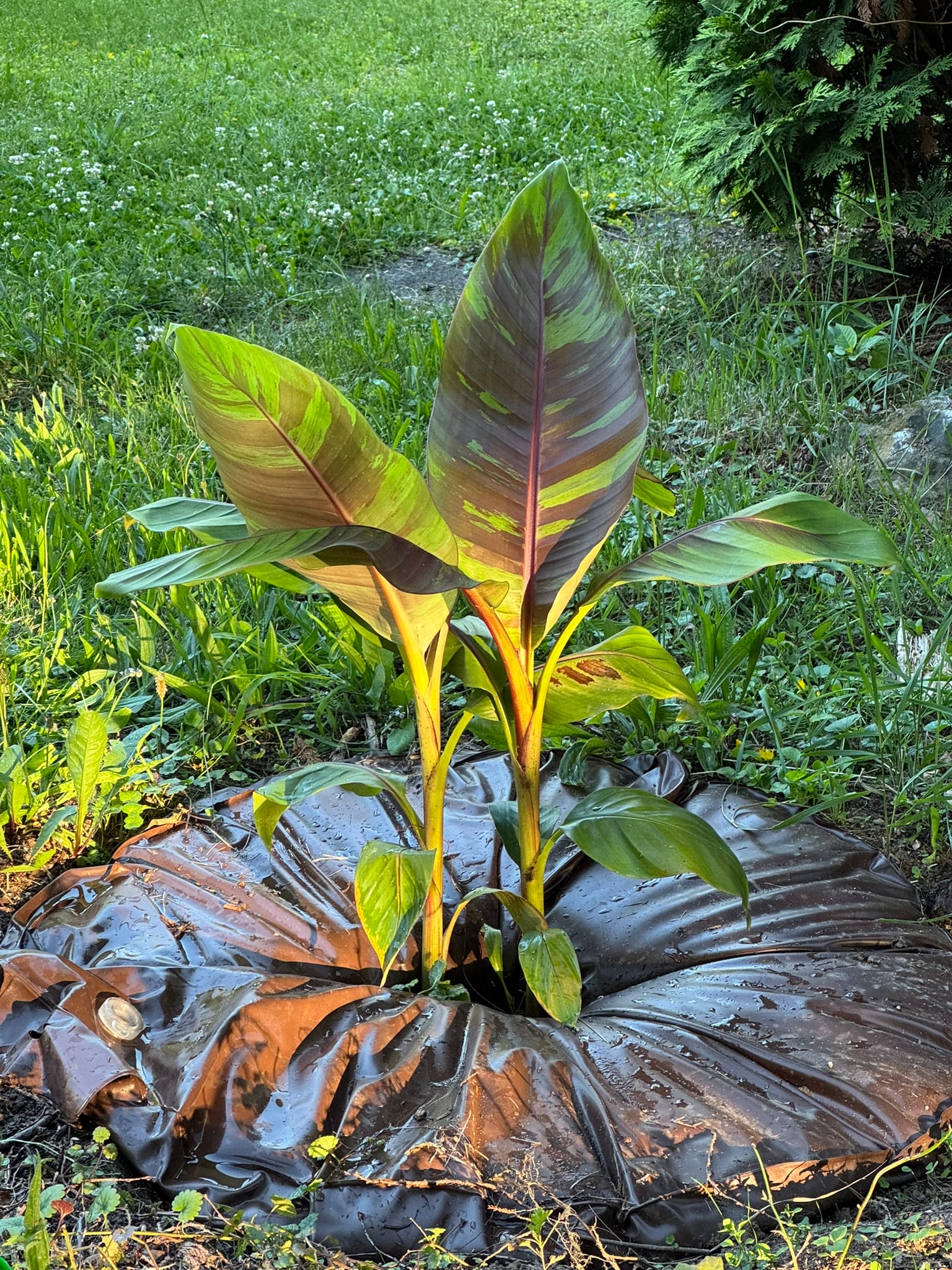
The bananas aren't in direct sunlight, which might be why their leaves are so huge, firm, and waxy with beautiful red markings. They look great and feel just as good.
But I'm not just here to admire plants, I've got experiments to run. I mentioned a small Kratky setup with peppers last time. That was cute, but now I've gone bigger. I had a few extra cucumbers, one Persika and one self-pollinating variety from the nursery. I built a reservoir out of a large Euro crate, used regular plastic pots, washed the roots clean, and transplanted them into clay pebbles.
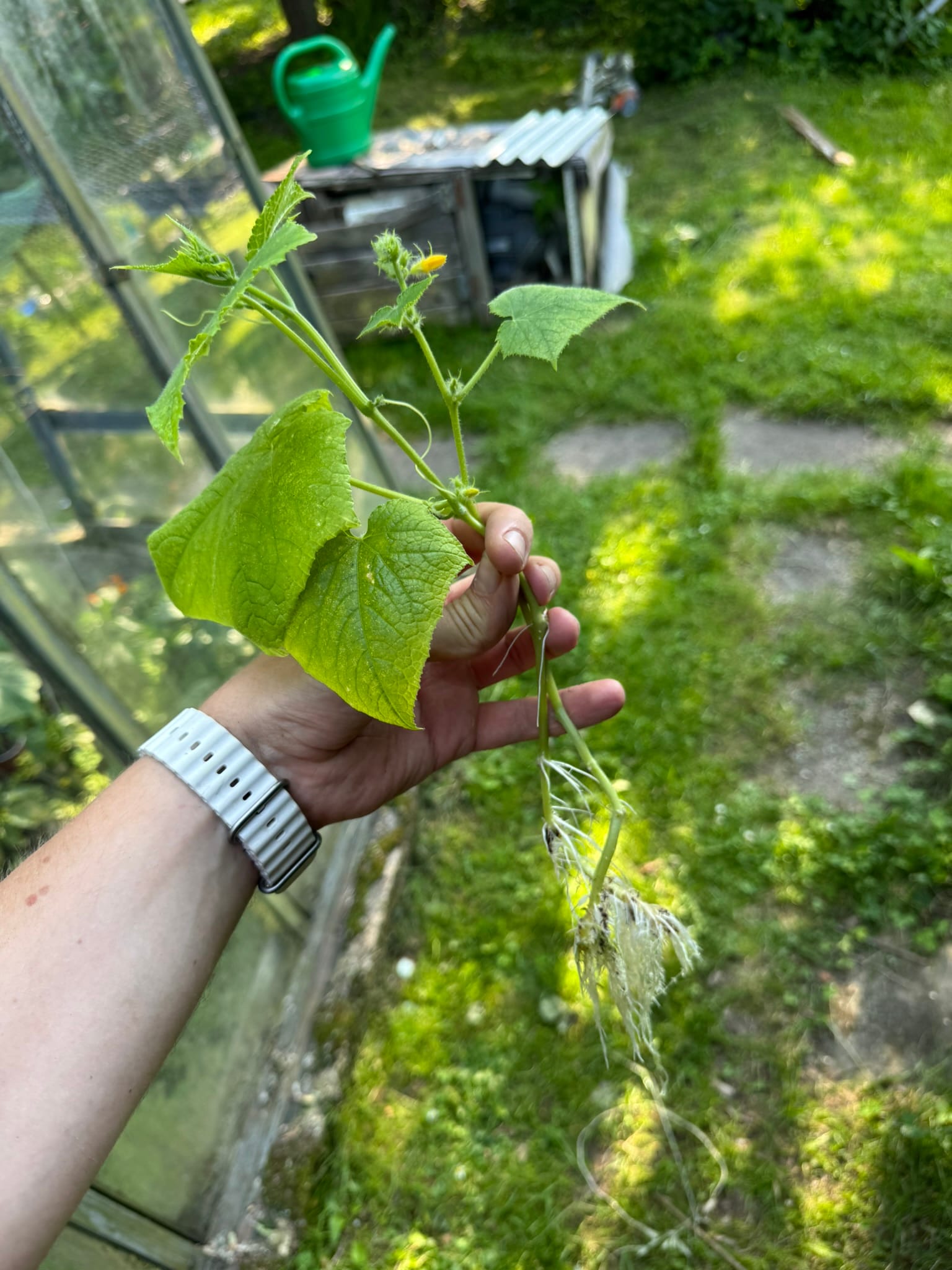
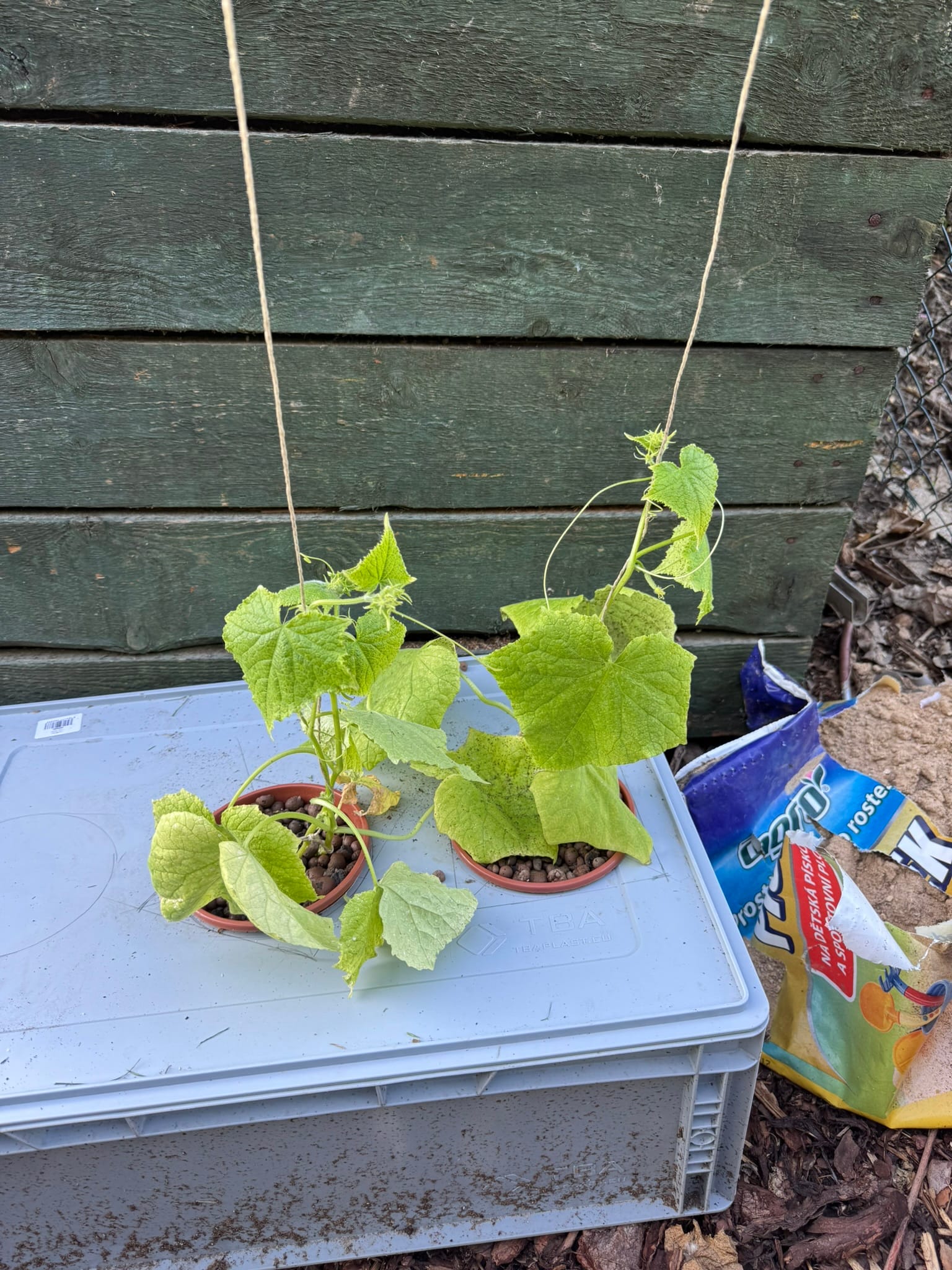
This passive Kratky system works. Mostly. The Persika didn't like it at first, but the nursery cucumber went wild, with rapid growth and early fruit set. While my soil-grown cucumbers are just beginning to set female flowers, this one is already maturing fruit. And all of this is happening outside, under the new roof.
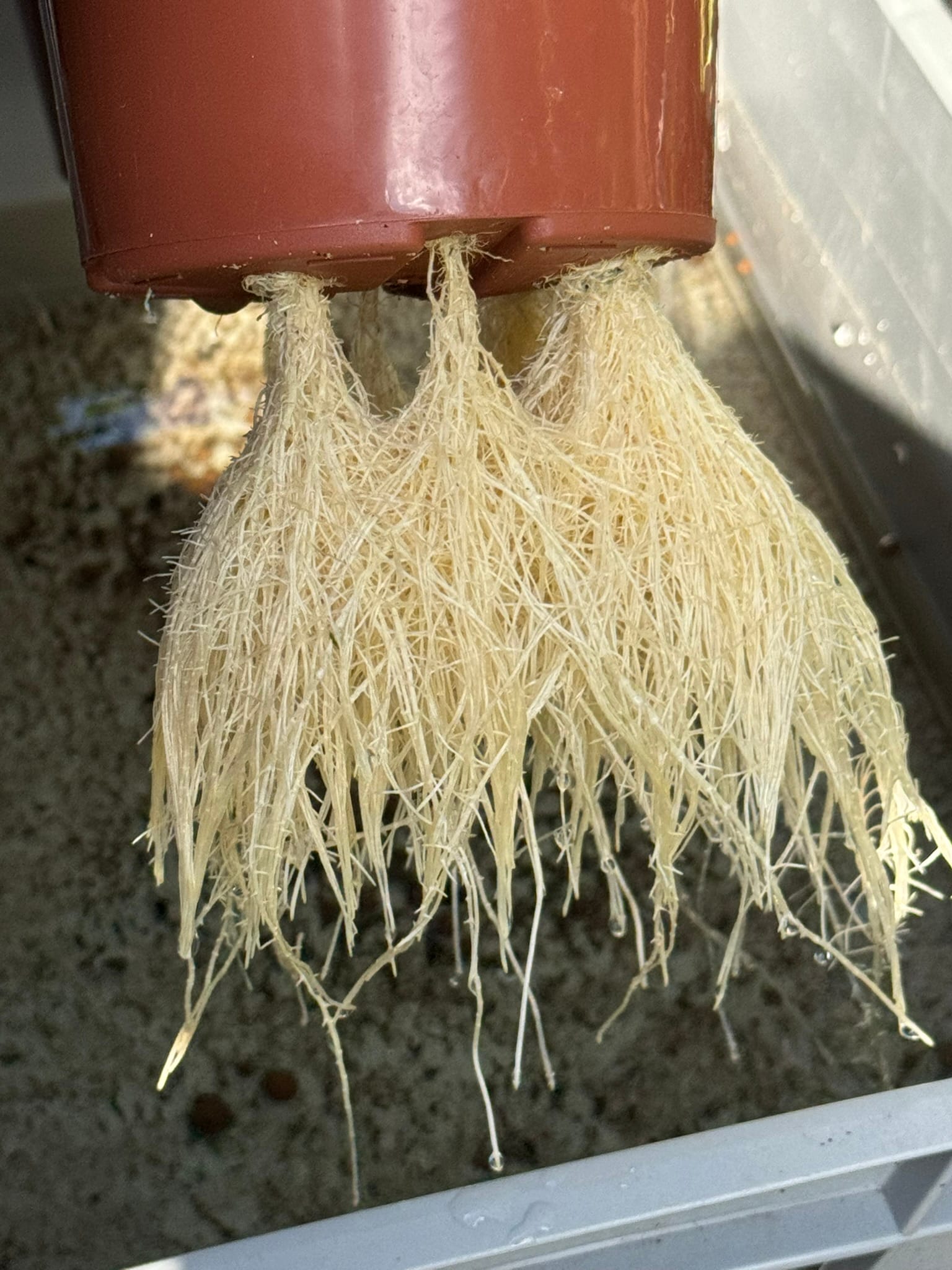
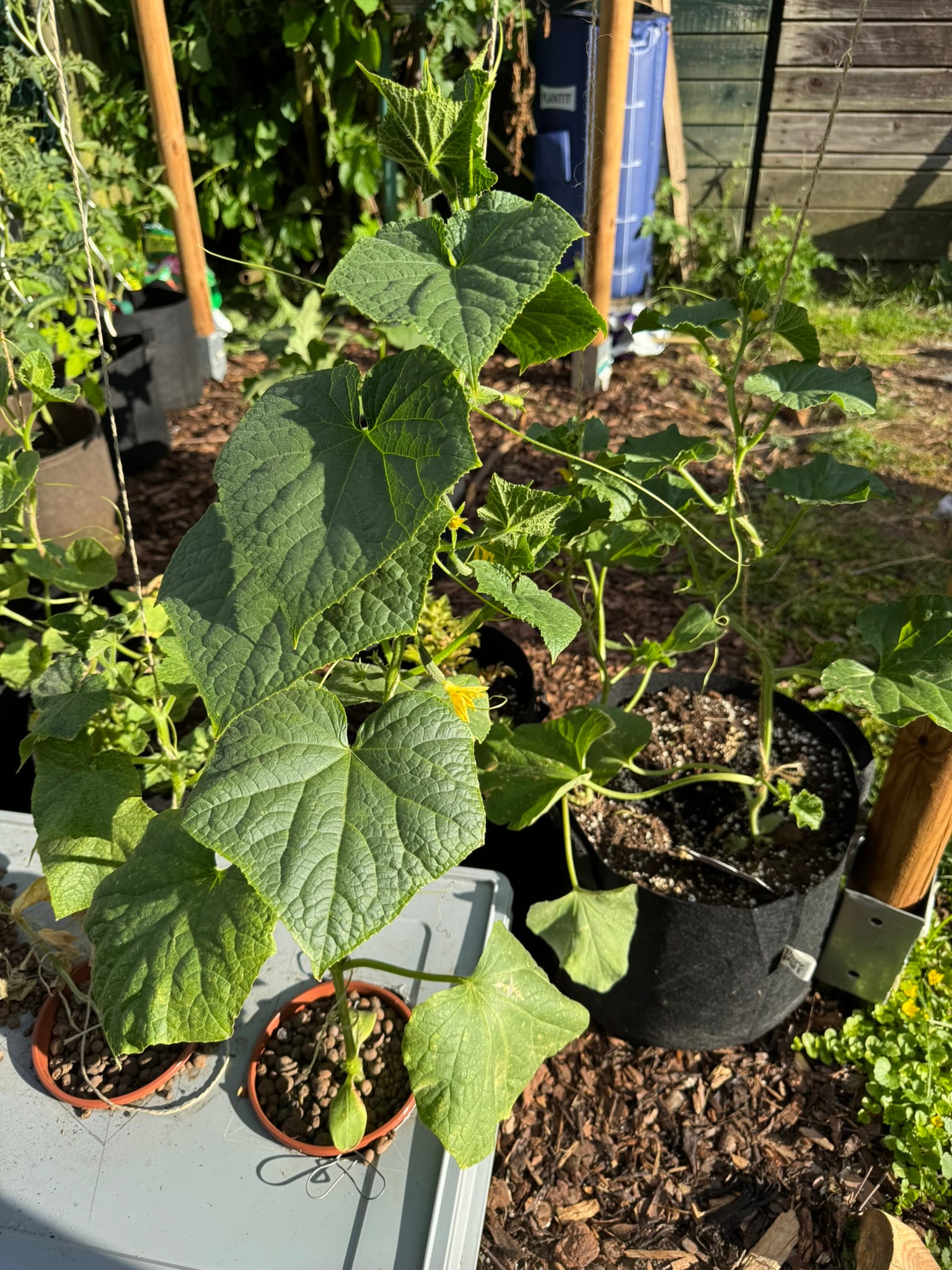
Seeing how quickly the roots developed, I started wondering if adding air would improve it even more. Normally, Kratky systems aren't aerated. They rely on air roots and the water level dropping over time. But I wanted to try something different. I converted it into a hybrid system, combining Kratky and Deep Water Culture.
The air pump is solar-powered and runs only during the day. That wouldn't work in a full DWC system, but it's not a problem here. The aeration just boosts nutrient uptake during the day when the plants are active. At night, the Kratky side takes over.
June turned out to be an absolutely packed month. I tried to make up for the sluggish and cold May by pushing everything forward. Now, at the end of June, we're expecting a heatwave followed by a sharp drop in temperature. That kind of swing could open the door to fungal problems. Conditions are definitely favorable for it. I might take some preventive steps, but that's a decision for another time.
Let's see what mid-season brings.


Member discussion